











www.gohealthier.com.au 1 ACNE. Does it affect you? REIKI the money to you! Follow the STARS to your destiny FREE! TAKE ME! Subscribe Online Now! gohealthier.com.au WIN! WIN! WIN! WIN! WIN! WIN! WIN! WIN! WIN! WIN! WIN! WIN! WIN! WIN! WIN! WIN! WIN! WIN! WIN! WIN! WIN! WIN! WIN! WIN! WIN! WIN! WIN! WIN! WIN! WIN! WIN! WIN! WIN! WIN! WIN! WIN! WIN! WIN! WIN! WIN! WIN! WIN! WIN! WIN! WIN! WIN! WIN! WIN! Issue 02 @gohealthiermagazine facebook.com/gohealthiermagazine

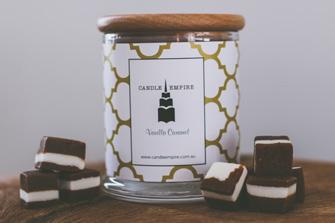

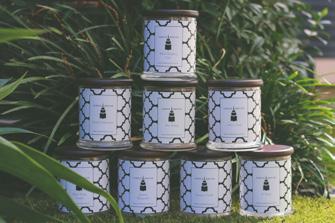

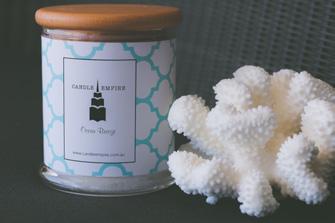
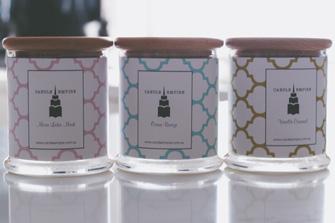
2 www.gohealthier.com.au Hand poured on the Mornington Peninsula. Natural soy candles. Premium grade essential oils. Decorative labels. Facebook @candleempire | Instragram @ candleempire | www.candleempire.com.au Customised candles available

@Tamlynpatersonphotography
16
Hand poured candles from the Candle Empire
Letter from the Editor
There’s no time for dry eye with 20/20 Sight + Style Optometrist




Clarity Dental Care tell say NO to Sugar
Signs your child needs an orthodontic evaluation
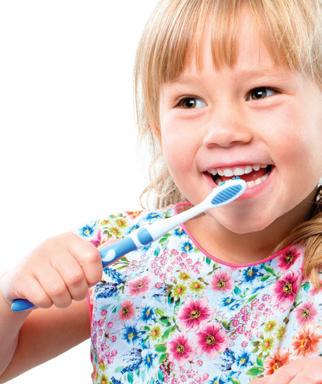
Daryl Morrison explains what a Dental Prosthetist is.
MP Skin Check share the importance of detecting melanoma early


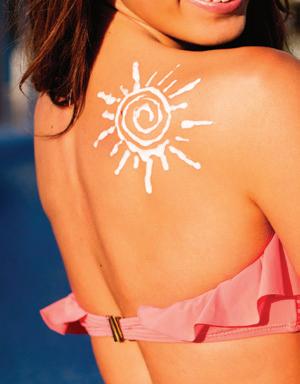
24
18 Clarity Cosmetic have you covered with cosmetic procedures
21 Health Benefits of Goji Berries
22 Turn back the clock on aging at Australian Laser and Skin clinics

24 McCrae Clinical Therapies help us understand Acne



26 Learn all about Enzymatic therapy with Zenyu Skin and Beauty

28 Top tips for healthy hair with Onyx Hair Salon
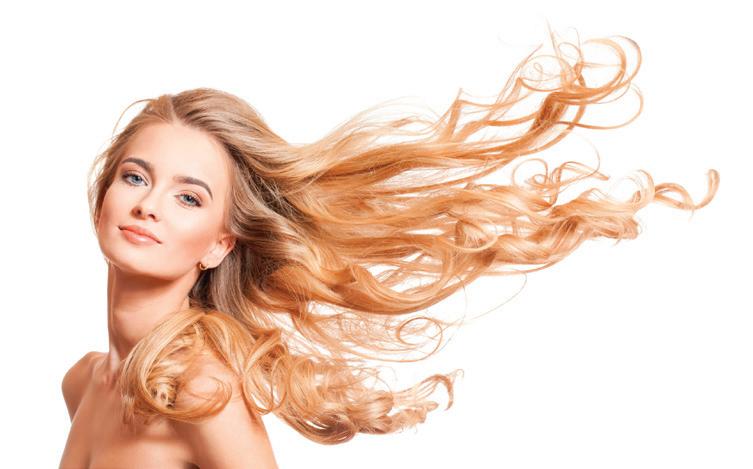
30 The Natural Health and Wellness Clinic explain different massage types
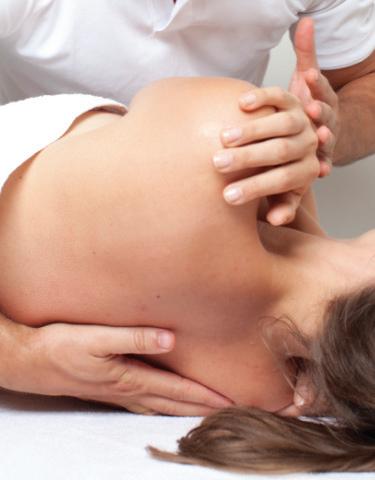
32 Taking preventative measures when it comes to spinal health with Mornington Family Chiropractic
34 Find out what an Osteopath can do for you
36 Learn how to build strength and endurance with Wolfe Den CrossFit
38 Womans guide to prolapse and how mindful exercise can help
IMPORTANT Articles are for information purposes only and are not a substitute for medical advice or to be relied on for diagnosis or treatment. The authors and publisher accept no responsibility for medical decisions made. The authors and the publisher assume no liability or responsibility for damage or injury to person or property arising from any use of any products, information, idea or instruction contained in any article in this publication. Always seek advice from a qualified medical practitioner if you think you are suffering from a medical condition. Contact AHPRA www.ahpra. gov.au to make sure your practitioner is qualified and registered to practice within the scope of their registration or call 1300 419 495.
4 www.gohealthier.com.au Contents
10
IN THIS ISSUE
28 16
34 Cover - @Tamlynpatersonphotography ACNE. Does it affect you? REIKI the money to you! Follow the STARS to your destiny FREE! TAKE ME! Subscribe Online Now! gohealthier.com.au WIN! WIN! WIN! WIN! WIN! WIN! WIN! WIN! WIN! WIN! WIN! WIN! WIN! WIN! WIN! WIN! WIN! WIN! WIN! WIN! WIN! WIN! WIN! WIN! WIN! WIN! WIN! WIN! WIN! WIN! WIN! WIN! WIN! WIN! WIN! WIN! WIN! WIN! WIN! WIN! WIN! WIN! WIN! WIN! WIN! WIN! WIN! WIN! WIN! WIN! WIN! WIN! WIN! WIN! WIN! WIN! WIN! WIN! Issue 02 @gohealthiermagazine facebook.com/gohealthiermagazine
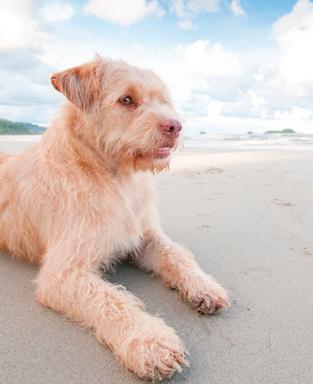
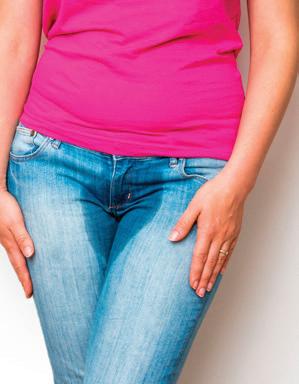

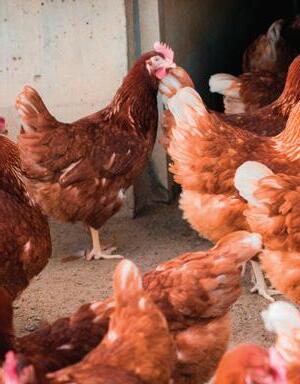

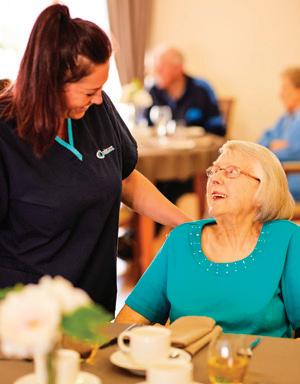
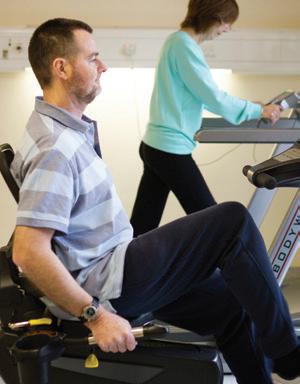

www.gohealthier.com.au 5 Contents 41 Health Benefits of Kiwi Fruit 42 How much radiation are you being exposed to in your home? 44 Conscious mind versus subconscious mindHypnotherapy 46 Find out what Kinesiology is, and how it can help you 48 Wealth and wellness: Create abundance with money Reiki 50 Using Astrology to find your calling 52 Spotlight on before during and after having a STROKE 54 Understanding the benefits of rehabilitation 56 Beleura Health Solutions reveal the benefits of Hydrothrerapy 58 Health benefits of Oranges 60 Discover the best aromatherapy oils for winter 62 Learn all about the benefits of meditation 64 How kids find fulfilling friendships and real relationships in today’s times 66 Discover naturopathy with Mary Allen Bernales 68 Eat yourself happy! 70 Gut gardening tips from GoodMix Superfoods 72 Health Benefits of Avocado 74 Top five tips on how to prepare for your little one’s arrival 76 Working on your speech sounds with the help of Peninsula Speech Pathology 79 Health benefits of Superfoods 80 Unlock the key ingredients to a healthy relationship 82 Suicide - A Mothers story 85 Health Benefits of Almonds 86 What to look for in an aged-care facility 88 Subscribe online to win fantastic prizes each month! 90 Can animal physiotherapy help your pet? 92 Naturopathy for animals 94 Discover the healing power of Honey with Peninsula Honey 96 The new free range egg code cracked 97 Farm fresh eggs at Somerville Free Range Egg Farm 98 Health Benefits of Coconut oil 99 Is your business signed up for the Peninsula’s only health and wellbeing directory? 100 ???? 38 48 54 62 96 86 70 92
Disclaimer: Articles are written and provided by independents and paid advertisers and form part of an advertising agreement. The information printed has not in any way or form been written or supplied by Go Healthier – Wellness comes first. No part is to be reproduced without the consent of the copy right holder. The publishers believe all information printed and supplied was correct at the time of printing. They are not however able to make guarantees to this effect and accept no liability in the event of any information proving inaccurate. All details and information after investigation and to the best of Go Healthier – Wellness comes first knowledge and belief was up to date at the time of printing, but as time passes this may change in some cases. It is not possible for the publishers to ensure that the advertisements which appear in this publication comply with the trade practices ACT, 1974. The responsibility must therefore be on the person, company or advertising agency submitting the advertisement for publication. While every endeavour has been made to ensure complete accuracy, the publishers cannot be held responsible for any errors or omissions.
Go Farmer Pty Ltd owns Go Healthier – Wellness comes first having full rights to all intellectual property.

The Magazine will also be published online www.gohealthier.com.au for virtual viewing.
Privacy Policy
We value the integrity of your personal information. If you provide personal information through your participation in any competitions, surveys or offers featured in this issue of Go Healthier – Wellness comes first, this will be used to provide the products and services you have requested and to improve the contents of the magazine. Your details may be provided to third parties who assist in this purpose. In the event of organizations providing prizes or offers to our readers, we may pass your details on to them. From time to time, we may use the information you provide us to inform you of other promotions, services or events. We may also give your information to other organisations which may contact you to inform you about their products unless you tell us not to do so. You are welcome to access the information that we hold about you by getting in touch with our Privacy Officer who can be contacted at Go Healthier – Wellness comes first 8456 6570
6
Letter From the Editor All enquiries are welcomed Go Healthier under Go Farmer Pty LTD EMAIL sales@gohealthier.com.au Phone 03 8456 6580 FAX 03 8456 6580 13a Fuji Cres Mornington VIC 3931 www.gohealthier.com.au @Tamlynpatersonphotography
www.gohealthier.com.au
We’re back! Time flies when you’re having fun.
It’s been an amazing six months discovering and embracing the incredible health and wellness industry that our beautiful Mornington Peninsula has to offer.
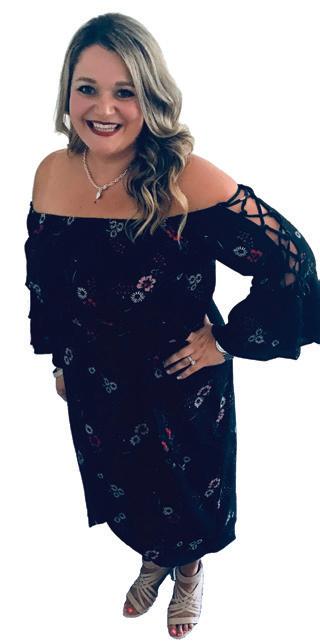
Our promise was to deliver a magazine filled with educational health information to empower the community, and that’s what we’ve done. It’s all about sharing wellness knowledge and inspiring others to take charge of their health.

The Mornington Peninsula community has embraced Go Healthier and the feedback local email database of subscribers has surpassed the 10K mark! That’s incredible - a big support.
We will continue on our mission to be true to who we are and offer a high-quality magazine that thrives on community connection. This is a local community magazine on Health and Wellness so our priority is to support local businesses and products available here, which we hope in turn directs you all to better wellbeing. It’s great to see the local community already using Go Healthier as a source for referral and recommendation. I’m so proud to say that after so many years in print media, I finally get to do what makes my heart sing: educate and empower the community while supporting local business.
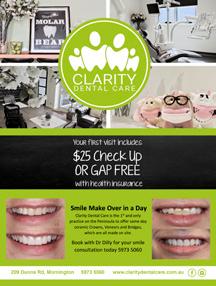
In this issue we shine the spotlight on skin health from anti-ageing treatments to acne and learning about melanoma. The education continues with articles on aromatherapy to treat winter ills, naturopathy for you – and your adored pets, how rehabilitation works (with an in-depth feature on stroke and the signs you need to know) plus discover how CrossFit can change your body, and many more stories to inform and inspire.
Go Healthier – Wellness comes first aims to be your one-stop shop for anything you need and want to learn about health and where to go to improve it on the Mornington Peninsula. We endeavour to answer questions that you may not have thought of or those that you just don’t want to ask.
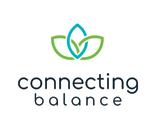
Our social media channels (Facebook and Instagram) are our biggest forums for communicating with our readers. We share all sorts of health memes, recipes and life-hacks as well as sharing what local health businesses are doing and can offer you. Expect to read about competition giveaways, see interviews with local businesses and follow us on visits to local health-related businesses and events. We welcome you to be part of this.
Visit us at www.gohealthier.com.au our mailing list (or email us subscriptions@gohealthier. com.au) and be part of the Go Healthier will put you in the draw for weekly com petitions that are launched on social media and you will be the first to know of sales, promotions, tips and even secret VIP nights. A big shout-out to for donating amazing prizes for our community, which you will see on page 88-89. This double-page spread is packed with prizes which will be given away monthly to subscribers. Please refer to our terms and conditions.
Remember to spread the word and Go Healthier. Because wellness comes first.
Love and light, Emma Magoulias

www.gohealthier.com.au 7
Letter From the Editor
A1 B1 C1 D1 E1 A2 B2 C2 D2 Holistic Counselling & Hypnotherapy 0415 230 211 www.turningthepage.com.au McCrae Clinical Therapies facebook.com/gohealthiermagazine @gohealthiermagazine
Dry eye disease is a chronic condition that affects millions of Australians. Symptoms include itching, burning, grittiness, redness and secondary watering. The condition, particularly prevalent in women aged above 40 (although increasingly is seen in younger adults), is associated with excessive screen use, air-conditioning and contact lens wear. In some cases an underlying eye disease may be the cause, the individual being unaware of this as they would feel almost no discomfort due to damaged eye nerve function.
What causes dry eye disease?
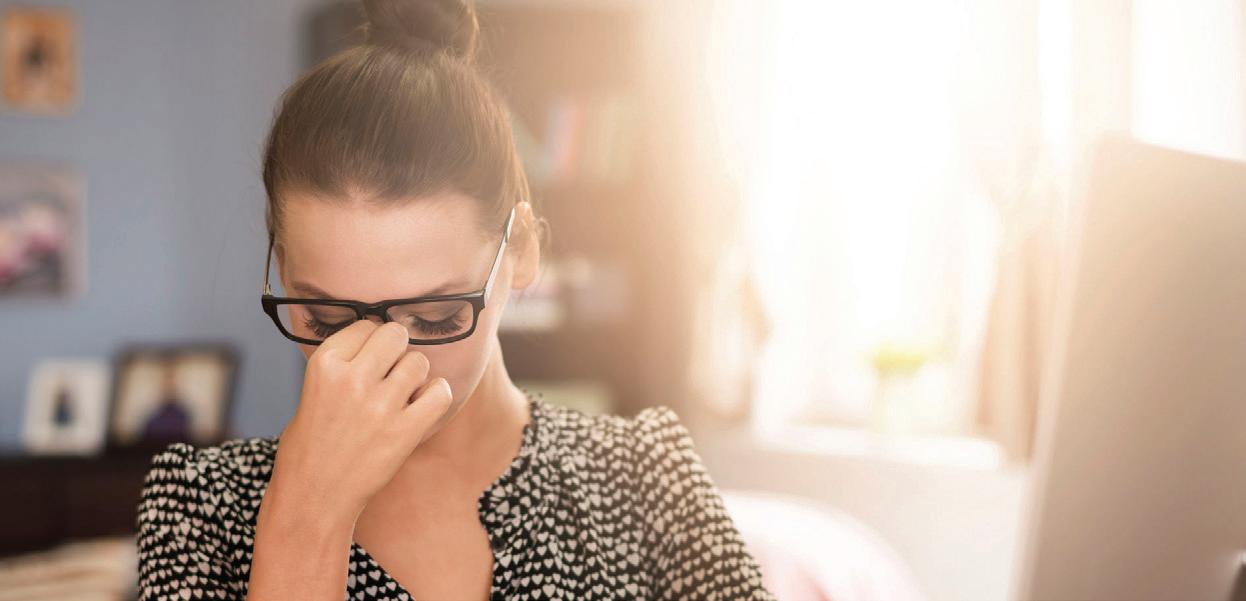
In nearly 80% of cases, dry eye disease is caused in part by inadequate oil being secreted from glands located along the eyelid margin. If the gland openings become clogged or inflamed the lack of critical oils leads to increased tear evaporation, a condition termed ‘evaporative dry eye’. This is now known to be a progressive disease so if left untreated, meibomian gland dysfunction may lead to permanent gland atrophy and significantly worsening symptoms. Once these glands atrophy, they can no longer be repaired and the dry eye disease deteriorates rapidly. Modern treatment is aimed both at relieving symptoms and, critically, at slowing progression of the disease.
Relief from dry eye
While artificial tears provide only temporary relief, new technology means dry eye can now be managed successfully, resulting in healthier eyes, improved comfort and less dependence on eye drops.

Specialised dry eye clinics operate in various locations around Australia. These provide the most advanced assessment and treatment options, combining state-ofthe-art equipment with extended and more thorough clinical chair time. The Oculus Keratograph 5, a sophisticated diagnostic tool, scientifically evaluates the volume and quality of tears present. We are now able to take an infra-red image of the meibomian glands deep within the eyelid to determine the level of gland
THERE’S NO TIME FOR DRY EYE
dysfunction. Thorough assessment then allows one to determine an individualised management plan using a large range of treatment options.
The LipiFlow Thermal Pulsation System is an automated in-office dry eye treatment, based on 25 years of research into the causes of dry eye disease. The innovative Lipiflow electronic applicator fits onto the eye and also over the eyelids and applies precisely controlled heat to the lids to soften hardened meibum. At the same time, the LipiFlow system applies pulsed pressure to the eyelids to open and express clogged meibomian glands, thereby restoring the correct balance of oils in the tear film to relieve dry eye syndrome. Lipiflow treatment is extremely comfortable and takes approximately 12 minutes. The beneficial effects of the LipiFlow procedure last between one to three years. In a clinical study of the effectiveness of the procedure, most patients (76%) reported improvement
8 www.gohealthier.com.au
Optometrists
The lower image shows normal Meibomian glands inside a healthy eyelid, whereas the upper image shows significant gland atrophy leading to Evaporative Dry Eye.
of their dry eye symptoms within two weeks and patients also showed improvement in the quality and quantity of meibomian gland secretions and the duration of time their tear film remained on the eye before evaporating.
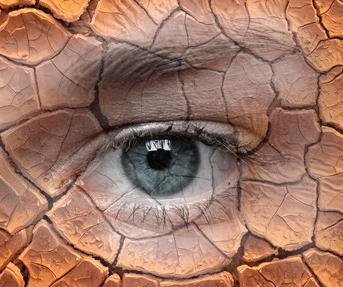
Many thousands of patients with Meibomian Gland Dysfunction (MGD) have now been treated with Lipiflow around the world, including patients in a randomised, controlled, multi-centre clinical trial. This study showed statistically significant improvement, on average, for the number of Meibomian glands yielding clear liquid. The study also showed significant improvement, on average, in patient self-reported dry eye symptoms.
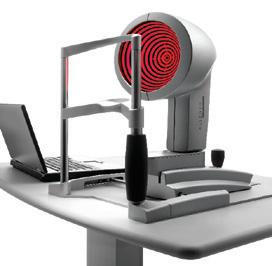
Where necessary, the very best results are achieved by combining Lipiflow Thermal Pulsation with two complimentary in-office treatments.
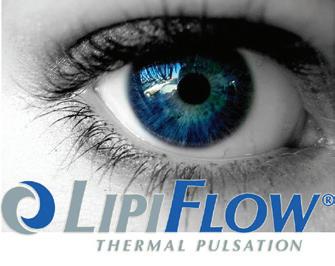
1. BlephEx: A procedure to treat anterior blepharitis and to debride the eyelid surface at the meibomian gland openings. The BlephEx handpiece is used to very precisely and carefully spin a medical grade micro-sponge along the edge of the eyelids and lashes, removing scurf and debris and exfoliating the eyelids.

2. Eye Intense Pulsed Light Treatment (IPL), in which a hand-held device flashes bright light onto the skin, targeting dilated vessels and inflammation on the eyelid glands. Patients usually require three to four IPL sessions to achieve lasting symptomatic relief. IPL has been particularly successful in dry eye syndrome associated with the inflammatory skin condition rosacea.
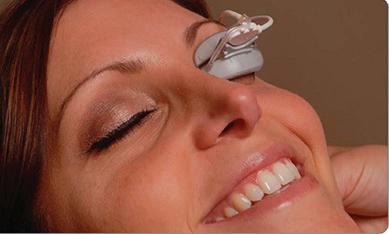
Following treatment, patients are generally amazed at the improvement which we are now able to make to their eye health and comfort.

www.gohealthier.com.au 9
Optometrists
Built up crust and biofilm along the eyelid margins is removed with an in-office BlephEx treatment
5 for detailed Dry Eye Assessment The PENINSULA DRY EYE CLINIC at Combining innovative technology with 20/20 Sight’n’Style’s clinical thoroughness 161 MAIN ST MORNINGTON www.sightandstyle.com.au 03 5973 5520 PRESENT THIS VOUCHER FOR $ 100 off a FULL PRICED LIPIFLOW PROCEDURE Valid to 30 SEOPTEMBER 2018 $100OFF Disclaimer : This article was written and provided by George Sahely . For more information please visit www.sightandstyle.com.au or call 5973 5520
The Oculus Keratograph
The Lipiflow Thermal Pulsation treatment is a comfortable procedure to unblock eyelid glands and help control Dry Eye Disease
A spoonful of sugar?
It’s time to realise that “the mouth is the gateway to your overall health”. The types of food and drink we consume impact both our oral and overall health. The two are intrinsically connected. A point made evident by the World Health Organisation in 2005 when they called for oral health to be integrated with all health care, stating “the compartmentalisation involved in viewing the mouth separately from the rest of the body must cease because oral health affects general health by causing considerable pain and suffering and by changing what people eat, their speech and their quality of life and well-being”.
No thanks Mary Poppins!
We can all recall Mary Poppins singing “a spoonful of sugar helps the medicine go down” and no one would disagree that sweetener makes something that tastes awful easier to swallow, but what is the impact of this association?
Sugar has been added to children’s medicines and vitamins in an attempt to make them more palatable and increase consumption. Over the years, sugar-laden foods, such as lollies, cakes, chocolate and juices, have become staple foods to be enjoyed when feeling happy or sad, when celebrating occasions or dealing with losses and they’re used as a form of reward or bribe too.
Tooth decay and sugar
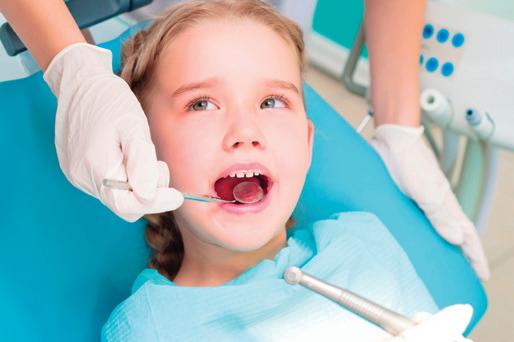
In March, the Australian Dental Association (ADA) and the Australian Health Policy Collaboration (AHPC) published an Oral Health Tracker. The report card looked at the oral health of Australian children and young people in relation to risk factors, oral disease and adverse oral health outcomes. The finding revealed that tooth decay is the most common chronic disease in Childhood. It also stated that poor oral health in childhood is the strongest predictor of further dental disease in adulthood.
Sugar was identified as one of the key risk factors and determinants of poor oral health according to Australia’s Oral Health Tracker technical paper (published in February this year). More than 70% of Children aged 9-18 years are consuming too much sugar. The percentage of children aged 5-6 years who have experienced tooth decay in primary teeth stands at just over 34%. These are all preventable.
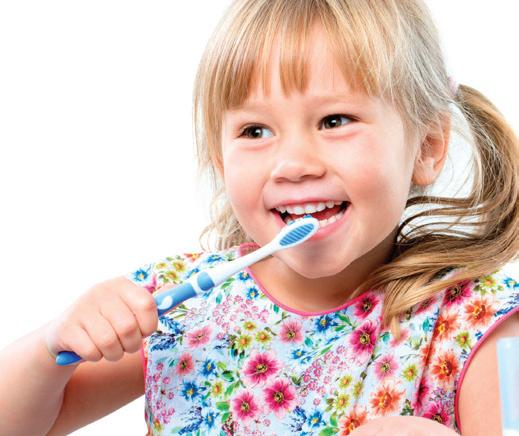
Poor oral health can lead to pain, discomfort, hospitalisation and disease and are also precursors to other health issues such as diabetes and obesity. According to the Oral Health Tracker report card, poor oral health can in later life affect employment, community participation and quality of life.
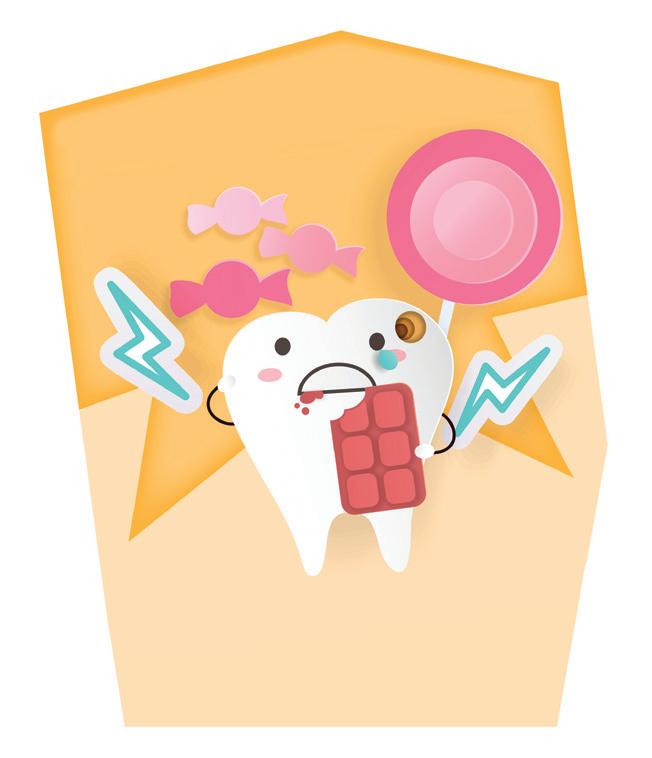
These treats are labelled ‘sometimes’ foods, but that couldn’t be further from the truth. Sugar has become an insidious part of our daily life, and largely due to its strong association of being used to sedate our everyday emotional states of highs and lows.
Positive action by parents, families, governments and the community can help prevent poor oral health across a lifetime. So the next time we reach for that sugar treat to satisfy our kids’ high or low moment, take a pause and think how little changes can have a major overall impact.
10 www.gohealthier.com.au Cosmetic Dental
For more information, an appointment or to check your child’s eligibility for Medicare’s Child Dental Scheme, call Clarity Dental Care on 5973 5060.
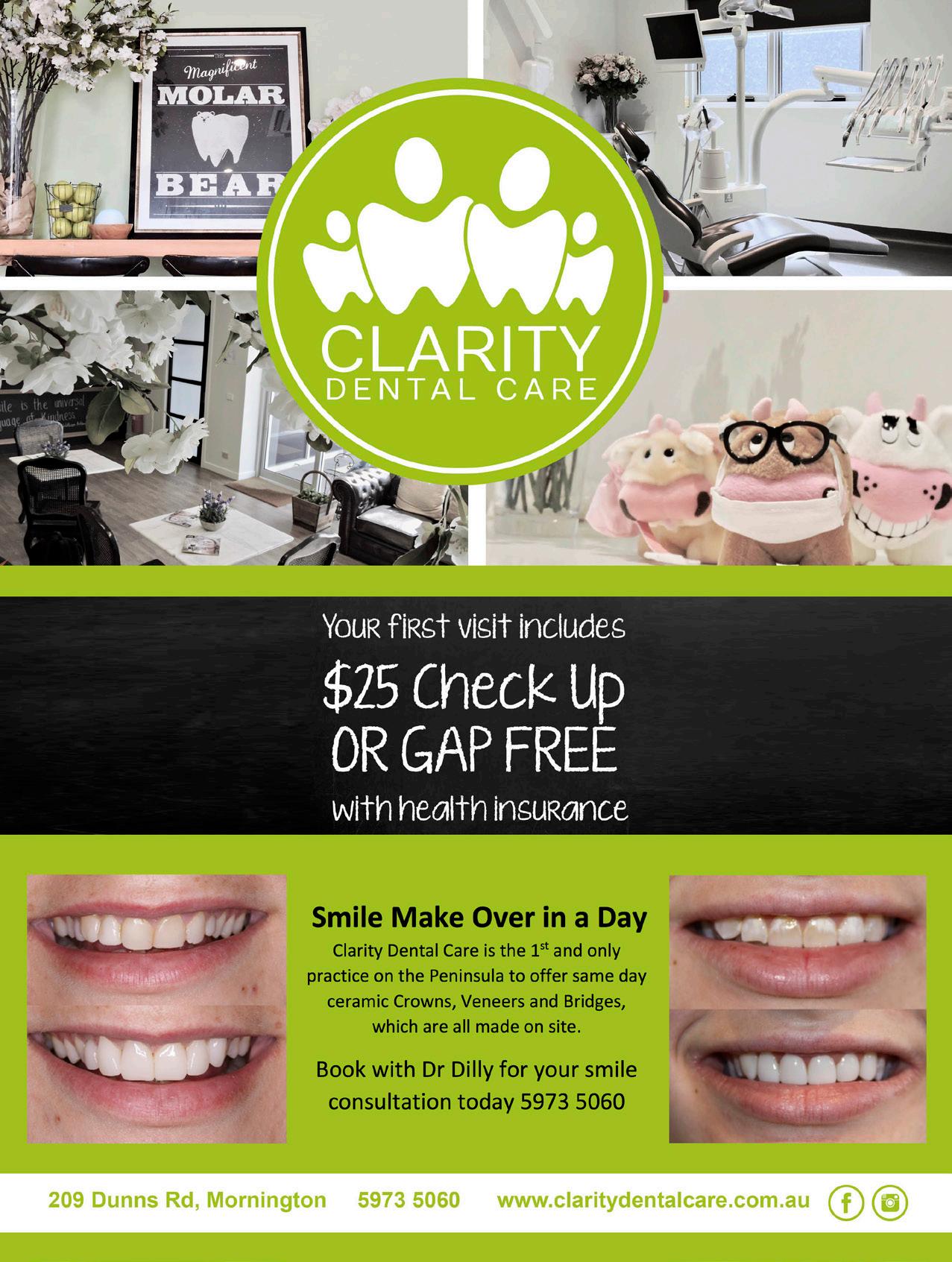
When to see an Orthodontist
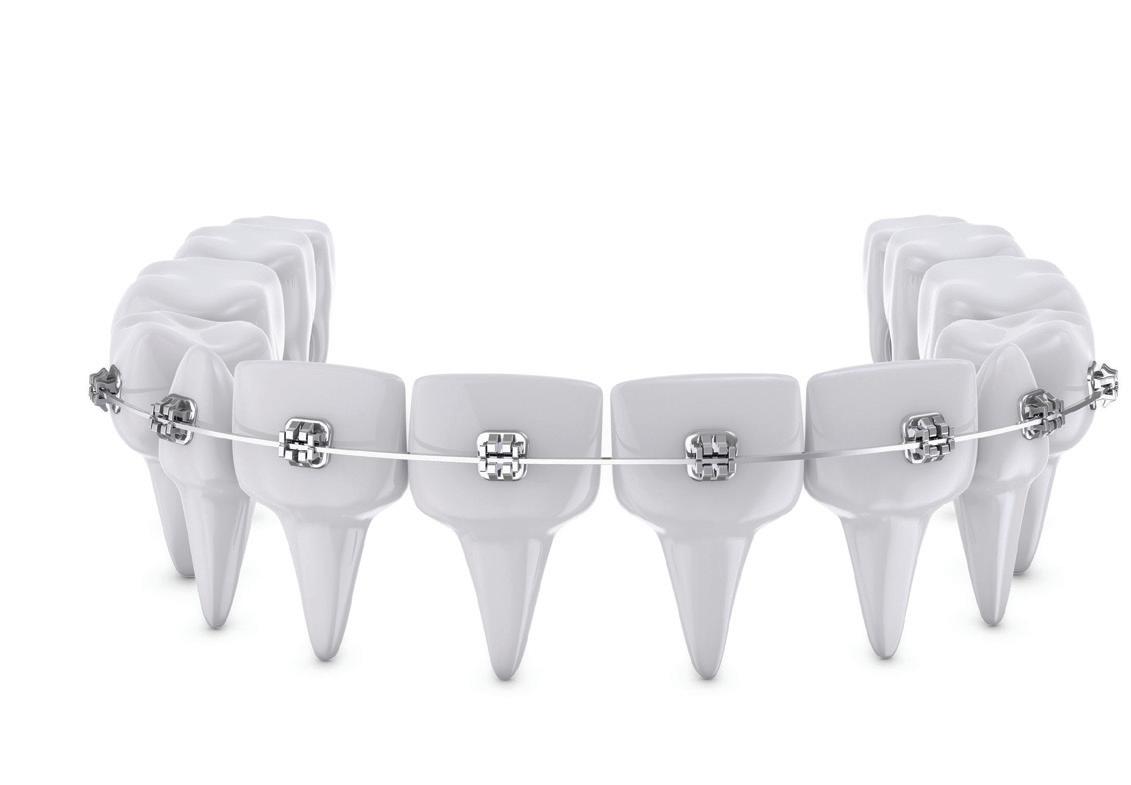
Many parents want to know the best age to take their child to the orthodontist. And that’s because often it’s a topic of conversation among parents or their children in the schoolyard, or because they want to be able to prepare for the future cost of orthodontic treatment. While it is only natural to want your child to have a beautiful smile as soon as possible (and the confidence that comes with it, in reality there is no ‘best’ age to undergo orthodontic treatment. It varies from child to child, and depends on the issue that’s being treated. Orthodontics Australia recommends children between the ages of seven to 10 years visit a specialist orthodontist for an assessment (no referral from a dentist is needed).
However, one thing that can be said for certain is that an early orthodontic evaluation is always a good idea. It allows the orthodontist to check if there are any problems present, and talk you through the best course of action to put you and your child’s minds at ease.
Signs your child needs an early orthodontic evaluation
Every child can benefit from an early orthodontic evaluation, but there are a couple of signs that would suggest certain children can benefit from an earlier visit to an orthodontist. Things to look out for are:

• Losing baby teeth prematurely due to cavities (decay) or trauma
• Snoring or breathing through the mouth
• Teeth that don’t meet properly when your child bites together
• Protruding and/or overcrowded teeth
• Difficulties with biting or chewing
• Thumb sucking
• A family history of impacted or missing teeth
Orthodontist
Between ages seven to 10 years, most children will have a mix of adult and baby teeth which will help the orthodontist to determine if there are any developing problems, such as misalignment of the jaws, crowding or overbites.
As a parent, it can be difficult to tell whether your child will benefit from early orthodontic treatment. However, orthodontists have the specialist training to know when and how it is appropriate to treat, when to wait and when no treatment is required. In some cases, the orthodontist may recommend a course of treatment to begin one to five years after the initial evaluation, but in others cases there may be early measures the orthodontist can take to intercept developing problems.
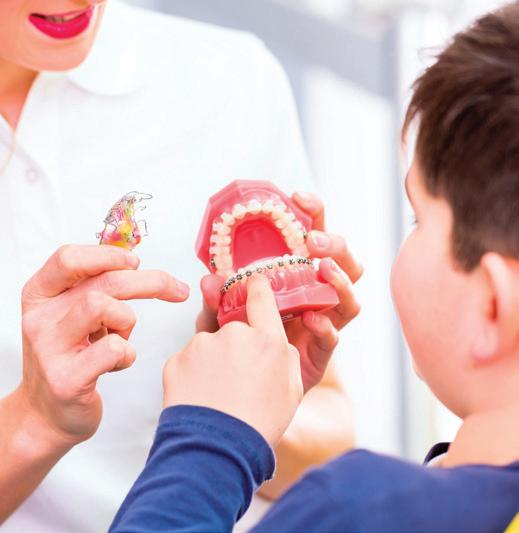
The benefits of early treatment
Early orthodontic treatment is often referred to as ‘phase one’. It’s usually followed by further treatment when your child is older. Early treatment can address some of the more serious bite-related problems. Appropriate early orthodontic appliances can help to make space in the mouth for remaining adult teeth to come through in the proper place.
Early treatment may also help to prevent physical and emotional trauma that may result from poorly positioned front teeth. As well as being the subject of schoolyard teasing, misaligned teeth are also prone to injury (particularly while playing sports) and may prevent good oral hygiene.
While there is no one ‘best’ age at which a child should receive orthodontic treatment, what’s important is that they see a specialist who can either rule out the need for treatment early or recommend the best course of action. Orthodontists are the most qualified and experienced clinicians who can manage all tooth and jaw alignment problems. Orthodontists can determine the best time to treat a specific orthodontic problem, whether it be as a child, teenager or adult.
»
»
»
Adults can also undergo orthodontic treatment, and there is no such thing as being ‘too old’ to get the smile you deserve. In fact, there are plenty of orthodontic treatments that are specifically aimed at adult patients. 13 Beach St Frankston

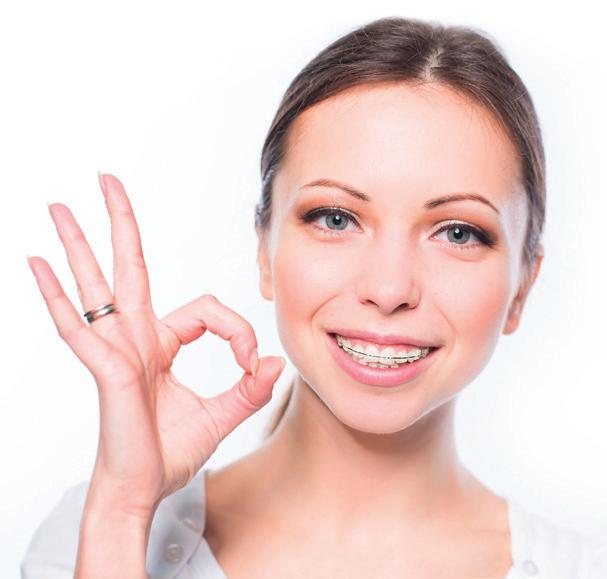
»
»
» No Referral Necessary
www.gohealthier.com.au 13
Orthodontist
Ph: 9783 4511
www.drpeterscottorthodontist.com.au www.facebook.com/drpeterscottorthodontist
Dr Peter Scott is a Specialist Orthodontist offering orthondontic care for children, teens and adults alike in both the Mornington Peninsula and inner Melbourne areas. He is also a consultant orthodontist at the Royal Childrens Hospital.
Creating Beautiful Smiles On The peninsula For 30 Years
Expertise In Child And Adult Orthodontics
Early Assesment Of Dental Development And Facial Growth
Ideal Age Of Initial Assessment 7-9 Years
Early Intervention Where Appropriate For Best Outcome
Disclaimer: This article was sourced from Orthodontics Australia. For more information, please visit www.orthodonticsaustralia.org.au/when-to-see-an-orthodontist/
What is a Dental Prosthetist?
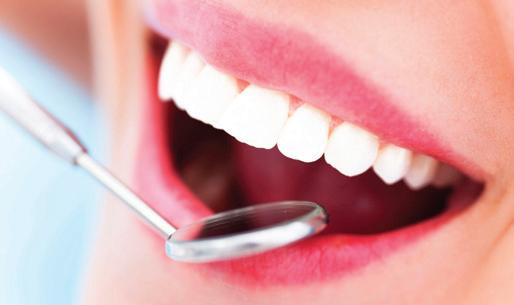
A Dental Prosthetist is an independent healthcare practitioner who must have first completed training as a Dental Technician. This is a Diploma of Dental Technology and is the prerequisite for a graduate to enter a two year, full time educational program approved by the Dental Board of Australia to vbecome a prosthetist.
Why see a Dental Prosthetist?
If your dentures are ill-fitting and need replacement, making an appointment with a dental prosthetist is highly advisable. Having specific training in dentures, a dental prosthetist will ensure a hands-on approach and be responsible for all aspects of the construction. Being at the forefront of the industry, he/she will have access to the most recent developments and innovations
Being Fitted Correctly
Dentures should be comfortable. If your dentures are causing you pain, it’s time for a check-up! Your Dentures should fit firmly in your mouth without moving, should your dentures rub against your gums causing pain and swelling, then they are either too old, or ill-fitting. Over time, if left untreated, the pain and risk of infection will increase.
A prosthetists’ scope of work allows them to practice in direct consultation with the public by taking impressions and records required to construct full and partial removable dentures. This includes repairing and relining dentures and making sports mouthguards.
In addition, once a structured and professional relationship with a dentist has been established, they can treat patients requiring implant-retained overdentures.
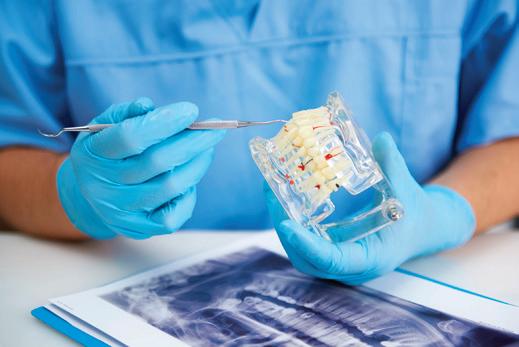
Dental Prosthetists must be registered with the Australian Healthcare Practitioner Regulation Agency (AHPRA) and must meet and maintain certain standards, policies and requirements in order to practice. Once granted, registration must be renewed annually.
Even if your dentures did fit properly once, this can change with wear-and-tear and can also happen as your jaw shrinks due to age-related bone loss. Sometimes, as the dentures become blunt, they lose their efficiency and food is unable to be broken down properly. This can adversely affect digestion.
Denture pain and discomfort can be prevented through proper care, regular check-ups, routine relines and having your dentures remade every 5-8 years.
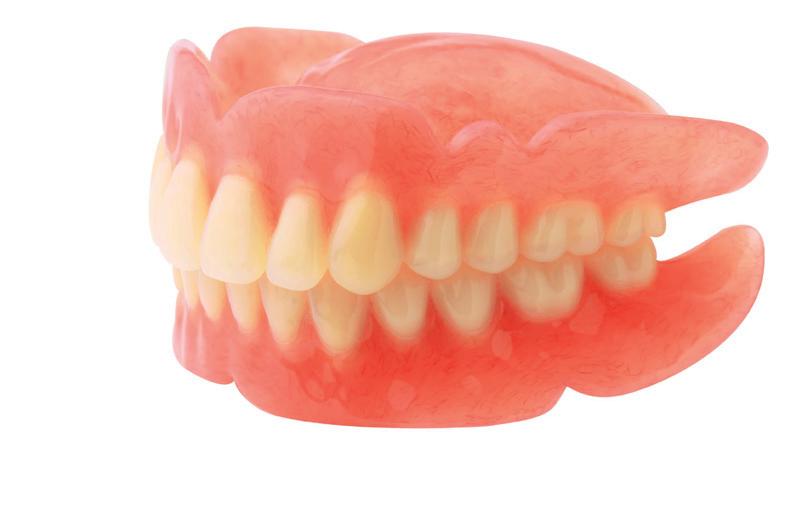
14 www.gohealthier.com.au Dentures
Modern technology and the Dental Prosthetist
While the hands-on techniques haven’t changed a lot over time, there has certainly been considerable advancement in the technology surrounding denture construction.
Frequently Asked Questions
Do I need a referral to see a Dental Prosthetist?
No, you can make an appointment to see a dental prosthetist without a referral.
Can I use my health insurance to see a Dental Prosthetist?
Yes, dental prosthetists are registered healthcare providers who are recognised by all Australian health funds. They are also recognised by the Australian government as service providers for war veterans and state government dental programs.
How long should my dentures last?
Modern materials, such as high-impact and injectionmoulded acrylics, as well as dentures that are more durable and natural in appearance, are available today. New technology includes, CAD/CAM (Computer Aided Design/Computer Aided Manufacture) as a tool. As a result, the construction of appliances, such as partial metal dentures, has greatly improved.
All of these advancements result in an enhanced product which is beneficial for the patient.
Depending on the type of denture, materials used, and your maintenance regime, dentures can last anywhere from 5-8 years before replacement, or relining may be necessary.
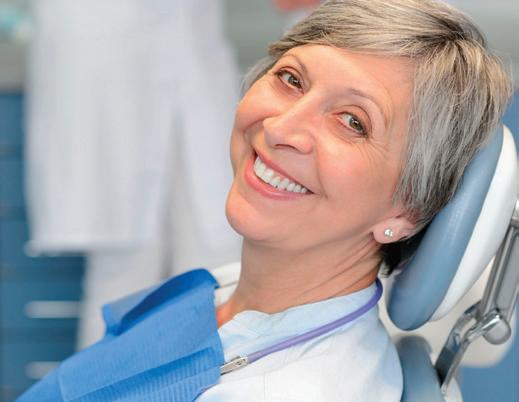
What is an implant overdenture?
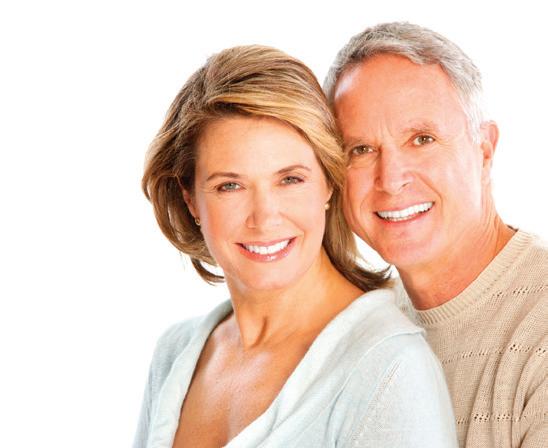
An implant overdenture is a denture retained in the mouth by two, or more implant attachments. These dentures are removable, can be full or partial and are most commonly used to stabilise full lower dentures.
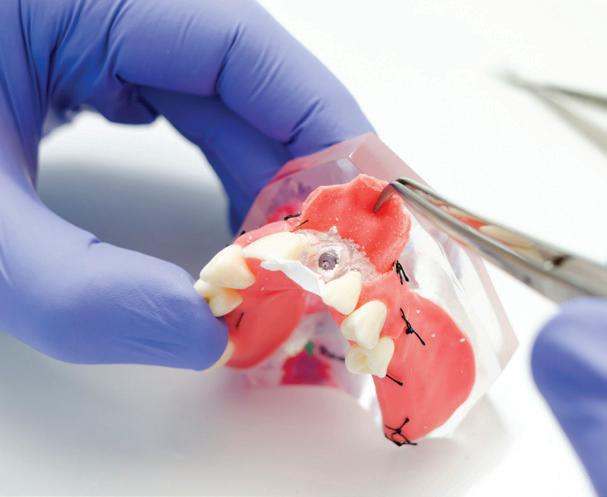
www.gohealthier.com.au 15 Dentures
Disclaimer: This article was written and provided by Daryl Morrison Denture Clinic for more information or make an appoint please visit www.darylmorrisondentureclinic.com.au or call 5977 6246. daryl morrison denture clinic 5977 6246 www.darylmorrisondentureclinic.com.au 1133 Frankston Flinders Road, Somerville (Cnr One Chain Rd) • Full & Partial Dentures • Mouthguards & Relines • Emergency Repairs • All Health Funds • Implant Over Dentures • Veterans’ Affairs
Early detection of melanoma
What is a skin check?
• A skin check is a systematic check of the skin surface from head to toe with the primary aim of early detection and treatment of skin cancer, in particular, the most dangerous form, melanoma.
• There are many places you can attend to have a skin check including a dedicated skin cancer clinic, your local GP or a dermatologist.
• Most skin cancer clinics are staffed by general practitioners (GPs) who have taken additional training in the field of skin cancer detection and treatment.
• Increasingly, photography is being used to assist skin cancer doctors in the early detection of melanoma.
Do I have to be concerned about melanoma?
• Australia has one of the highest rates of melanoma in the world.
• Last year, it was estimated that 1 in 17 Australians will be diagnosed with melanoma by age 85, according to The Cancer Council of Australia. In 2018, an estimated 14,000 new cases of melanoma will be diagnosed, says Cancer Australia.
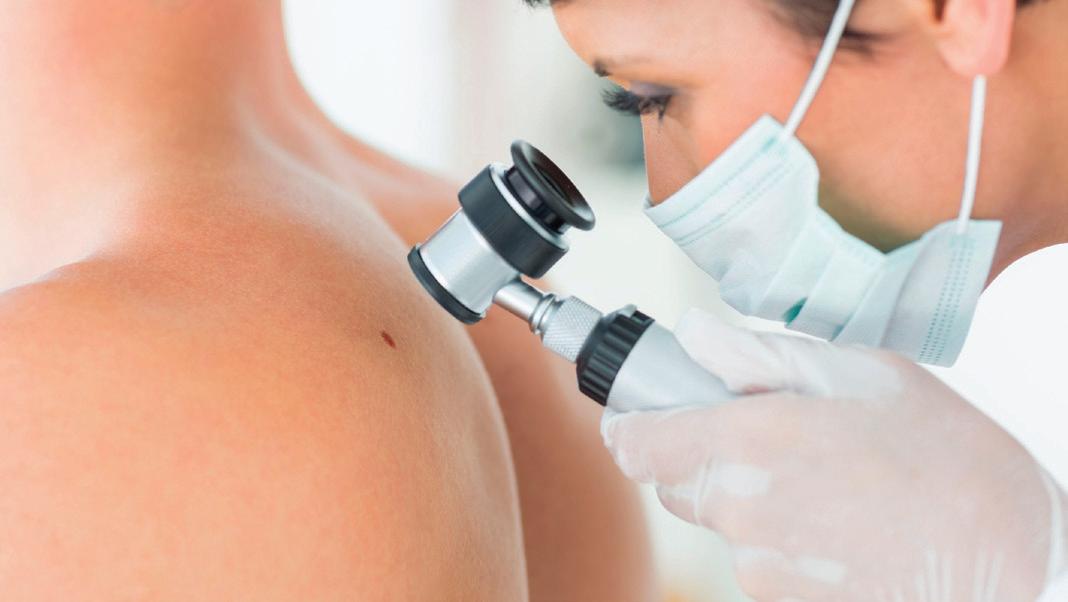
• Melanoma is the most dangerous type of skin cancer. Despite representing only 2% of all skin cancer types diagnosed, melanoma causes over 75% of skin cancer related deaths.
Do I need to be concerned if I am young?
• The good news is that melanoma rates do seem to be slightly falling in the <40 year age group, mostly attributed to the effectiveness of public health campaigns like ‘Slip, Slop, Slap’.

• However, although the rates do seem to be falling, melanoma is still the most common cause of cancer in younger Australians (15-39 yrs) and also the most common cause of young cancer deaths.
Am I at risk of melanoma?
• The primary risk factor for melanoma is significant exposure to damaging UV radiation, either from the sun or other sources (now banned solariums). Other risk factors include:
• having many moles (>100) or even further, having many irregular appearing moles (also known as ‘dysplastic’ or ‘atypical’ moles).
• having fair skin/hair, pale eyes, or skin that freckles and burns easily.
• a family history of melanoma.
• a previous history of any type of skin cancer.
16 www.gohealthier.com.au Skin Health
Why is it important to detect melanoma early?
• The most important factor in surviving melanoma is finding it early. Melanomas that are detected which are <1mm thick (known as Breslow thickness) have an excellent prognosis and are very unlikely to have spread to other parts of the body.
• Research has suggested that melanomas that are detected during a full body skin check are more likely to be of a thinner Breslow than those incidentally noticed.
• You are more likely to detect a melanoma early yourself if you perform regular self-examinations. You can use helpful tools like the ABCDE approach:
Asymmetry: is the mole different on one side to the other?
Border: are the edges irregular?
Colour: are there different colours within the moles?
Diameter: is the mole > 6mm across?
Evolving: one of the most important, cancer will always evolve over time, and may change in size, shape, surface, itch or bleeding
And don’t forget to look out for the rarest but most dangerous form of melanoma, called Nodular Melanoma. These may even be colourless or pink and are detected by checking if the nodule or lump is:
E - Elevated
F - Firm and
G - Growing
References: https://www.cancer.org.au/about-cancer/types-of-cancer/skin-cancer. html and https://melanoma.canceraustralia.gov.au/statistics
How do I protect myself from melanoma?
• The best way to protect yourself against melanoma is by addressing the most important modifiable risk factor – overexposure to damaging UV radiation.
• The Cancer Council recommends UV protection when levels reach UV 3 or more, by using the well known Slip, Slop, Slap method, now adding Seek (shade) and Slide (sunglasses)
• UV levels can be just as damaging on a cloudy day as a sunny day, so use UV rather than sun or temperature as your guide. SunSmart has a great phone App which gives daily UV alerts along with a vitamin D tracker, a sunscreen calculator and reminders (download from www.sunsmart.com.au).
• Remember, seeking shade and covering up are more effective than the best sunscreen, and try to avoid the damaging UV in the middle of the day in the summer months.
Is sunscreen safe and will it stop me getting adequate Vitamin D?
• Multiple scientific studies have shown that use of sunscreen has minimal impact on vitamin D absorption and in summer incidental short exposure to the sun is enough.
• Sunscreen and its ingredients are strictly regulated and monitored by the Therapeutic Goods Administration (TGA) to ensure they are safe and effective.
• We know conclusively far more about the dangers of not using sunscreen. www.mpskincheck.com.au

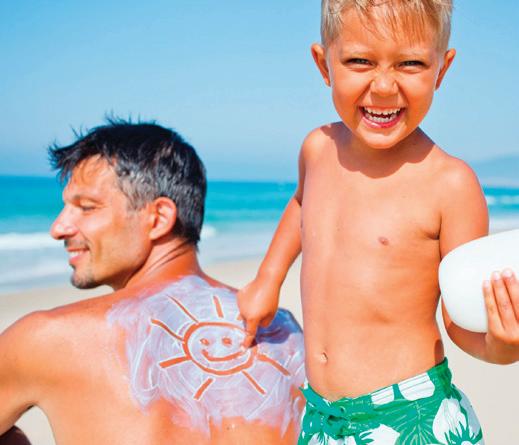
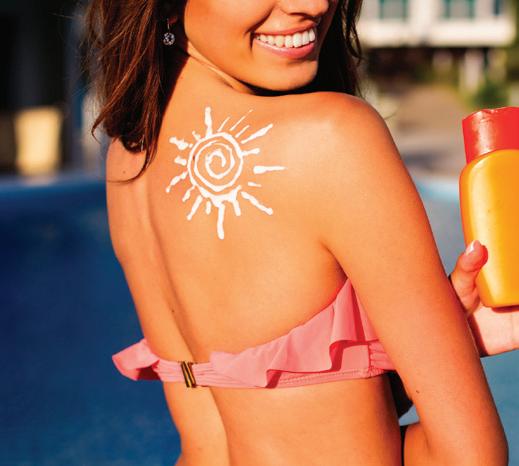
www.gohealthier.com.au 17 Skin Health
Mole Checks and Skin Cancer Treatment 2/4 Langrigg Avenue, Mt Martha 5973 5642 Dr Kristy Edwards MBBS, MBSc, RACGP, MMed (Skin Cancer)
Mole Checks and Skin Cancer Treatment 2/4 Langrigg Avenue, Mt Martha 5973 5642 Dr Kristy Edwards MBBS, MBSc, RACGP, MMed (Skin Cancer)
MP Skin
your check up
www.mpskincheck.com
www.mpskincheck.com.au
Disclaimer: This article was provided by
Check. For more information and to book
please visit
If you’re considering a cosmetic procedure, it’s just as good an idea to consider the reason you want to change or enhance your appearance as it is to research the right treatment for you.



Anti-wrinkle injectables and dermal fillers are used to enhance your appearance by either smoothing out wrinkles or adding volume to lips and cheekbones, or by reducing the appearance of marionette lines or nasolabial folds. These treatments cannot and do not help you to love the person you are already.
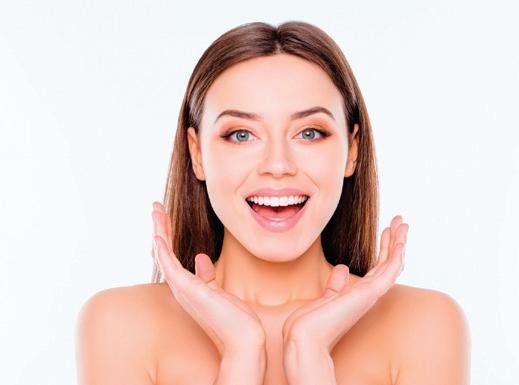
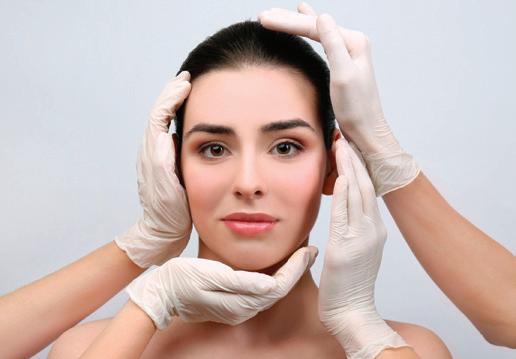
About cosmetic injectables
Dermal filler injections should be administered by a doctor or a nurse under a physician’s direction. When considering your options, ask who will administer the filler, what kind of training or credentials they have and how many procedures they have done (more is better). And don’t just base your decision on price. The lowest price or the most expensive isn’t what is important. It’s about finding someone who will listen to you, has extensive experience in this treatment and a good reputation.
It’s strongly advised to see a doctor who wants to enhance who you already are. Expecting them to do otherwise will only lead to disappointment. Opt for a doctor who takes it slow. Remember, you can always add more filler later if you choose to.
A low risk procedure
Ask your doctor beforehand about possible side effects and risks of the procedure (and what you should do if they occur). Empower yourself with knowledge and don’t be scared to research and ask questions.
All fillers carry very mild risks with a low occurrence rate. These may include prolonged redness, swelling and mild bruising near the injection site. These are all side effects that will gradually disappear. Many of the filler injections used today are completely biocompatible and designed to have a low risk of allergic reaction. Do discuss your allergies with your doctor, who will be able to choose the right brand of filler injection based on your medical history. There are so many choices of formulas and filler compositions that your treatment can be specially tailored to suit your needs and provide you with the smoothest and lowest-risk treatment possible.
A quick and easy treatment
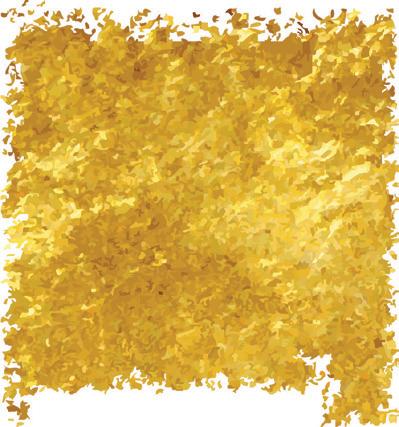



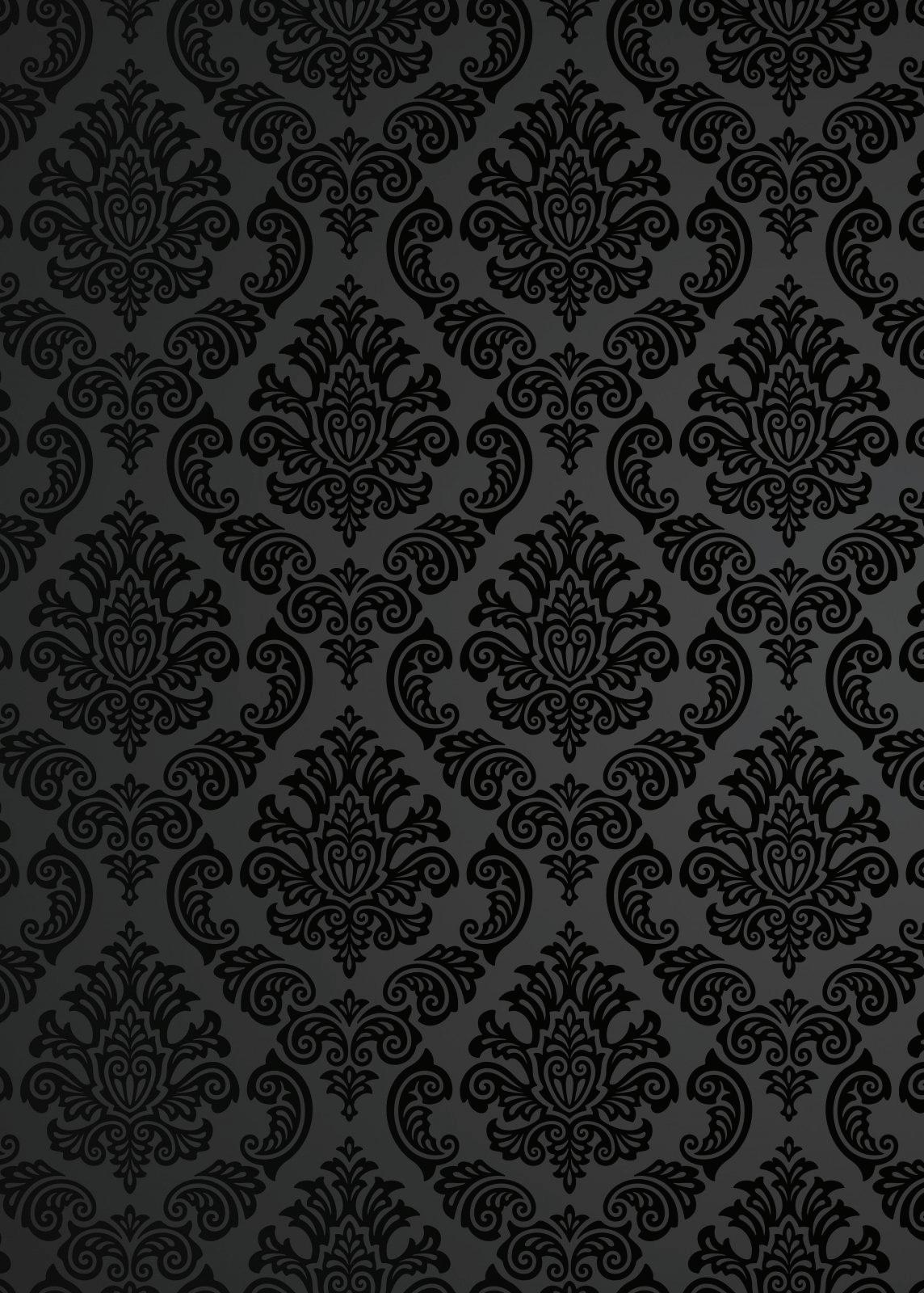





Filler injections won’t take all day. Men and women have the convenient option to have a treatment on a lunch break and then head back to the office to finish the work day. Filler injections may sometimes cause slight swelling barely noticeable to others which only lasts up to three days. Following your filler injection treatment, you’ll walk out of the clinic on your own and can drive yourself home, run your errands, pick the kids up from school or do whatever you need for the day.
Disclaimer: This article was provided and written by Clarity Cosmetic Mornington. For a consultation, phone 5977 2277 or see www.claritycosmetic.com.au
Before After rnington 5977 2277 Before Before After After rnington 5977 2277 Before Af te r Before After Dermal Fillers Lips & Cheekbone Enhancement, Marionette Lines, Nasiolabial Folds Set price $599 per ml. Anti Wrinkle Injectables Crows Feet $199 Frown Lines $250 Forehead & Frown lines $399 TMJ & Teeth Grinding $499+ Gummy Smile $149 Costmetic
Anti Wrinkle Injectables
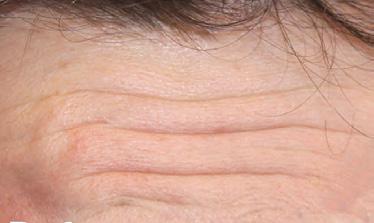
Crows Feet $199
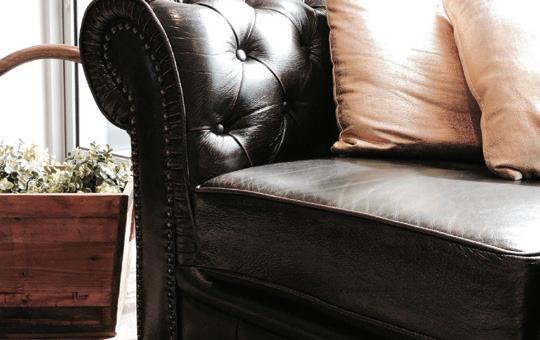
Frown Lines $250
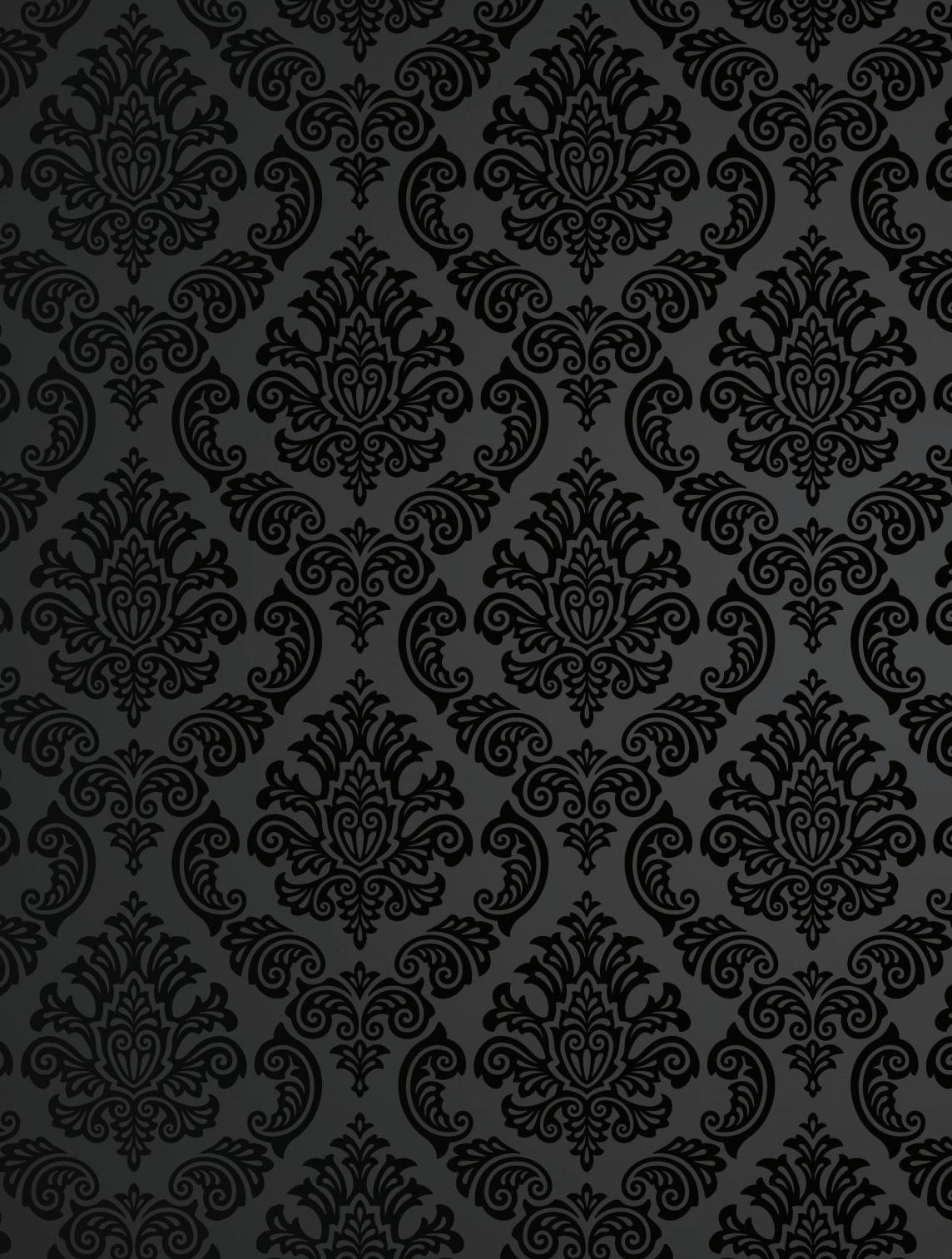
Forehead & Frown lines $399
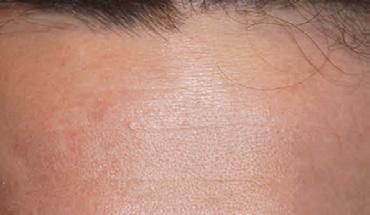
TMJ & Teeth Grinding $499+ Gummy Smile $149

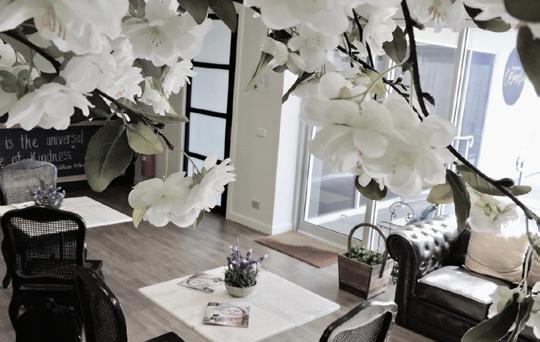
Dermal Fillers




Lips & Cheekbone Enhancement, Marionette Lines, Nasiolabial Folds
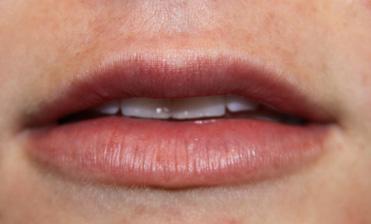
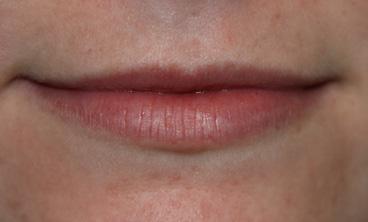
Set price $599 per ml.

rnington 5977 2277 Before Af Before Before Before After After

@Tamlynpatersonphotography
Provide High Levels of Antioxidants and Nutrients.
Improve Immune Function and Fight Cancer.
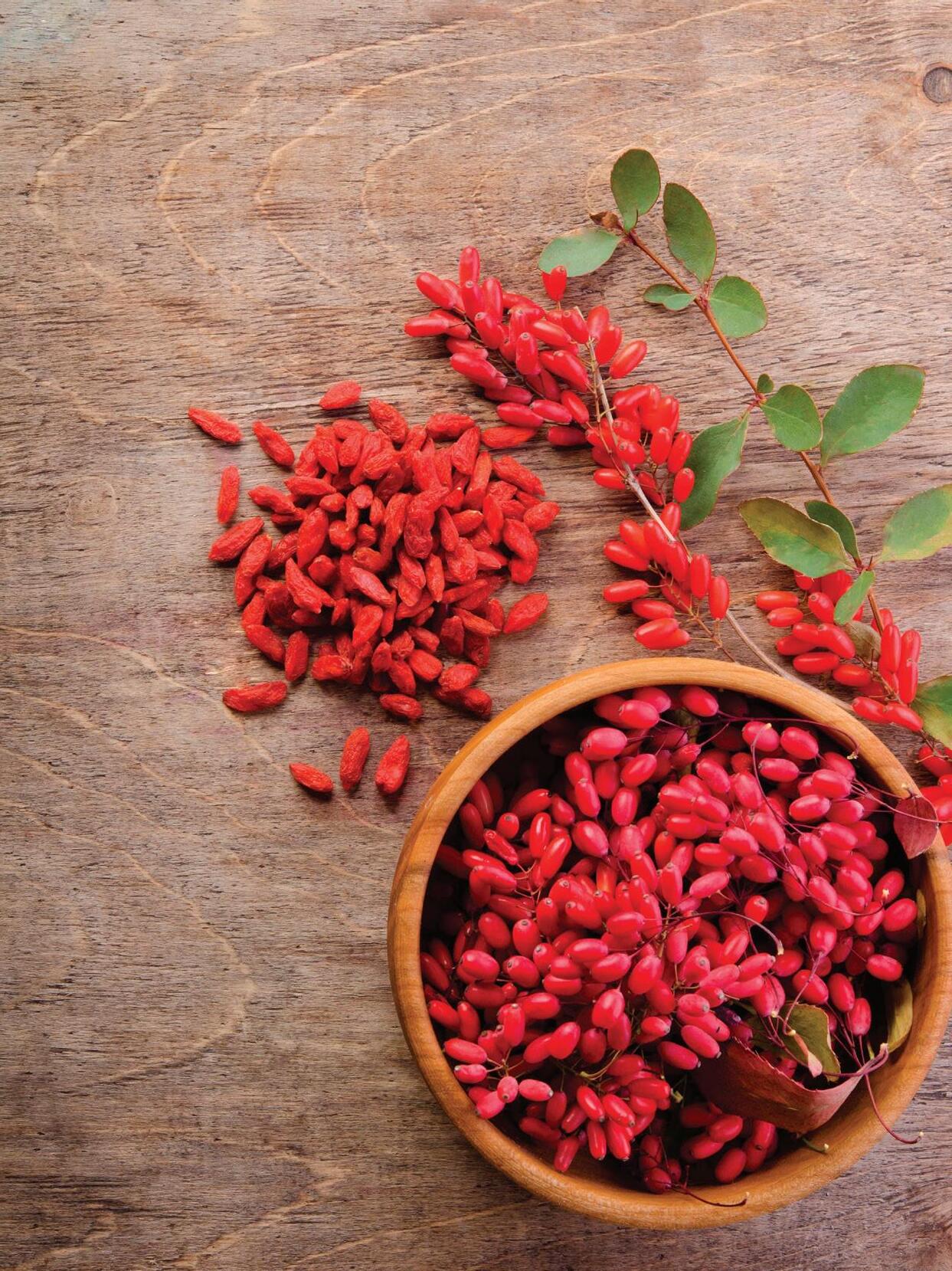
Promote Healthy Skin. Protect Eye Health. Help Stabilize Blood Sugar.
Detoxify the Liver.
Keep Your Energy and Mood Up.
Boost Fertility.
HEALTH BENEFITS OF
Turn Back the Clock on Aging!
Our face is like a book and can tell a story just by looking at it, however sometimes we don’t always want our faces to read our life history. When you look in the mirror and all you see are frown lines which are making you look angry or old, or perhaps your smile lines around your mouth are looking deep and shadowing your smile; then Cosmetic Injections and Anti-Ageing treatments will turn back time and create a more youthful appearance and restore your confidence.
Here are the top 4 Anti-Aging treatments to turn back the clock.
1. Skin Needling is a non-invasive treatment using multiple needles that differ in size to kick start the body’s natural wound-healing response underneath the skin. This results in new collagen to help protect your skin and is proven to treat numerous skin conditions, including smoothing wrinkles and lines, as well as improving skin texture, acne, acne scarring and stretch marks with minimal to no pain.
3. Anti-Wrinkle Injections provide a solution for light to medium depth facial dynamic and mimic lines. The most popular areas that are targeted include the forehead, glabella (frown lines between the eyebrows) and crow’s feet. Also, Masseter reduction (known as jawline slimming) is a quick and easy procedure we offer with no recovery time.
2. Platelet Rich Plasma (PRP) is designed to rejuvenate and regenerate skin conditions that are related to aging and scarring. It uses your own blood to harvest concentrated plasma, which is rich in platelets. When injected, your skin will significantly increase cellular turnover, which will result in the foundation of youthful, glowing and radiant skin.
4. Dermal Fillers are designed to add volume and create an instantly lifted, firmer and contoured appearance; a cosmetic injection that rejuvenates your skin with a hyaluronic acid based gel. Fillers are most commonly used to add volume to the lips, enhance the check bones and jawline and fill in deep nasolabial folds and under eye hollows.
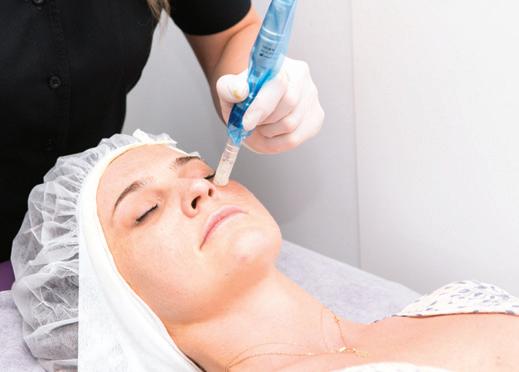
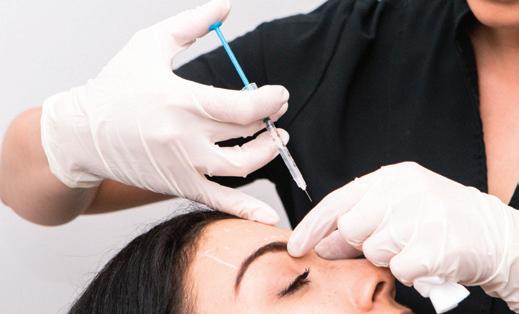

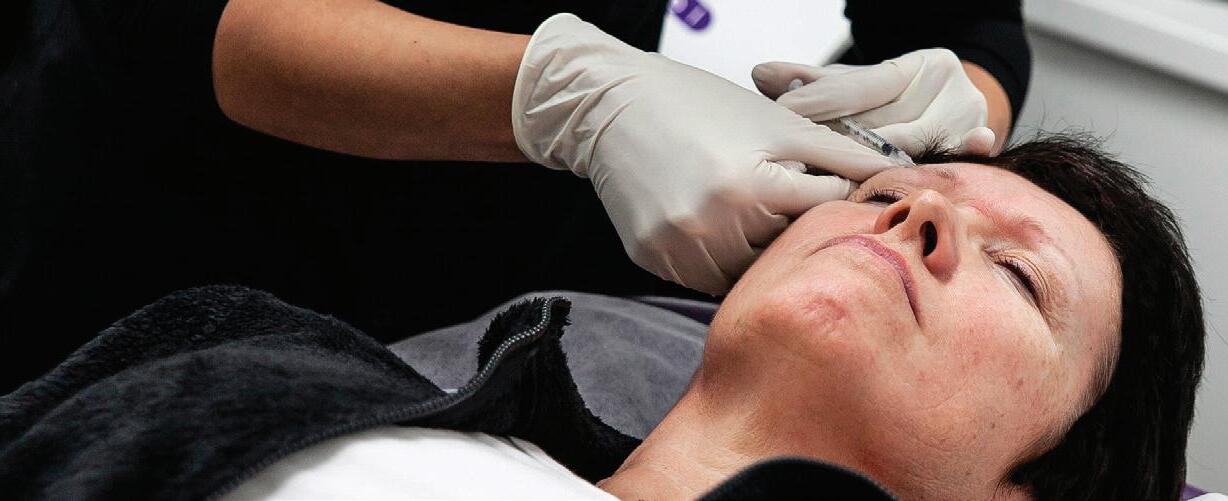
22 www.gohealthier.com.au
Laser
Disclaimer: This article was a written and provided by Australian Laser & Skin Clinics – Mornington clinic. 226 Main Street Mornington. They offer safe and effective Cosmetic Injections and Anti-Ageing treatment . They will ensure that you understand the procedures thoroughly, keeping you well informed at every step. To obtain more information on any of their treatments call them on 5975 2533 to arrange a FREE CONSULTATION or visit australianlaser.com.au .

www.gohealthier.com.au 23
Acne. You are not alone!
Acne is the most common skin condition affecting millions of people every year. In fact, it affects 85% of Australians aged 15-24 years old. But, it can occur at any age and while not dangerous, it can leave scarring.
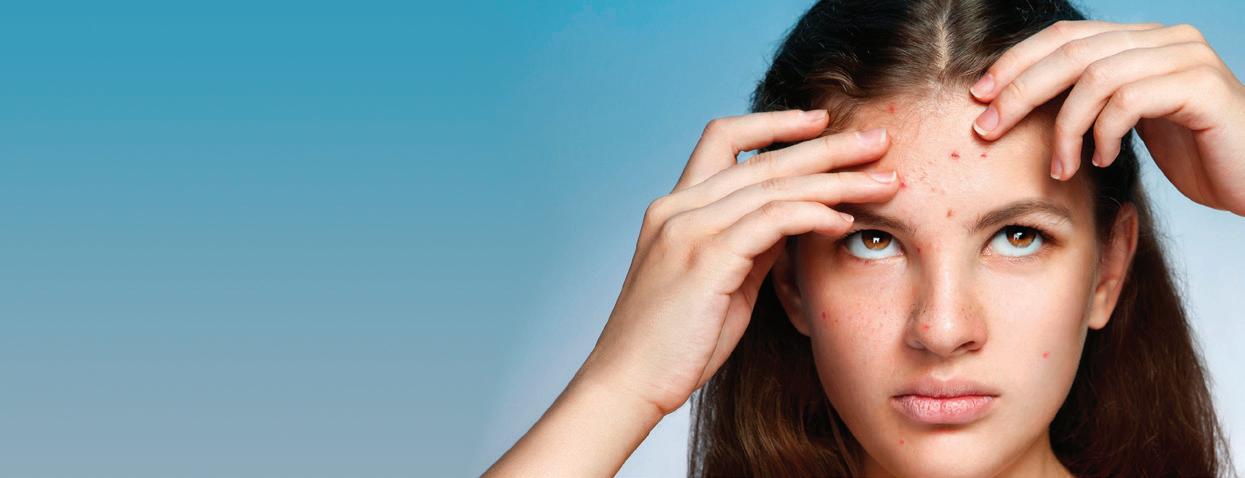
Acne is the chronic inflammatory skin condition that causes spots and pimples (especially on the face, shoulders, back, neck, chest and upper arms), Whiteheads, blackheads, pimples, cysts, and nodules are all types of acne. It commonly occurs during puberty and menopause, when the sebaceous glands activate. These glands produce oil and are stimulated by androgen hormones made by the adrenal glands in both males and females.
Hormonal factors
Several factors trigger acne, but the main cause is a rise in androgen levels. Androgen is a type of hormone, the levels of which rise when adolescence begins. In women, the body converts androgen into estrogen. Rising androgen levels cause the oil glands under the skin to multiply which, in turn, increases the production of sebum. This excessive production can cause the cell walls in the pores to degenerate, encouraging the growth of bacteria.
Other possible triggers
Many factors can increase the risk of acne, including genetics. Other causes include:
• Medications that contain androgen and lithium
• Oily cosmetics
• Hormonal changes
• Emotional stress
• Menstruation
How acne occurs
Our skin contains pores that connect to oil glands under the skin. Follicles, which are small sacs that produce and secrete liquid, connect sebaceous glands to our pores. These glands produce an oily liquid called sebum. Sebum carries dead skin cells through the follicles to the surface of the skin. A small hair grows through the follicle out of the skin.

Pimples are the result of blocked follicles that cause a build-up of oil under the skin. Skin cells, sebum and hair can clump together creating a plug. This plug can become infected with bacteria and cause swelling. A pimple starts to develop when the plug begins to break down.
Research suggests that the severity and frequency of acne depend on the strain of bacteria. Not all acne bacteria triggers pimples. In fact, one strain helps to keep the skin pimple-free.
Prevention and management tips
Tips for looking after skin that has existing acne or is prone to it include:
• Wash your face no more than twice each day with cleanser made especially for acne prone skin.
• Avoid scrubbing your skin and bursting pimples because this could push the infection further into the epidermis, causing additional blocking, swelling and redness.
• Avoid popping pimples because this makes scarring more likely.
• A specialist can treat a pimple that requires rapid removal for cosmetic reasons.
Acne | Skin Conditions
• Refrain from touching the face.
• Hold the telephone away from the face when talking because it is likely to contain sebum and skin residue.
• Wash hands frequently, especially before applying lotions, creams, or makeup.
• Clean glasses regularly because they tend to also collect sebum and skin residue.
• If you have acne on your back, shoulders, or chest, try wearing loose clothing to let the skin breathe. Avoid tight garments, such as headbands, caps, and scarves, or wash them regularly.
• Choose makeup for sensitive skin and avoid oil-based products. Always remove makeup before sleeping.
• Use an electric shaver, or sharp safety razors when shaving. Soften the skin and beard with a cleanser before applying shaving cream.
• Keep hair clean to avoid sebum and skin residue from collecting. Don’t use greasy hair products, such as anything containing cocoa butter.
• Avoid excessive sun exposure because it can encourage the skin to produce extra sebum.
• Reduce anxiety and stress because it can increase the production of cortisol and adrenaline, which exacerbates acne.
• Try to keep cool and dry in hot and humid climates to prevent sweating.
Treating moderate-to-severe acne
Acne is a common problem and can cause you to feel self-conscious and embarrassed. However, treatment is available and, in most cases, is very effective. You can see a dermal therapist or dermatologist to discuss products and treatments for your skin. Each case is unique and treatment should be conducted by a skin professional who has proven results.
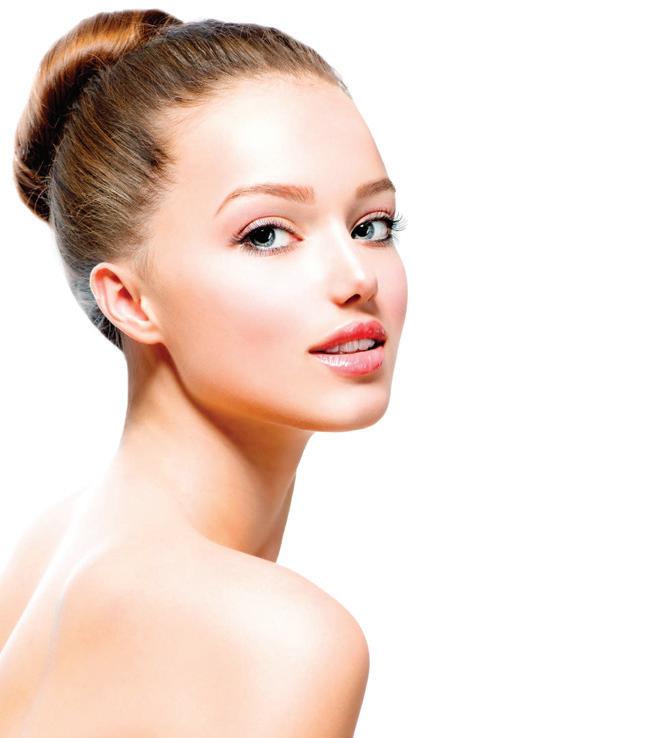
www.gohealthier.com.au 25 Acne Skin Conditions
Disclaimer: This article was written and provided by Jo-Anne from McCrae Clinical Therapies for consultation please call 0409306114 or book via www.mccraeclinicaltherapies.com.au
https://www.acne.org.au/acne-whats-to-blame#whatcausesacne McCrae Clinical Therapies For bookings, call 0409 306 114 info@mccraeclinicaltherapies.com.au 691-695 Point Nepean Road, McCrae. Come for an hour escape or more, we have it covered. We look forward to welcoming you as a client and leaving as a friend.
about acne » Acne is a skin disease involving the oil glands at the base of hair follicles. » It is not dangerous, but it can leave scars. » Treatment depends on how severe and persistent the condition is. » Risk factors include genetics, menstrual cycles, anxiety and stress, hot and humid climates, oil-based makeup and squeezing pimples.
Reference:
Facts
Enzmatic Therapy
Enzyme Therapy is designed to work in synergy with the skin’s natural processes, focusing on what the skin naturally responds to. By combining state-of-the-art science with innovative technology, Enzyme Therapy is the most advanced skin revision systems available.
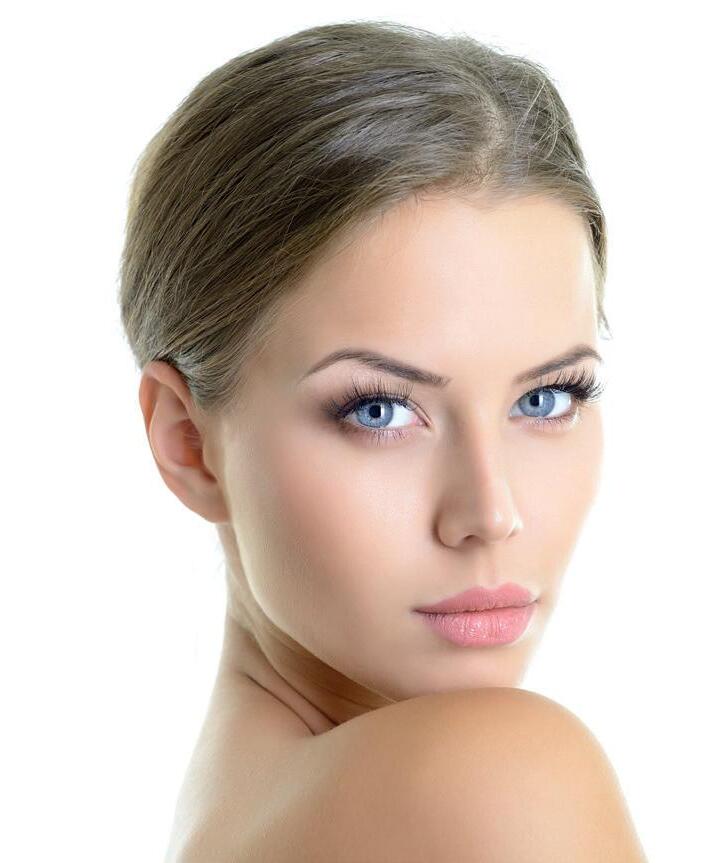
From ageing and acne, through to pigmentation and scarring, Enzyme Therapy repeatedly achieves longterm professional skin resolutions.
What Is An Enzyme?
Enzymes are nature’s biological catalysts and it was commonly believed by skin therapists and even physicians for many years that enzymes were not suitable for real skin therapy because they were huge, protein molecules – too big to penetrate the skin. The fact is enzymes are not proteins any more than a light bulb is electricity. Skin therapy enzymes USE proteins formed in plant cells to act as organic catalysts in initiating specific chemical reactions.
Enzymes:
Are biological catalysts of chemical reactions in the body.
Orchestrate all molecular activities in skin and body.
Are living substances which regulate skin health and fight free radicals.

Remove dead protein - toxins from epidermis - by reverse osmosis, which forces fluids out through the cell wall flushing the matrix that surrounds the cell leaving it clear and toxin free.
Increase water levels in the skin.
Stimulate RNA - a messenger activating enzymatic activity within the epidermis.
Stimulate the mitochondria - the power house of the cell – to provide the cell with oxygen. Cellular oxygenation increases the life span of the cell.
The Enzymes are manmade, freeze-dried and encapsulated in the zygote base Albumin which is derived from inside the membrane of egg shells.
How Does An Enzyme Work?
The concept is built upon the philosophy of Remove, Rebuild, Protect and Maintain. Enzyme Therapy is our leading treatment to kick-start the Remove and Rebuild phases.
We all have it in us to have skin that is functioning well and looking healthy, but factors such as environmental elements, ageing and hormonal fluctuations compromise the skin’s immunity, slowing circulation and lymphatic systems, causing it to weaken, age prematurely, or become inflamed.
Enzyme Therapy
Enzyme Therapy is all about the cell and how it functions. Our skin is “Our factory” and Enzyme Therapy ensures our factory keeps pumping away in an optimal manner. Most skin conditions arise due to the dysfunction or poor, sluggish functioning of the factory. Enzyme Therapy works on the internal function and structure of our skin to help increase oxygenation, circulation and support the lymphatic drainage system via reverse osmosis. This works to enhance collagen production, strengthen the tissue and dilate peripheral capillaries which can improve cellular oxygen uptake to deliver fresh nutrients to our skin. Enzymes may enhance optimal skin functioning:
Enzyme 1 - rebuilding phase
Enzyme 2 - strengthening, removing excess lipids
Enzyme 3 - intensifier
26 www.gohealthier.com.au Enzmatic Therapy
What Is A Plasmatic Effect?
As the blood vessels and lymph nodes respond to the enzyme treatment, your skin begins to look quite peculiar.
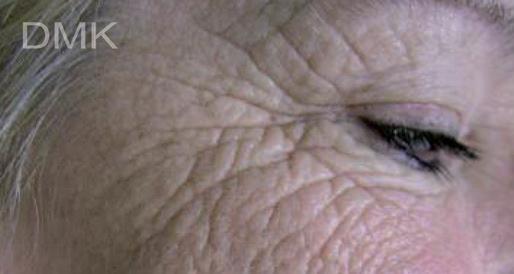
The enzyme treatment promotes a new rush of fresh oxygenated blood from within the skin due to the dilated capillaries, and you can literally see this take effect on the skin around your neck and face.
The capillaries stand out like a road map, showing the effect of the enzyme treatment as it goes deep enough for total dilation of the peripheral capillaries.
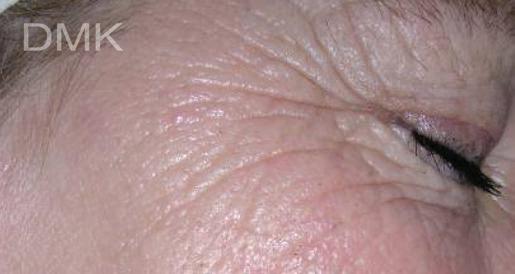
Enzyme Therapy works because it is designed to emulate the way your skin works naturally.
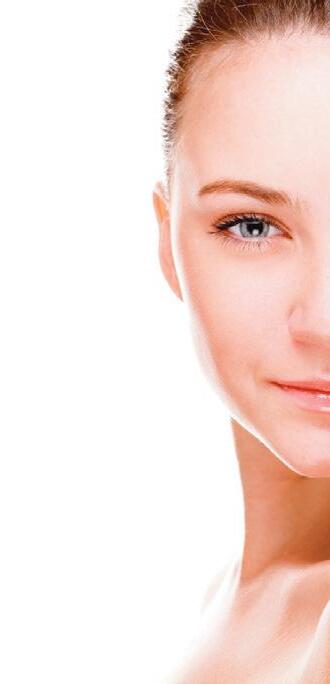
The plasmatic effect only lasts about ten to fifteen minutes, leaving you with enviable fresh, healthy, oxygenated skin that is functioning optimally. You will be glowing from the inside out!
Enzymes Work To:
Hydrolyse dead skin cells – leaving your skin feeling supple and smooth.
Increase circulation, oxygenation and cellular activity creating an enviable glow that your friends and family will notice.
Support the lymphatic drainage system – restore skin appearance with improved internal function.
Encourage new collagen and elastin formation –alleviate fine lines and wrinkles.
Revise skin inflammation – calmer skin that is healthier. Enzyme Therapy is not your typical topical style facial. It is for people who want complete skin revision, whether your skin is showing the signs of age or you suffer from a specific skin condition.
WANTING MORE THAN YOUR AVERAGE TREATMENTS CAN GIVE? THEN ZENYU IS THE PLACE FOR YOU!
DMK ENZYME THERAPY – EXCLUSIVE TO DMK

DMK is the only company in the world to utilize the beneficial effects of transfer messenger enzymes.
The DMK Alkaline Wash system is our top treatment for reducing stubborn fine, downy facial hair.
Body Sugaring is ideal for the face and intimate areas. It is less painful than waxing and so much kinder to the skin!
For some sweet facts why you should get sugared visit our website!
We offer solutions for all skin conditions, and we access the best treatments from around the world to deliver astounding results.
See what clients are saying about treatments at Zenyu:
Alkaline Wash, love it! Have been having it done for about 6months now and I’m seeing hair reduction on my face. Love the DMK range, very happy. Julia
DMK – the best skin care product I have ever used in my life. I feel like a new women and loving Zenyu for finding it.
Alisa G
Sugaring! How amazing! Much better than waxing. I’ve seen hair reduction after the 1 st treatment. A lot less painful than waxing. Melissa
www.gohealthier.com.au 27 0 3 59 7 5 0 0 9 9 | Z E NYU.COM.A U Enzmatic Therapy
Disclaimer: This article was sourced and provided by Rebecca Selby @Zenyu Skin and beauty at 8/234 Main St Mornington. For a consultation and review on your skin please call 03 5975 0099 to make an appointment. Note: The Enzyme Treatment is a DMK Signature Treatment dmkskin.com.au.
TOP TIPS FOR HEALTHY HAIR
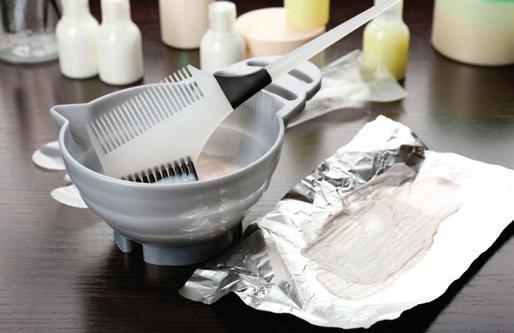
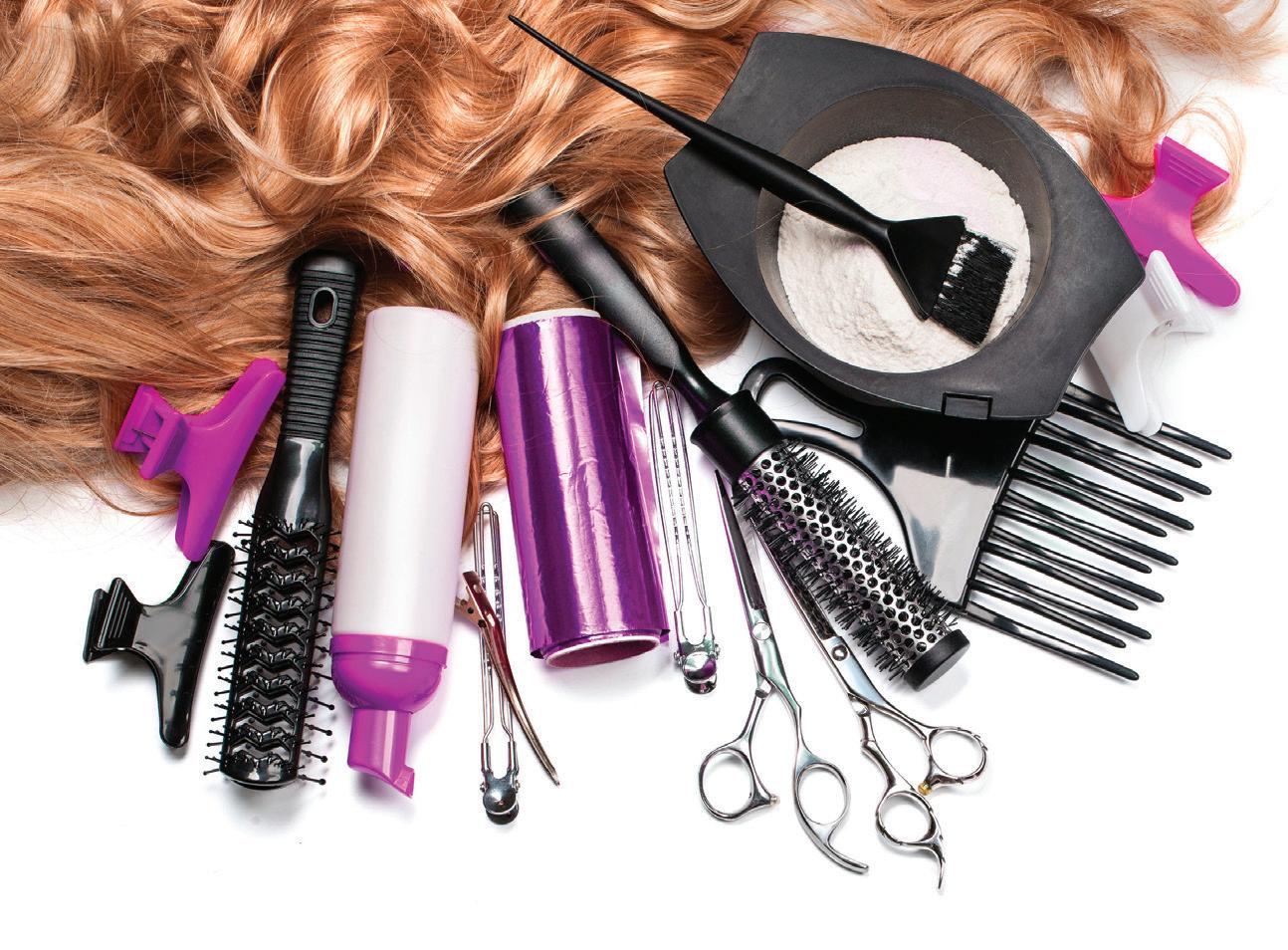
Colouring
back blonde foils, or scalp bleach, need enough time between colour sessions to avoid product overlapping on the hair that is already coloured. This will reduce damage and breakage. Ends can be run through during the last 5 minutes. For clients who use darker colours, only the regrowth needs retouching. Otherwise, the colour will build up and become difficult to remove. If the colour fades after a few months, it can be reapplied to the whole head of hair. Also, try to avoid using supermarket dyes because they are metallic and difficult to remove. Professional products and professional application is recommended.
If done properly, colouring your hair should not break or damage it. However, changing colour regularly is unhealthy. For example, going from blonde to brown and back again. Hair can be compared to a piece of rusty metal; painting over it does not make it new, it is still old and rusty underneath. The same applies to hair. It might look shiny and healthy, but that does not mean it is. Beneath the colour, it can still be damaged and fragile. Going back to blonde again will put more stress on your hair because you will be adding to the damage that has already been done. Stick to one colour and only change if you are going to keep the same colour long-term. If you do want a change, choose a shade, or two darker. If you decide to change back, less damage will be caused. Clients who have back-to-
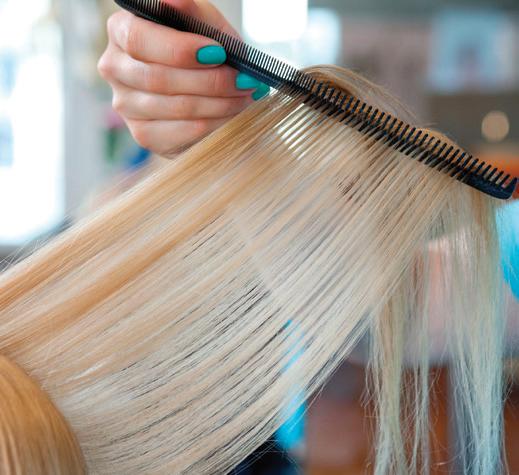
28 www.gohealthier.com.au
Hair Health
Hair ties and hats
Hair ties are not good for hair, especially if tied too tight, or when wet because that is when it is in its weakest state. Pulling hair back and tying it up will cause a lot of breakage, particularly around the temple and crown area. It is better to use a loose, non-elastic hair tie and avoid pulling on the hair too much. Clips and bobby pins can be used to keep hair out of the way. Also, wearing hats every day is not ideal because it stops the scalp from breathing properly and interrupts circulation which leads to poor hair growth, as well as hair loss.
Diet
Our community is health and body conscious, but unfortunately it is more preoccupied with appearances rather than nutrition. People who reduce their calorie intake to maintain their body image, are depriving their body of the nutrients essential for healthy skin and hair. This will result in hair that is dry, brittle and unable to hold colour properly. It can also lead to hair loss.
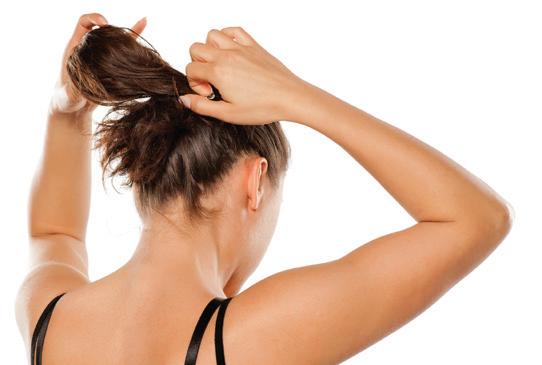
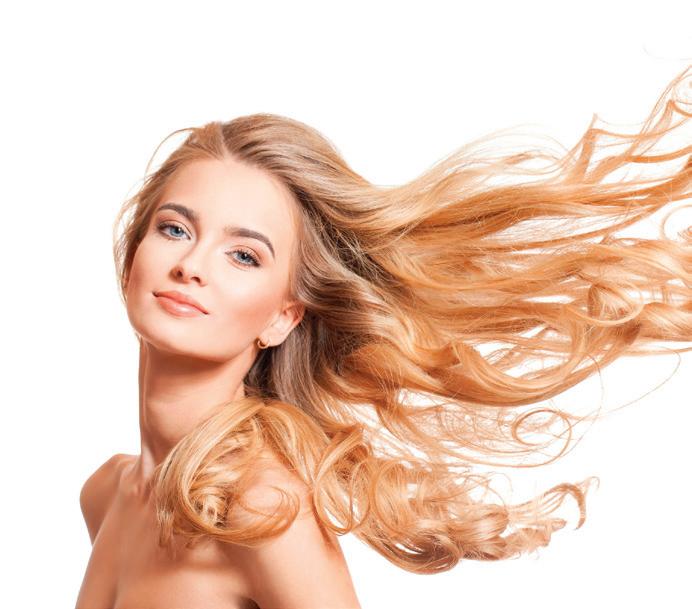
Some important vitamins and nutrients include:
Vitamin A, found in carrots, pumpkin and sweet potato which act as a moisturizer for the hair.
Vitamin B, found in whole grains, meat, poultry and fish, providing a wonderful source for healthy hair growth.
Zinc, found in beef, poultry, fish, wheat germ and lentils. A zinc deficiency is a common cause of hair loss.
Disclaimer: This article was provided and written by Onyx Hair – Mt Eliza for an appointment please call 9787 6955
Brushing
Be gentle when brushing to avoid ripping hair out. Remove most knots while showering with the help of a good conditioner and wide-toothed comb, starting at the bottom and working your way up. Once out of the shower, use a leave-in conditioner, such as Eleven Miracle Hair Treatment which will help the comb glide through your hair with minimal damage. Also, always use a brush with flexible teeth that won’t pull out your hair.
ONYX Hair Salon
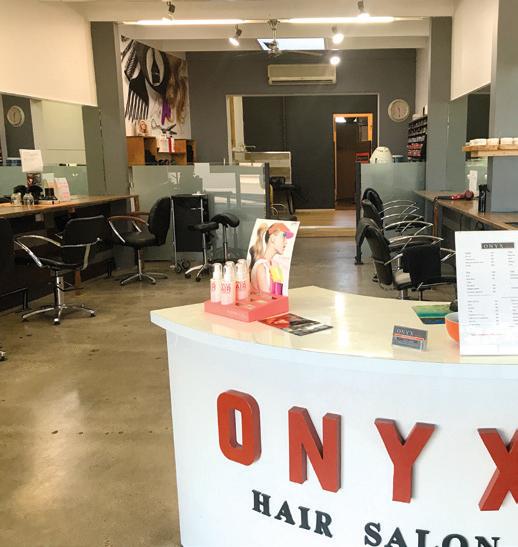
EXPERIENCE AND PASSION
Taking care of all your hair needs
Very relaxed atmosphere
Using some of the best products on the market
Great advice on how to maintain your style at home
Over 15 years of experience
9787 6955
www.gohealthier.com.au 29
Hair Health
Massage
Most people know well the feelings of bliss, relaxation and relief from pain and tension that can come after a really good massage.
In history, touch has always been used to comfort and heal. For example, giving someone who is upset or hurt a rub on the back is our natural instinct to help them feel better. Just like the way babies need to be held and touched to enable them to thrive.
Mindful touch can release endorphins (feel-good hormones that are the opposite of stress hormones) into the blood stream which in turn can increase feelings of wellbeing, optimism and calm and enhance our immune system.
Regular therapeutic massage is great maintenance for your body and very beneficial for your overall health while helping to assist and prevent musculoskeletal issues.
Types of massage
People seek out massage for a number of reasons including stress and anxiety relief, relaxation, pain reduction, mobility, rehabilitation from injuries and for general wellbeing. With so many different types of massage modalities, it can be confusing to work out which therapy is right for you. Here are some of the main massage types and benefits associated with each:
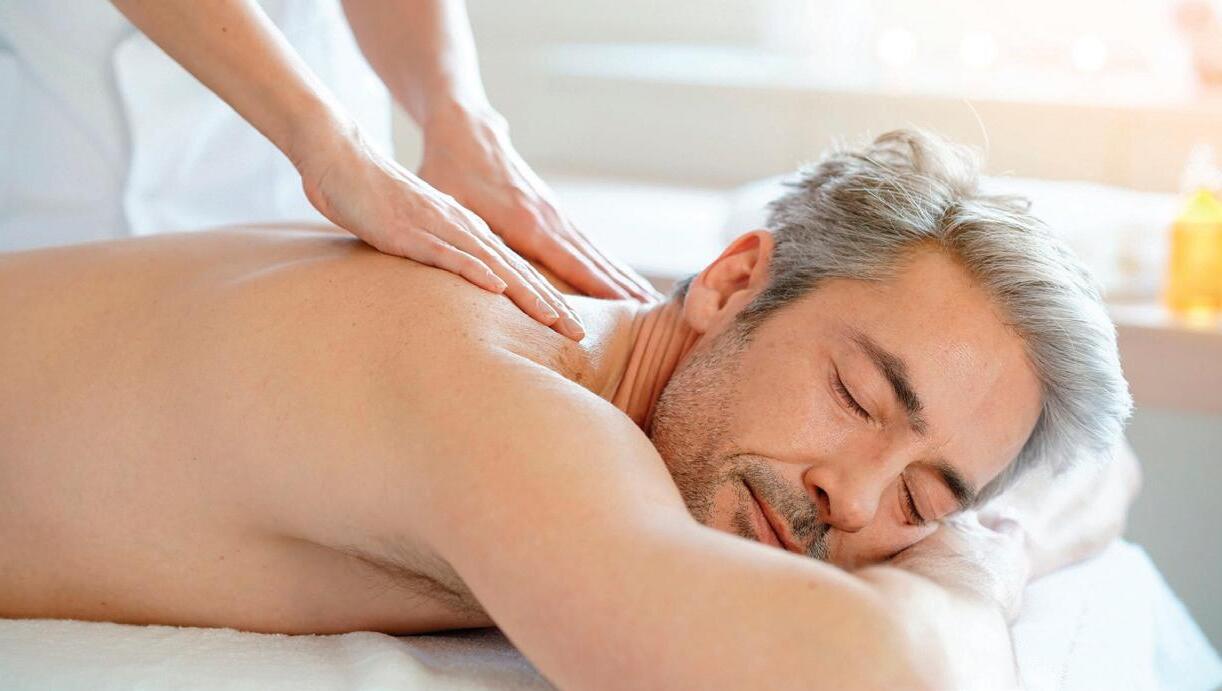
Relaxation massage
This involves flowing strokes of your preferred pressure, including gentle kneading to encourage relaxation of the body and mind. It’s a great option to reduce stress, loosen up the body and give yourself some time-out.
Remedial massage
Addressing areas of concern or dysfunction in the body, remedial massage can help with injury rehabilitation, posture improvement, joint inflammation and muscular pain. A more detailed client history is taken and range of motion assessments can be taken before and after a treatment. Specific techniques, such as deep-tissue massage, trigger-point therapy and myofascial release are used to treat areas of concern. Often there is an option to claim back part of the cost of treatment through a private health fund where applicable.
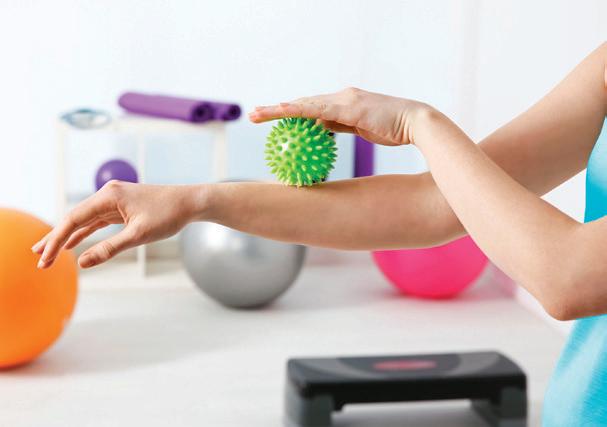
Myotherapy
Involves the assessment and treatment of myofascial pain. It uses remedial massage techniques as well as dry needling, thermal therapy, TENS and exercise prescription. Preventative, corrective and rehabilitative phases of treatment are covered. A portion of the cost of treatment can be claimed through private health funds where applicable.
30 www.gohealthier.com.au
Massage
Sport massage
Can assist athletes with their performance and recovery. Prior to a sporting event, a brisk stimulating massage of the key muscle groups used during the specific sport can invigorate the athlete and warm-up the muscles preparing the athlete both physically and mentally for the event. Post-event massage relaxes and lengthens the muscles. Gentle stretching can be incorporated into the treatment assisting with the removal of waste products and reducing muscle soreness.
Oncology massage
A gentle form of remedial massage which has been modified to safely work with the complications of cancer and cancer treatment. It has been shown to alleviate some of the symptoms experienced by patients, including improvements in pain and fatigue levels, depression, anxiety, nausea and sleep patterns. Increased immune-system function and hormonal balance have also been noted. Gentle scar mobilisation techniques along with manual lymphatic drainage helps reduce the formation of adhesions and fibrosis, encouraging areas which have undergone surgery to return to their normal range of movement.
Choosing a massage therapist


It is important to seek out a qualified therapist who preferably belongs to a massage therapy association. Therapists abide by a code of conduct which ensures the client will receive the safest and best quality outcome for their treatment. Therapists are required to regularly update their skills and education to stay registered with an association. It is important to note that there can be a cross-over in the skill level of different therapists and the techniques they offer according to the amount of extra training they have undertaken and years of experience in practice. In the hands of a qualified and experienced massage therapist, you can rest assured that you will receive the best personalised treatment to benefit your health concerns on the day.
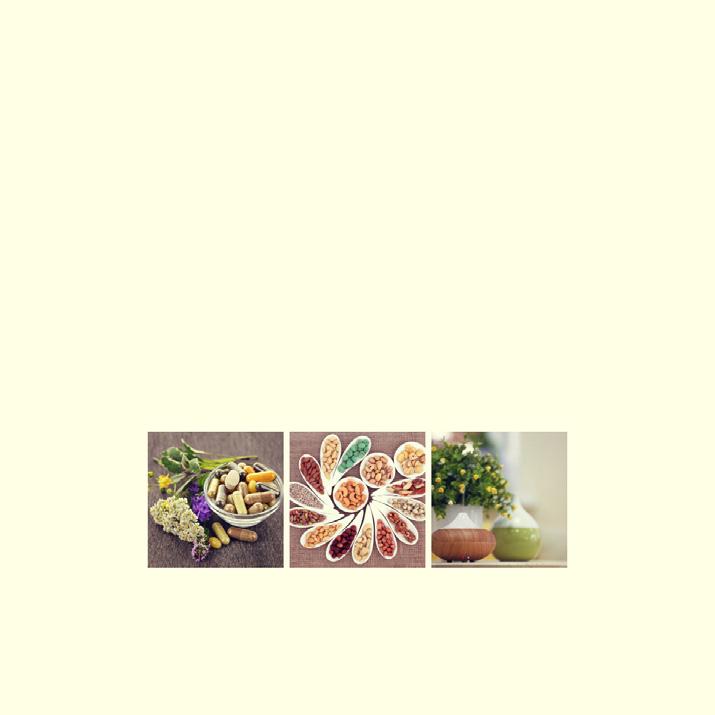
www.gohealthier.com.au 31 Massage
Disclaimer: This article was provided and written by Fiona Urwin (Dip RM, OMT2) at The Natural Health and Wellness Clinic in Somerville. See www.thenaturalclinic.com.au or phone 5977 7342. The Natural Health & Wellness Store The Natural Health & Wellness Clinic www.thenaturalstore.com.au www.thenaturalclinic.com.au 12 Eramosa Road East, Somerville (03) 5977 7342 Herbal Medicine Vitamins & Minerals Supplements Whole Foods Bodycare Home & Lifestyle NOW OPEN! Naturopaths in store Bowen Therapy Hypnotherapy Massage Meditation Naturopathy Nutrition Osteopathy Psychology Podiatry Reiki Reflexology Tutoring Your path to healing
Spinal health and your wellbeing
Spinal health is something we only pay attention to when we are in pain. The spine is a very important part of your body and its health can have a big impact on how well the rest of your body’s functions perform.
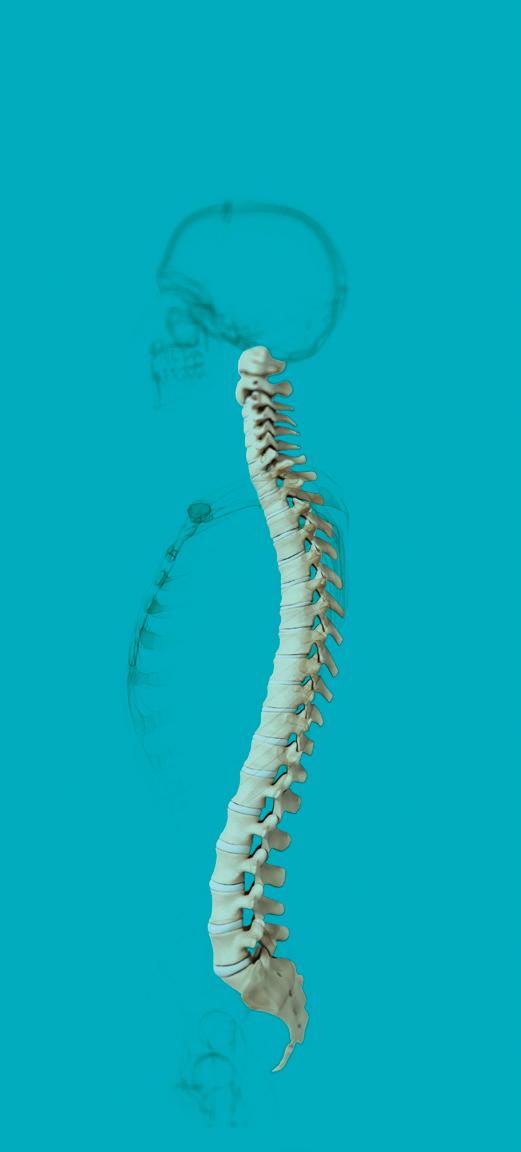
Spinal health issues, even subtle ones, can affect your general outlook of life and overall wellbeing. Poor spinal health can be caused by a variety of lifestyle factors such as insufficient exercise, sedentary lifestyle, bad posture or poor sleeping habits.
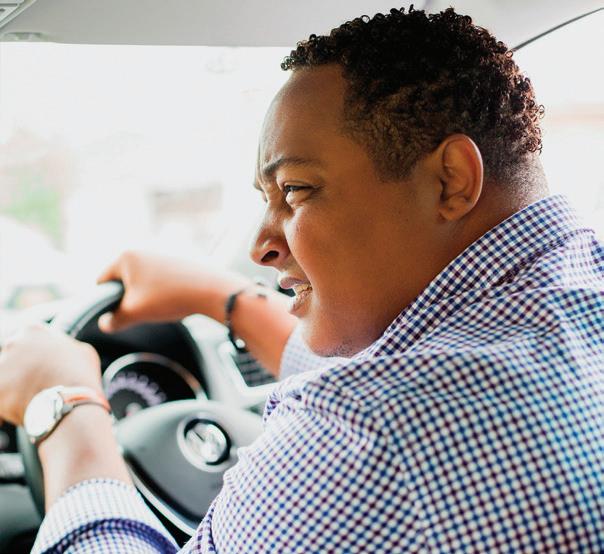
Musculoskeletal conditions are very common, affecting 30% (6.9 million) Australians, including 3.7 million people with back problems. In some cases, these are difficult to avoid (such as an accident or injury). However, everyday habits can be a big determining factor in how well our spines handle stress.

32 www.gohealthier.com.au Chiropractor
-
Dr Andrew Lawrence, chiropractor and President of the CAA.
“It is important to take preventative measures when it comes to spinal health and if you are experiencing pain, it is not advisable to ignore this. Seek advice from your local CAA chiropractor or other healthcare professional as early as possible”
Chiropractors Association of Australia wants Australians to focus on the everyday habits that can be harmful to the health of their spines and look at making small, practical steps for the better.
Simple lifestyle adjustments which can make a noticeable difference include:
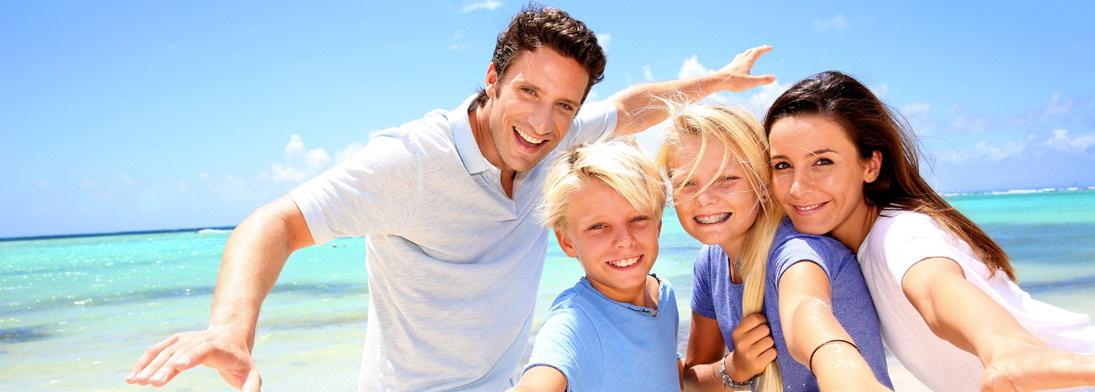
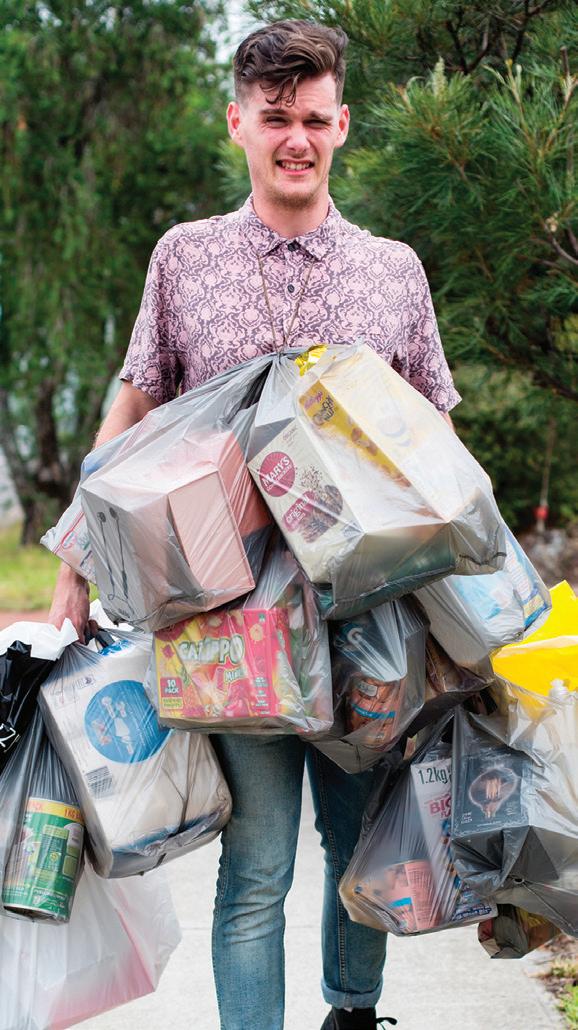
z being mindful of your posture
z getting more active
z taking breaks from mobile devices
z incorporating stretching into your daily routine
“Because musculoskeletal conditions are so common, there is a strong case for being proactive and making the necessary changes to improve your quality of life now and in the future” says Dr Andrew Lawrence, chiropractor and President of the CAA.
“It is important to take preventative measures when it comes to spinal health and if you are experiencing pain, it is not advisable to ignore this. Seek advice from your local CAA chiropractor or other healthcare professional as early as possible.”
What does a chiropractor do?
Chiropractors use a variety of non-surgical techniques, such as spinal adjustments and manual therapy, to address spinal health issues. They offer a drug-free hands-on approach to healthcare and work towards restoring and maintaining normal spinal function without surgery or medication.
Chiropractors have broad diagnostic skills and they are qualified to advise patients on exercises, nutrition and lifestyle changes, and will work with other healthcare providers where needed.
Australian chiropractors are highly-qualified healthcare professionals who study at university for a minimum of five years. They are also government registered and regulated. Visit www.spinalhealthweek.com.au to learn more about everyday habits that can place stress on your spine, what you can do to improve your spinal health and how a chiropractor can help you.
www.gohealthier.com.au 33 Chiropractor
Caring for Families on the Peninsula (03) 5975 3613 | 131 Tanti Avenue Mornington VIC 3931 www.chiromornington.com.au Mornington Family Chiropractic Disclaimer: This article was written by Chiropractors Association of Australia for more information visit www.chiropractors.asn.au
Osteopathy is a hands-on approach to healthcare recognising the important link between the structures of your body and the way it works. An osteopath focuses on how your skeleton, joints, muscles, nerves, circulation, connective tissue and internal organs work together to improve your health and well-being.


What does an osteopath do?
Osteopaths use a range of approaches to enhance function, including manual therapy (mobilisation, stretching, massage and manipulation for ligaments and joints), exercise therapy and programming, equipment prescription, lifestyle advice and patient education. They determine the mix and frequency of treatment and management approaches using skilled clinical evaluation and diagnostic approaches.
In Australia, all Osteopaths complete a minimum of four years university training in anatomy, physiology, pathology, general medical diagnosis and osteopathic techniques. They are also trained to perform standard medical examinations of the musculoskeletal, cardiovascular, respiratory and nervous systems.
Why see an Osteopath?
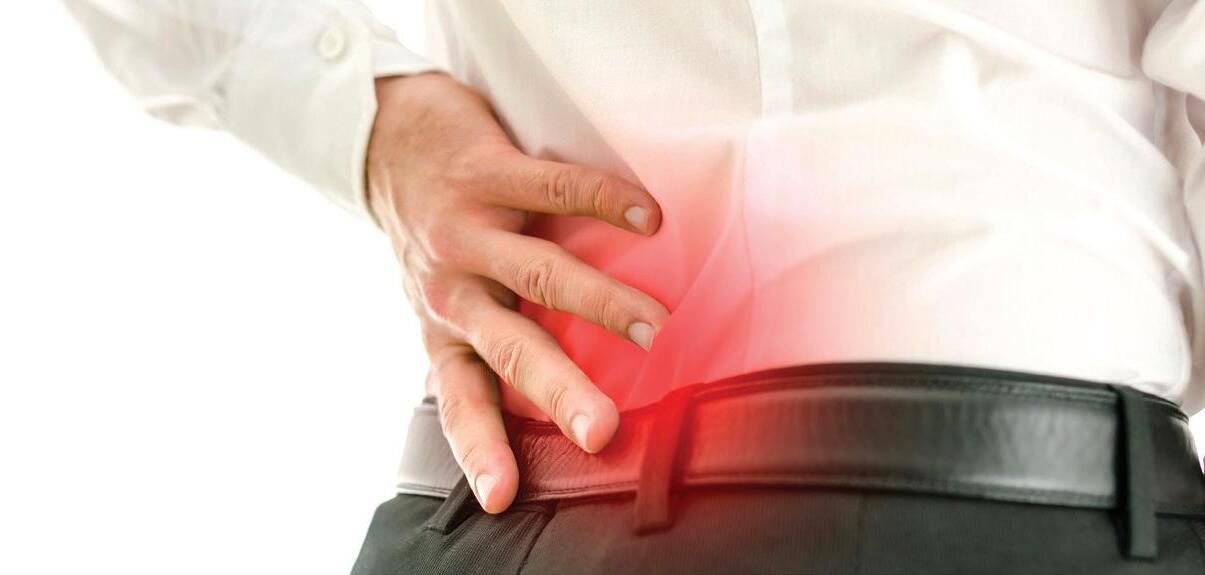
An Osteopath will help identify the cause of your pain or injury and develop a course of action so you can make the most of your life. Most people, regardless of age or gender, will suffer from back or neck pain, headaches, sport injuries, stiffness or other physical pain at some time. Osteopathic treatment is diverse and suitable for all ages from small babies to the elderly. Osteopaths use a gentle approach incorporating techniques such as soft tissue massage, stretching, manipulation and exercises.
Osteopathy can also incorporate trigger-point dry needling in treatments, which is the use of small filament type needles (similar to acupuncture) to reduce tight muscles with the goal of permanently reducing muscle pain and dysfunction.
Osteopaths can offer you personal advice on stretching and strengthening exercises for injury rehabilitation and prevention, posture, diet, ergonomic advice and stress management.
The goal of the osteopath is to restore normal joint function which leads to normal tissue function, resulting in tissues healing, decreased pain and a decreased likelihood of injury.
34 www.gohealthier.com.au
Osteopathy
What happens in the first consultation?
At your first session, your osteopath will ask you about the history of your problem to establish when and where the symptoms first started and how they may have changed over time, the treatments (if any) you have received to date and the impact your pain may be having on your life.
After learning of the history of your pain, your osteopath will carry out a hands-on examination which includes various tests of the spine, nervous system, muscles and joints. Generally, none of these tests are painful, however if you are in acute pain your osteopath may ask you to demonstrate what positions and movements reproduce or exacerbate your pain.

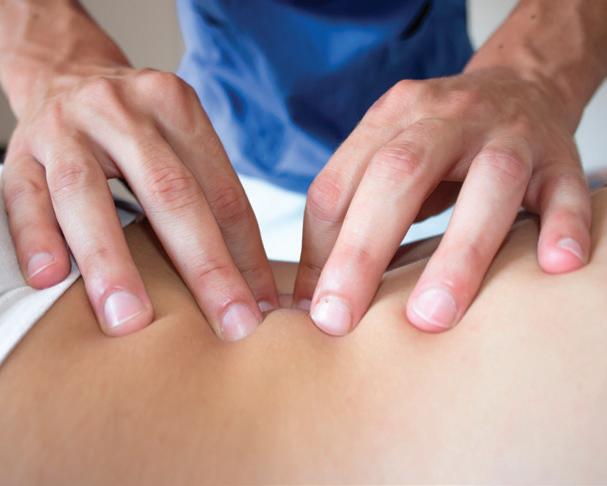
After identifying the underlying cause/s (which occasionally do require referral for an x-ray, C-T scan or MRI), your osteopath will set some treatment goals with the aim being to restore maximal pain-free movement to your muscles and joints.
Prevention, Treatment & Rehabilitation.
Prevention, Treatment & Rehabilitation.
Our treatment approach is tailored to your needs and combines injury diagnosis, prevention strategies, manual therapy and exercise rehabilitation to help you manage your injuries.
Our treatment approach is tailored to your needs and combines injury diagnosis, prevention strategies, manual therapy and exercise rehabilitation to help you manage your injuries.
We work with you to find the source of your pain and give you the treatment you need to return to your active lifestyle.
We work with you to find the source of your pain and give you the treatment you need to return to your active lifestyle.
What to expect after a treatment?
Because of the physical nature of the treatment, it is not unusual to sometimes feel sore in the first 24-48 hours after treatment, similar to that felt after mild exercise. This can indicate that the treatment process is continuing. These symptoms typically are mild and respond easily to conservative measures, such as heat, rest and fluids. It is usually a good idea after treatment to take it easy for the first day or two.
Your osteopath with discuss with you what symptoms you are to expect after a treatment. If symptoms last longer than three days or cause concern, do not hesitate to contact your osteopath.
Disclaimer:
Osteopathy
Osteopathy
Exercise Rehabilitation
Exercise Rehabilitation
Clinical Pilates
Clinical Pilates
Massage
www.gohealthier.com.au 35 Osteopathy
1287 Nepean Hwy, Mt Eliza T 9787 7702 vsrc.com.au
1287 Nepean Hwy, Mt Eliza T 9787 7702 vsrc.com.au
Massage This article was supplied and written by Osteopathy Australia. For more information please visit www.osteopathy.org.au
CrossFit: How does it work?
CrossFit is a revolutionary method to train. Designed to build strength and increase endurance, CrossFit is set out in achievable but challenging workouts. This new and improved exercise workout giving great results for all.
The method
CrossFit training is not the same as the conventional three sets of 12 repetitions gym users are used to. It is training against the clock or against a given task, a combination of gym-based exercise movements ranging from the simplest compound exercise such as the squat to the most complex power movements such as the snatch. The beauty of this method is the realm of the unknown.
You will not know what exercises to expect until you get to the training session. That is, essentially, what is so exciting and challenging about CrossFit.
Each session usually contains:
■ An extended warm up
■ A practice round to help improve skills and technique
■ The main Workout of the Day (WOD)
■ A cool-down and stretch
The workout
The variety of exercises and whole-body focus (not specialising on one muscle group) will build an all-round athlete who is capable of doing anything the workout throws at them. It is about your ability to work at a high intensity for a moderately long period of time, which will have great effects on sculpting your body and/or losing weight.
The workout done in each session is called a WOD or Workout of the Day. They are scalable which means that you do not need a baseline strength level to participate and it can be tailored to your strength level.
The changing WOD gives people a chance to experience something new each time they go to a CrossFit session. The variety allows the participant to be challenged and not become bored with the workout as can happen with regular programs.
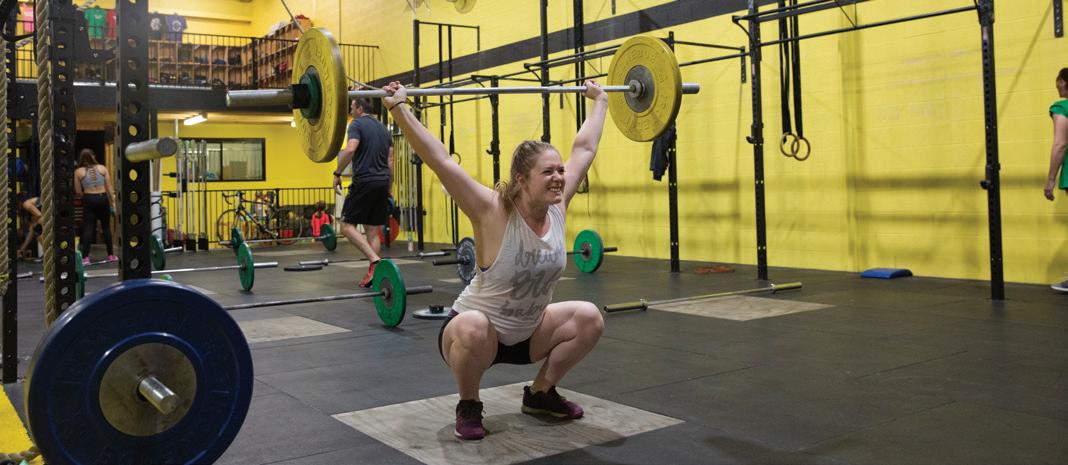
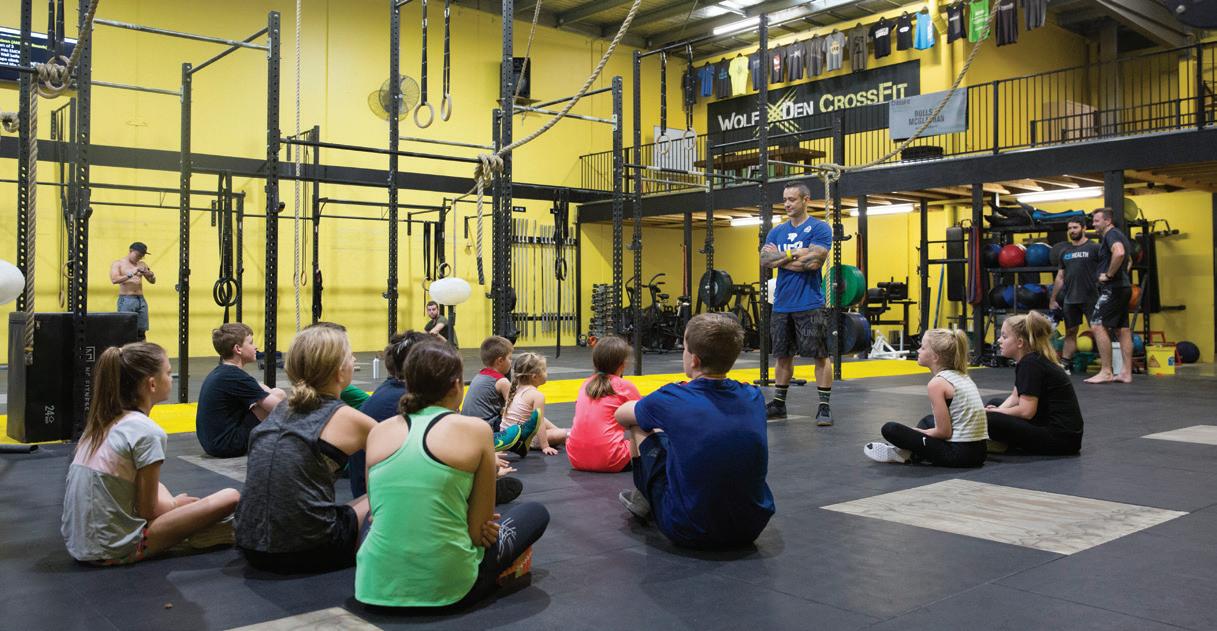
36 www.gohealthier.com.au CrossFit
Tips for beginners
■ Don’t try to immediately start doing each workout as prescribed and risk injury due to not being familiar with the movements and the intensity. Follow your coach’s instructions about scaling options to ensure safety comes first.
■ CrossFit fundamental classes are essential for all eager participants. Learning movements is one thing; understanding them takes countless repetitions.
■ Choose a gym that looks after you throughout the learning phase of your CrossFit journey, and make sure your coaches are qualified and attentive.

■ Anyone can participate in CrossFit, from a trained athlete to high-school kids and couch potatoes. The best part of CrossFit is that it challenges you at your current level of fitness, slowly helping you to progress through to tougher challenges.
Things to consider

■ Do not set your expectations too high when you join CrossFit. It is hard-love, out-of-your-comfort-zone training.
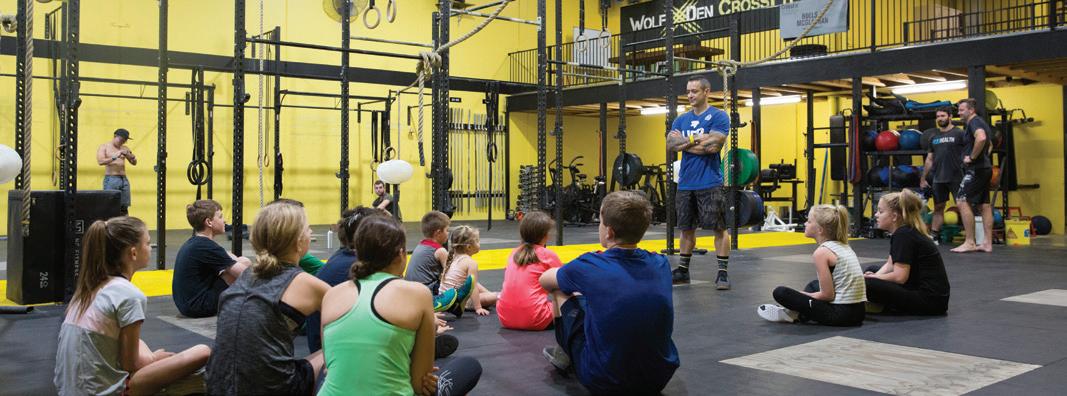
■ Injury, rehab or clients with postural anomalies need to be very careful with CrossFit. Share your medical history with your coach and work with your allied health professionals to determine what will work best for your body.
■ Compared to other group classes. CrossFit will push your physical and mental capacities much harder. Be prepared to work hard especially if you are not accustomed to working hard in a short amount of time.
■ Always come prepared for your classes: bring your water bottles for hydration and a ‘can-do’ attitude.
■ The intensity of the workouts will change your body shape. You won’t, however, become ‘big and bulky’ like a bodybuilder. Bodybuilders train in a more isolated and specific way, but CrossFit works on movements that the body is already designed and accustomed to do.
CrossFit has become a sport that anyone can compete in anywhere in the world. It’s a great workout for those wanting a challenge and something they won’t get bored with.
www.gohealthier.com.au 37 CrossFit
Disclaimer – For more information, a consultation or a free class trial, please visit www.wdcf.com.au. Article was sourced and referenced from https://fitness.edu.au/the-fitness-zone/article/what-is-crossfit/. How would you like to kick off your fitness journey with with like-minded individuals in a family friendly environment? CROSSFIT BEGINNERS COURSE JOIN THE WOLFE PACK Join our community now! Beginners Course $200 and then get 2 weeks FREE! Wolfe Den CrossFit 0412226529 jeremy@wdcf.com.au wdcf.com.au
Raising a Wee Problem
You may have more than a wee problem if you’re experiencing a little bladder leakage (incontinence) now and again (pun intended). These occasional leaks may indicate you have a prolapse.
One third of postnatal women experience incontinence
50% of postnatal women experience prolapse. Women who have had a caesarean can be at risk too.
Men can also be at risk of experiencing a prolapse.
What is a prolapse?
Essentially, a prolapse is the falling-down or slipping out of place, of an organ, such as the bladder, rectum or vagina. The first signs might be that of leaking (either wee or poo). But because the prolapse is in its first stages, you may not feel anything and just reason you have a weak pelvic floor. Many women believe a little leakage is just a normal and natural part of motherhood and ignore it. As a prolapse progresses, your bits that are supposed to be on the inside, start to pop out to the outside.
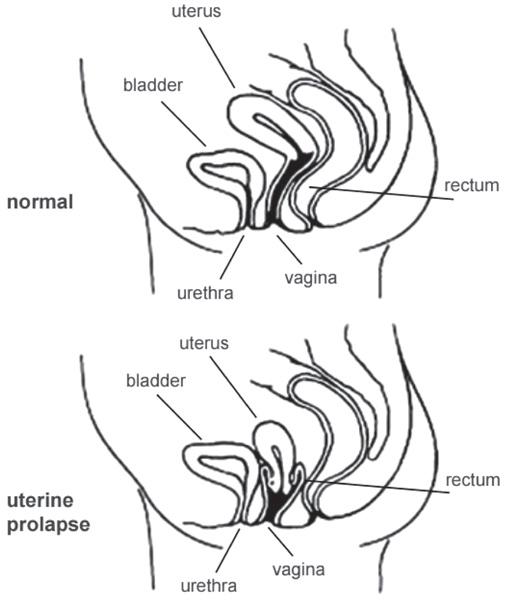

A prolapse won’t kill you. Many women describe it as a heavy or dragging sensation and it is usually worse at the end of the day. However, when the prolapse starts protruding significantly out of the body it can become very sensitive, as the bits that normally don’t see the light of day start to rub against your clothes. That’s going to be incredibly uncomfortable.
When prolapse reaches this stage things become more complicated. Your pelvic floor is unable to contract functionally when there is something hanging in the way. This is much harder to ignore than a little leakage now and again. Lifting makes prolapse worse and when you have a baby and perhaps a toddler and do stuff like shopping and washing, this can become quite a drag… literally.
Prolapse can affect self-confidence and can become a serious impediment to enjoying alone time with your partner. A woman with a prolapse may need to plan activities carefully and would certainly worry about performing any sort of exercise. Unfortunately, avoiding exercise may lead to a whole host of other problems, such as weight gain, diabetes or heart disease.
What can cause a prolapse?
The more vaginal births you have, the more likely you are to have a prolapse.
Chronic coughing (such as smoker’s cough or poorly controlled asthma).
Constipation- chronic straining to empty the bowel can cause prolapse.
Heavy lifting (washing baskets, supermarket bags or children).
Strength training or high-intensity exercise.
38 www.gohealthier.com.au Prolaps / GYM
Vaginal Prolapse source: https://www.continence.org.au/pages/prolapse.html
Did you say exercise can cause a prolapse?
Yes. But, don’t panic!
First, keep your pelvic floor muscles strong - no matter what your age. This is not merely a matter of doing more Kegel exercises or taking yoga or pilates classes. It is extremely important that you see a Women’s health physiotherapist who will help you to understand how to activate your pelvic floor correctly using an ultrasound. Then, practice activating your pelvic floor! Return after a few weeks for a follow-up to make sure you’re still activating properly.
Employ mindful exercise
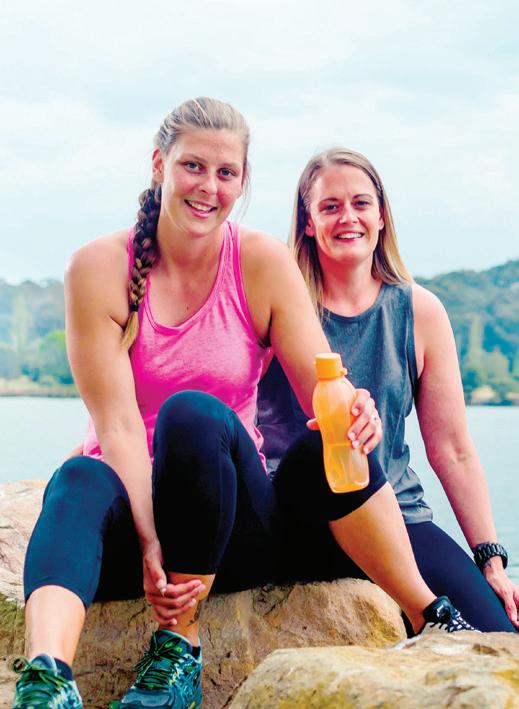
Don’t stop exercising altogether. If your fitness instructor looks at you strangely when you ask them to modify exercises to accommodate your pelvic floor, don’t despair. Slow down, be mindful of what you are doing and concentrate on perfect form with each movement rather than speed. Close your eyes if you can. Pay attention to how you feel and respond to what your body needs. If you want more intensity, consider adding more weight. Can’t perform the exercise properly? Use less weight or find an alternate exercise.
Don’t be intimidated if your personal trainer screams at you to go harder. Respond that you are ensuring you are using correct form to keep yourself safe. Not happy? Shop around for an instructor or facility that understands these issues and will support you.
If you suspect that you may have a prolapse, be sure to see your GP or a women’s health physiotherapist immediately.

www.gohealthier.com.au 39 1300 287 837 LIVE STRONGER Membership benefits include: All in one place! No obligation consultation & 7 DAY TR I A L ^ ^New female adult members only. Valid for 7 consecutive days at participating clubs Excludes Curves Complete, CurvesSmart and O er ends 31/12/18. ials-and-promotions for T&C’s ^ 1300 287 837 LIVE STRONGER Membership benefits include: All in one place! No obligation consultation & 7 DAY TR I A L ^ ^New female adult members only. Valid for 7 consecutive days at participating clubs Excludes Curves Complete, CurvesSmart and O er ends 31/12/18. ials-and-promotions for T&C’s ^ Prolaps / GYM
Disclaimer : This article was sourced from www.mishfit.com.au
and provided by
www.continence.org.au
Michelle Wright
Bonnie Douglas at Curves – Mornington Reference;

@Tamlynpatersonphotography
High source of vitamin C
Sleep inducer
Good source of dietary fiber

Helps in digestion
High in folate
Power house of vitamins and minerals- Vitamins
A, B6, B12, E, and potassium, calcium, iron and magnesium.
Youthful skinAntioxidant preventing skin degradation
HEALTH BENEFITS OF
Radiation exposure in your home
Most people aware of electromagnetic fields (EMF) believe that radiation emitted from electrical systems is the most harmful form of EMF in a building. A close second would be radio frequencies from Wi-Fi and smart meters with Earth radiation being considered the least harmful to humans. But, is this true? No!
The most dangerous form of EMF in a building is generated by various forms of Earth radiation, such as grid lines and radioactive minerals such as uranium, granite and coal that cause geopathic stress in the human body and bioplasmic radiation (human generated), resulting in emotional, illness and death imprints.
Here are some of the various EMF you could be exposed to in your home or workplace:

Ñ Death imprints
Ñ Negative psychic impressions/imprints
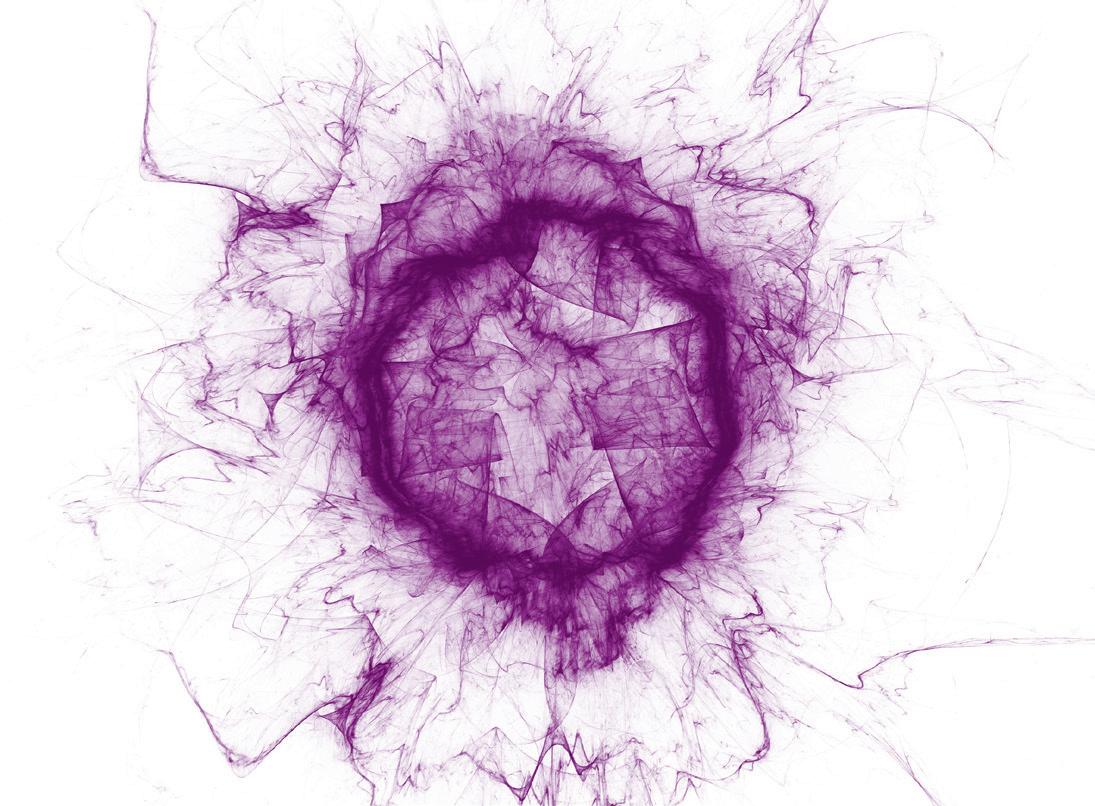
Ñ Emotional pain body imprints
Ñ Illness imprints
Ñ Radioactive minerals such as uranium, granite, coal and lead
Ñ Water veins over 1000mm wide (ground floor only)
Ñ 400m Earth magnetic grid lines
Ñ Digital TV beams
Ñ Electrical systems (electrical appliances, power points and smart meters)
Ñ Radio frequency and microwave fields (Wi-Fi and smart meters)
Ñ Fluorescent lighting
Ñ Solar wind activity
42 www.gohealthier.com.au
Healthy Living
Intuitive building biology assessment
Assessing the interior of a building for EMF from electrical appliances and systems as well as outside hazards such as radio frequencies from mobile phone towers, but excluding all forms of Earth and bioplasmic radiation can present misleading results.
Digital televisions have their own hidden dangers that need to be assessed in a home. What many don’t know about our digital televisions is that they create an EMF in the form of an imprinted beam in front of the screen that is the actual size and shape of your screen. This can travel through the house and into the neighbour’s property. A digital television EMF cannot be detected with a conventional RF Meter or Gauss Meter which is why we prefer to use smarter EMF detectors such as the Lecher Antenna or Biotensor.
Wi-Fi router location that is too close to people in a home is another danger. Wi-Fi creates a charged field up to two meters around the router itself when someone is using the internet. This charged EMF field can cause a lot of electromagnetic stress in the body and is quite noticeable, especially if you are electro-hypersensitive.
Electrical systems, especially power points and the meter box/smart meter, are another issue. In houses more than 50 years old where electrical wiring has not been upgraded, some power points may create EMF up to 1.5m. While the smart meter, or meter box, will create an EMF of up to 3m.

In our consultancy work, we are often called out to premises when occupants believe their electrical system or smart meters are affecting their health. However, more often than not, the real danger is neither the smart meter nor the EMF from electrical systems. The biggest problem is usually as a result of the current, or previous occupants’ emotional distress which can be transferred to the new occupant and coupled with physical illness via bioplasmic imprinting within a house. For example, the older the building, the greater the accumulation of bioplasmic radiation fields.
Someone passing away in a house, or on the land before a building is constructed, will leave an initial imprint (death imprint) where the death took place, but the bioplasmic field will also extend to the property boundary. If the death imprint is beneath the roofline, the space will act as a resonant cavity amplifying the charge throughout the building.
In the workplace, the problem we see the most is negative psychic impressions where workers aim their negativity either towards each other, towards management, or negativity is directed at them from a competitor. Negative psychic impressions are also common within rental properties and buildings where there has been family in-fighting such as a marriage break-up.
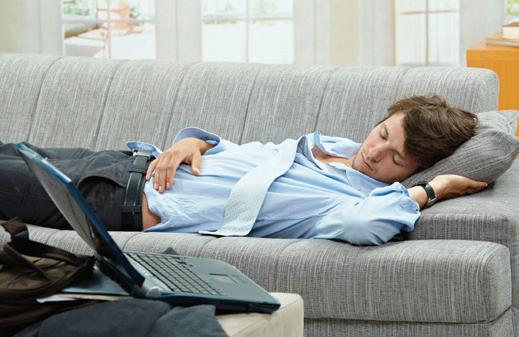
What can you do about EMF exposure?
You need to consult a building biologist, an expert in this field, to neutralise the many different electromagnetic radiation and Earth radiation fields as well as the various bioplasmic radiation imprints, found in any given space.
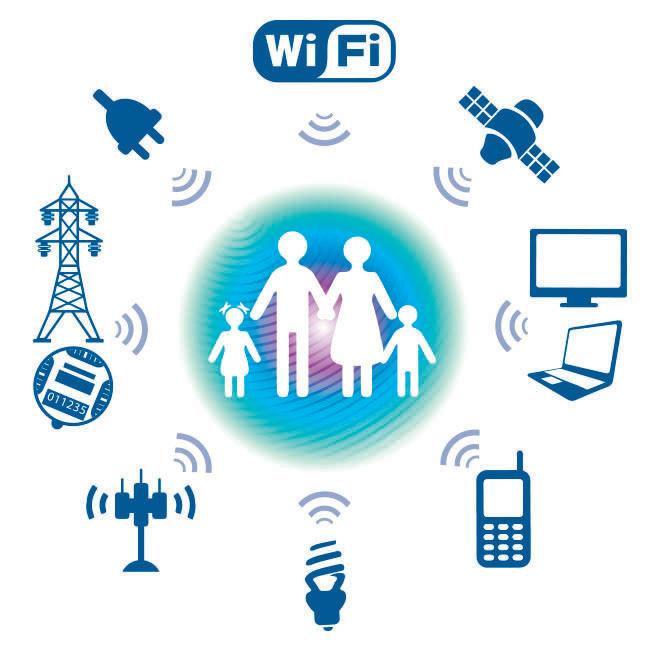
www.gohealthier.com.au 43
Healthy Living
Disclaimer: This article was written and provided by Gerard Bini, Intuitive Building Biologist. For more information, please visit www.orgoneeffects.com
Discover hypnotherapy
What is hypnotherapy?
Hypnotherapy is when a hypnotherapist guides a client into a deep state of relaxation – a state between waking consciousness and sleep – similar to when we are day dreaming. Once in this state, your subconscious mind becomes very suggestible and the hypnotherapist can work with you to make changes to your thoughts, habits and behaviours.
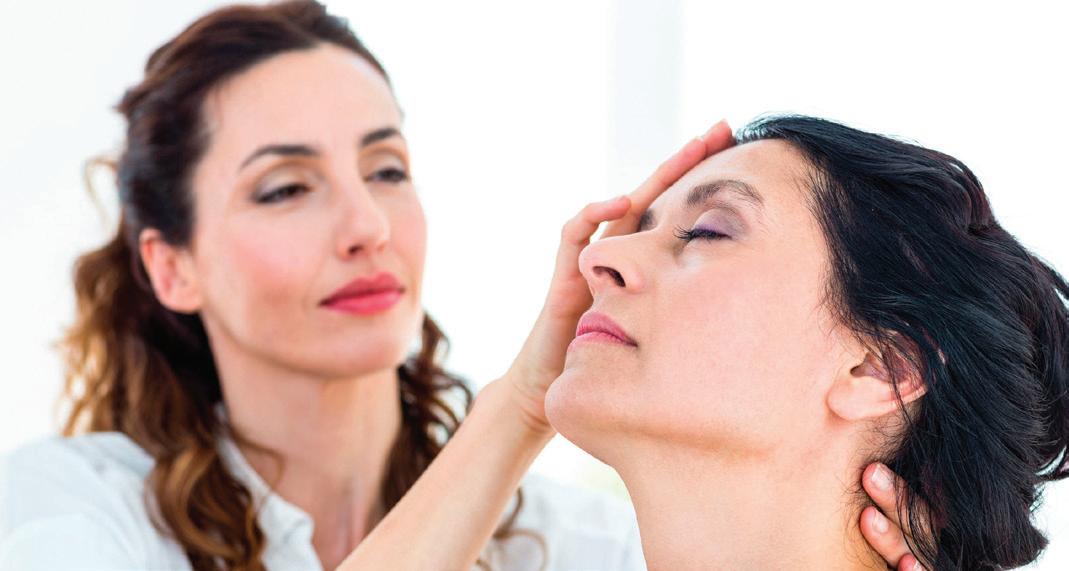
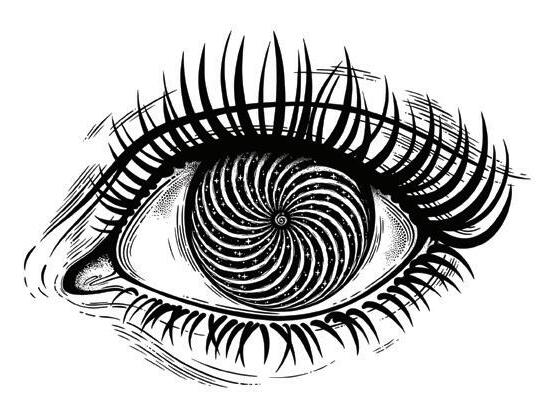
All hypnosis is self-hypnosis, the hypnotherapist guiding you to make the changes that you need. Therefore, you cannot be made to do something you do not want to do. You cannot be made to cluck like a chicken unless you actually would like to!
Conscious mind versus subconscious mind
In hypnotherapy we categorise the mind in two parts: the ‘conscious mind’ and the ‘subconscious mind’.
The conscious mind is where we make all our logical and analytical decisions, the thoughts we are aware of. The conscious mind is very cognitive, always thinking and analysing information, and will discard any information it does not want to keep. All the information (including the discarded information) is then stored in the subconscious mind. Interestingly, the conscious mind is only around 10% of our mind. The remaining 90% of our mind is our subconscious mind.
The subconscious mind is our storage system and simply accepts information as facts from the conscious mind without trying to analyse or interpret this information. Because of this, we store incorrect or unhelpful information. The subconscious mind does not decipher between what is real, and what is not, but uses this information to create our beliefs and to form all of our habits.
Our subconscious mind aims to be very helpful. It stores all of your habits and learnings such as driving a car. You do not need to consciously think to take your foot off the accelerator and put it on to the brake, your subconscious just knows what you are doing.
44 www.gohealthier.com.au Hypnotherapy
Hypnotherapy is becoming more and more well-known and utilised to assist with many different concerns in everyday life. From quitting smoking, to weight loss, anxiety, habits or even pain management. Hypnotherapy can be an effective tool in changing thoughts, habits and behaviours.
Here are some examples of how the subconscious and conscious minds work:
Smoking – You have been told that it will help you relax at one point in your past. You try a cigarette and the deep breath relaxes you (although smoking in fact raises the blood pressure and heart rate thus not relaxing you at all). The problem is, the subconscious mind has associated smoking with relaxation or misinformed information. From then onwards, every time you need to relax, without even thinking about it consciously, you turn to a cigarette. You now consciously know that smoking is bad for you, however you struggle to quit because of your subconscious.
Weight gain – In the past, you were bored or perhaps lonely and needing comfort. You indulged in food and felt better. The boredom was gone and you had something to do. Again, the subconscious has stored this away, and whenever you are looking for comfort or to relieve boredom your subconscious leads you straight to the cupboard, without you even thinking about it. As time has gone on, this has lead to increased weight gain, causing you to be unhappy and need comfort, leading you back to food, and the cycle continues.

Anxiety – While publicly speaking someone in the crowd laughs and this makes you feel anxious. You feel better once you are off the stage. This is then held in your subconscious. Your subconscious reminds you of this feeling (the anxiety) whenever you think about public speaking, in order to protect you. The more this happens, the stronger the fear. The problem is, this was only your interpretation, and the person was likely to have not been laughing at you at all.

The subconscious mind is very powerful and very helpful providing it has been given the right information to work with. If your subconscious mind is not allowing you to live your best life, or is holding you back, perhaps it’s time to make a change.
Disclaimer: This article was written and provided by Emma Mitchell from EM Hypnotherapy. For more information please visit facebook @emhypnotherapy or call 0432 062 157.
MITCHELL BFSc&Nutr CLINICAL HYPNOTHERAPIST
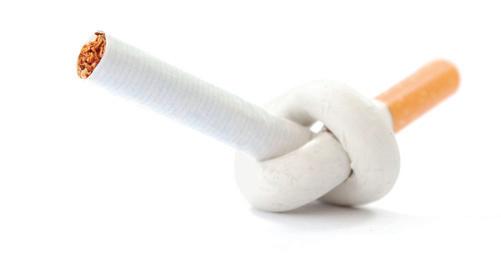
www.gohealthier.com.au 45 Hypnotherapy
0432 062 157 emma@emhypnotherapy.com.au EM HYPNOTHERAPY Clinical Hypnotherapist EM Hypnotherapy
EMMA
Kinesiology explained
Kinesiology was founded by a chiropractor who combined his skills and the techniques of Chinese medicine and received phenomenal results with his clients and boom Kinesiology was born! A modality that looks at improving your overall physical, mental, chemical and emotion health. Here we answer some need-to-know questions about kinesiology.
What is Kinesiology?
Kinesiology is a gentle, non-invasive complimentary therapy that looks at the connection between our psychology and biology. This basically means looking at how our emotions and mental behaviours can contribute to our physical body. Your body is like a massive computer – it stores everything and without the knowledge of knowing how to get rid of unwanted programs these memories remain in your nervous system and affect the way our machine works. Kinesiology combats the physical, emotional, mental and chemical health hurdles your body is having. Working with all four of these components, kinesiology is thorough in telling you what your body needs for it to improve.
Kinesiology works with muscle testing. Through the defined art of muscle testing we can communicate directly with your nervous system quickly and effectively. Your muscle responses tell us where and how your body is stressed and what it is asking for to be improved.
Still confused about muscle testing?
You can try it out yourself right now. Whole body testing is the perfect way to practise communicating with your body. It’s simply paying attention to how your muscles respond, which in turn makes your body lean forward or backward.
To try it out now, stand in a neutral position with your arms relaxed by your side and your feet comfortably apart - about the width of your hips.

As you are standing neutral, think of something positive. Think of something that makes you beam (that you can’t help but smile about). What happens to your body? It begins to lean forward.
Now think of something negative, something stressful that you don’t enjoy. Your body will begin to lean backward.
Practise this a few times, the more you practise the more you’re in tune with your body’s responses. When your body leans forward, it’s giving you a positive response. It’s telling you yes (the same way we are drawn forward to things that we want to be around). When your body leans backwards, it’s showing a negative response, it’s telling you no (the same way we repel ourselves from situations we don’t want to be around or people we avoid).
If your body stays neutral, it’s not bothered. Think of something with more positive or negative impact on your life to feel a greater response. Practise by saying ‘yes’ to feel your body go forward and ‘no’ to feel it go backward.
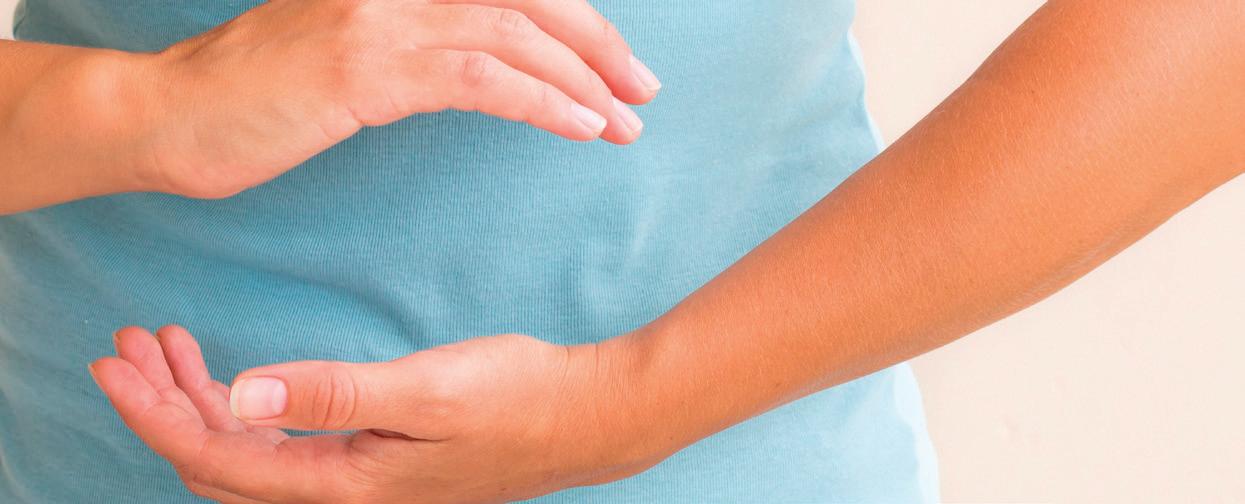
46 www.gohealthier.com.au Kinesiology
How can kinesiology help me?
Kinesiology can help with reducing symptoms that are irritating or discomforting to your everyday life. Symptoms such as headaches, muscle pain, irresponsive immune systems, food sensitivities, skin irritations and much more. Kinesiology can enhance the function of your body, whether it be fertility, better working muscles, improved gut health or loss of weight. Kinesiology focuses on your wellbeing. You may need some emotional clearing so you are no longer being held back or help in seeing the subconscious sabotages that are stopping you in making more money in your business. The avenues are endless.
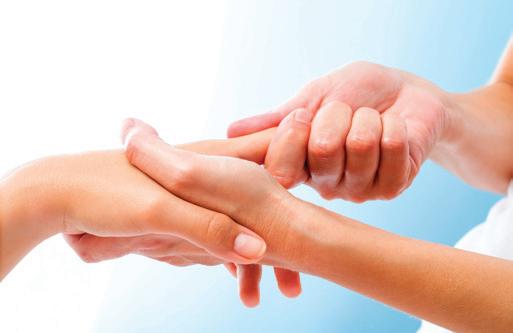
What does a kinesiologist do?
It’s very important to note that kinesiologists do not diagnose. We are therapists skilled in telling you what your body wants whether this is a lack of nutrition, an immune sensitivity, reducing physical pain, working with mental and emotional health and much more. In turn this helps reduce symptoms such as skin irritations, headaches, sleeping troubles, physical discomforts or other symptoms that are affecting your everyday life.
How often do I have to see a kinesiologist?
Your body will tell you. Kinesiologist is a maintenance therapy, just like chiropractic, physio or even going to the gym. Everyone’s body is different so check with your kinesiologist as to what your body is asking for. When your symptoms have reduced or gone you want to make sure they stay away so you can keep maintaining your symptom-free lifestyle.
Reference: Dr Bruce and Joan Dewe school of ICPKP.
Disclaimer: This article was written and provided by Kathy Beardmore from Connecting Balance. For more information or to make an appointment, please visit www.connectingbalance.com
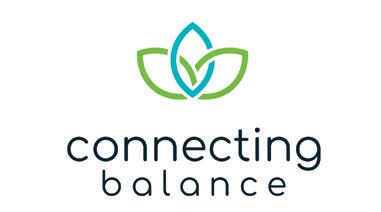


www.gohealthier.com.au 47 Kinesiology
Pakenham & Warragul clinics 0423 390 801 | 03 5636 4902 connectingbalance.com | warragulwellnesscentre.com.au Kathy
Kinesiologist
emotional, mental and physical health issues
free 30 minute consultation Anatomy Kinesiology K Biomechanics Physiology
Beardmore
working with you to combat
book for your
Wealth and wellness: Create abundance with money Reiki

Money. It’s a complicated topic that stirs up all kinds of emotions, memories, fears and associations. And although most of us would say that yes of course we want more of it, below the level of our conscious logical awareness, there are ways that most of us consistently resist it. Usually without realising it.

What is a money block?
If this is the first time you’re encountering the concept of a ‘money block’, the idea can seem a tad ridiculous. What on Earth is a money block and why would anyone have one?
A money block is anything that blocks your ability to earn, attract, retain and build personal wealth – and most people have a bunch of them. They come in many forms and usually arise from experiences, traumas and fears that tell us that wealth comes at a cost. And that cost may not be worth paying.
Our positive associations with money are easy to see. For most of us, having money means having choice, freedom and empowerment. Lottery advertising paints a good picture. But the negative associations we have with money are much harder to discern. They hide from our conscious awareness but they are there, limiting our ability to see opportunities or triggering doubt and limitation when viable possibilities for financial growth appear.
Society conditions us to look for explanations for our situations outside of ourselves. And although the external environment clearly has some influence, it is not the full story. Our beliefs, feelings and energy (or vibe) are the filters through which we interpret everything that happens in life. They determine whether we see opportunity or danger. Whether we feel capable or incapable. Deserving or undeserving.
Here are some limiting beliefs you may be holding onto. It’s hard to make money. There is not enough money to go around. I can’t have money AND free
time. Accepting money incurs a debt. Rich people care only about themselves. I will get by ok, but I will never be wealthy. I don’t know enough/I’m not good enough/I don’t have the training/I need to do XYZ before I can earn enough money to be wealthy.
Whether or not these (and other) limiting statements are true is almost irrelevant. If any of them feel true to you, then you will live a life that proves and perpetuates them. They become self-fulfilling prophecies.
Our society is structured in a way that makes it basically impossible to live without money. Money therefore represents safety and security and consequently taps us into our most primal fear: survival. Without survival, there simply is nothing else. This makes money blocks some of the most pervasive and persistent of all energetic blocks. But they can be healed.
48 www.gohealthier.com.au Energy Healing
What is Money Reiki?


Money Reiki is an energetic healing modality that is very specific in its scope and focus. It works with your energy system to uncover, release and heal blocks, beliefs and traumas that prevent you from being totally open to an abundance of financial wealth.

Because we are made of energy, our energy field is the foundation of who we are. Our thoughts, beliefs and feelings all affect, and are directly affected by, our energy fields. Working directly with our energy system is therefore working on the foundations rather than the superficial. Addressing the problem rather than the symptom.
Money Reiki works by unearthing and addressing the hidden blocks: the energetic and emotional hurdles that stop you from feeling that wealth is either possible or even desirable for you. It doesn’t magically fix things for you without your input. It moves what it can, and it uncovers what needs your attention. To get the deepest level of healing, you must be ready and willing to be real with yourself, discover what needs healing and do the work.
Working with your money energy is incredibly powerful, and not just because it can shift your finances. Ultimately, your relationship with money mirrors your relationship with the world. It’s about your self-worth. Your sense of empowerment. Your ability to give and receive and feel supported. You simply cannot work on your relationship with money without naturally healing your relationship with yourself and the world around you. For those who are ready and willing, it is powerful and transformative.
Disclaimer:
Energy Healing
Medha is a Money Reiki Master and Intuitive Energy Healer and Channel. She owns and runs Ishvari Energy Healing on the Mornington Peninsula. Find her at www.ishvari.com.au
Using Astrology to Find Your Calling

Did you know that understanding your star sign can help you find happy and fulfilling work? We all know that if we’re working at something we love, we bounce out of bed in the morning and look forward to the day. It’s impossible to feel healthy and full of vitality when we have to drag ourselves to work. Some jobs will always come easier to us than others, and when we understand the nature of our birth sign we can easily see the kinds of work that nurture our energetic make-up.
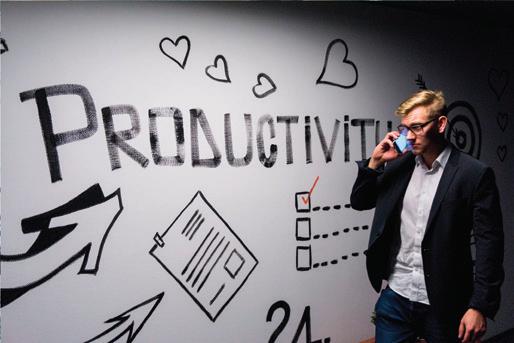
Why? Because our ‘star’ sign shows the place in the zodiac where the Sun (the source of our energy) was shining at the moment of our birth. Exploring our zodiac sign can help us discover how to open up the universal channels that bring life, wellbeing and satisfaction into our lives!

Leo is a ‘people person’. In any field they enter, they will need to express their vibrant charisma and find a receptive audience for their creativity. They are the bighearted actors, performers, presidents and leaders who love to inspire others with their warmth and mastery. They dedicate heart and soul to bringing generosity, light and vitality into the lives of others.
Sagittarians are the teachers, lawyers or visionaries who need to share their knowledge and wisdom in their field. Seeking truth, finding meaning, inspiring, promoting, pioneering - these are the gifts of a Sagittarian. Their enthusiastic directness and love of freedom, justice and adventure has a unique ability to stimulate expansion and abundance wherever they go.
Are you a Taurus, Virgo or Capricorn? Then you’re an Earth sign and your gift is a practical mastery of the physical world. For you, nothing is more satisfying than a job well done!

Taurus is calm, down-to-earth and focused on security, beauty and pleasure. Taureans make great gardeners, farmers, bankers, musicians, chefs, and masseurs. They’re connected to the physical and natural worlds, and committed to maintaining stability. Any work involving the senses - taste, sound, touch, sight, smell, or song - will anchor them and enable them to patiently ground and steady those around them.
If you’re an Aries, Leo or Sagittarius, you’re a fire sign and you need to feel challenged and inspire other people in your work!

Aries loves to compete, to win against the odds and take home the prize. Work in sales, sports, the military or owning one’s own business can channel this love of activity and self-testing. And Aries people can be great at motivating others, so any leadership role requiring courage, goal-setting and maximizing potential can really suit their confident direct personality.
Virgos love to work, to serve others. And they do it in a skilled, hands-on, super-competent manner. As a nurse, scientist, technician, editor, waiter, trainer, master craftsman, trouble-shooter, Virgo is suited to any work where attention to detail, practical analysis, research or a dedication to selfless service is necessary.
Nobody is more responsible than a Capricorn! They make great leaders, but they run a tight ship! You’ll find them disciplined, authoritarian, cautious, and with a high level of integrity. These are the workers, dentists, osteopaths, police, elders, businessmen and women. They are committed to setting limits and structuring government departments or organizations to save money while maximizing performance and success.
50 www.gohealthier.com.au
Astrology
What about the Air signs – Gemini, Libra and Aquarius? These people thrive on using language to bring people together.
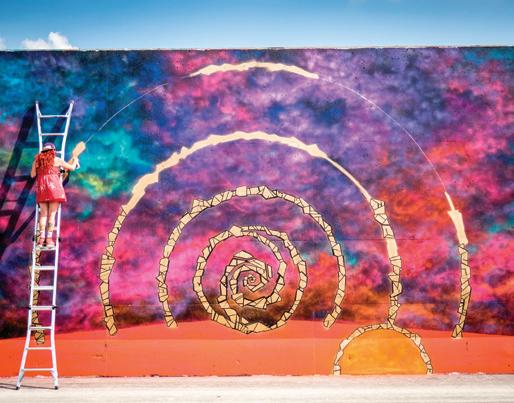

Geminis are the great communicators: the storytellers, teachers, students, journalists, drivers, comedians and entertainers. Any work that uses vehicles, written or spoken language to bridge differences, to set up conversations or social connections suits the Gemini multi-tasker. Curious, outgoing and fast-moving, Geminis are skilled networkers and are always on the lookout for anything exciting and new.
Libra loves to consider others. These people are the romantics of the zodiac and want justice, peace and harmony for everyone. Any work involving artistry, fashion, counselling, negotiation, advocacy or partnership suits their tactful, easy-going ways. Refined, courteous and co-operative, Librans feel happiest when their work embraces beauty, the arts or social alliances.
a special connection with the sea, and many of these people are drawn to the water as fishermen, divers or even oceanographers.


Are you a Scorpio? Then you’re a detective! Scorpios need to go deep, to explore what lies beneath the surface, to know the hidden aspects of life. They may be psychologists, shamans, miners, forensic investigators, psychic healers, funeral directors, sex-workers, accountants or even underworld figures! Unafraid of intensity or darkness, Scorpios gain strength and confidence by probing areas of life that other people fear.
Aquarians are all about co-ordination and conscious service to humanity. Give them a cause to fight for, an organization to run, a protest to make and they are committed. Whether it’s freedom, human rights, breaking down injustices, waking up society, innovation, even extremism, Aquarians live by their beliefs. And they thrive on any work that’s ‘out there’ – perhaps involving the internet, electricity, inventions, neuro-science, clairvoyance, social work, engineering, aviation, space, or even astrology!
Pisces is the mystic, the artist, the dreamer. With a strong connection to spirit, they may feel drawn to religion, spirituality, new age or alternative healing. Or perhaps to working with alcohol, drugs, music, the creative arts or yoga? Compassionate and altruistic by nature, Pisceans make great support or pastoral-care workers, but need to ensure they don’t become martyrs and take on others’ problems.
Let’s not forget the water signs – Cancer, Scorpio and Pisces – whose gift is working with water, emotions and with the sensitive side of life.

Cancerians are the great nurturers and historians. Super-sensitive themselves, they understand our need for family; to feel safe, sheltered and cared for. Any role involving homes and security – whether it’s emotional, physical, financial or national - suits their protective nature. They are comfortable as carers, in real estate or home loans, as cooks, counsellors, midwives, healers, antiquarians or even in border protection. Cancer has
Do you feel happy in the work you do? If you don’t, then think about exploring the work that naturally suits your ‘star’ sign. And if that doesn’t resonate, it’s possible you’re more influenced by your Moon sign or another planet in your birth chart. A professional astrologer can help you discover vocational options you may never have considered. You might just discover who you really are and what you really want to do.
www.gohealthier.com.au 51
Astrology
Julie Deitz is a professional astrologer offering readings and classes on the Mornington Peninsula. See www.juliedeitz.com for more information.
Spotlight on stroke
A stroke is a medical condition in which blood flow is disrupted to the brain resulting in cell death. Stroke is one of Australia’s biggest killers and a leading cause of disability. But the good news is more than 80% of strokes can be prevented.
There are two main types of stroke: ischemic (due to lack of blood flow to the brain) and haemorrhagic (due to a bleed within the brain). Either type of stroke can result in cell death. The symptoms depend on the area of the brain affected. The more extensive the area of the brain affected, the more functions that are likely to be affected. It can result in a person’s inability to talk, swallow, move or feel one side of their body or loss of vision. Stroke symptoms typically start suddenly, over seconds to minutes, and in most cases do not progress further.
A person may also suffer from a transient ischaemic attack (TIA) or mini-stroke. This occurs when the blood supply to the brain is interrupted temporarily. Although signs and symptoms often resolve, a mini-stroke can be a precursor to a major stroke and should be treated with the same urgency.
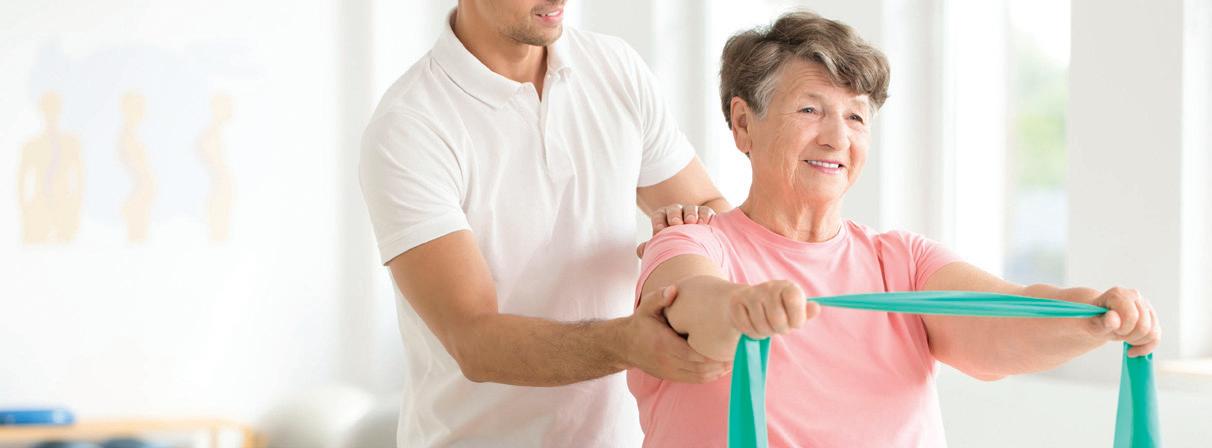
Stroke is a medical emergency
The Stroke Foundation recommends the F.A.S.T. test as an easy way to remember the most common signs of stroke. The acronym is used to help people remember and look for the signs of a stroke:

F – FACE: Has the person’s mouth dropped?
A – ARMS: Can they raise both arms above their head?
S – SPEECH: Is their speech slurred? Can they understand what you are saying?
T – TIME: is critical. If you notice any of these signs, call 000 immediately.
Know the risk factors
The main risk factor associated with stroke is high blood pressure. Lifestyle stroke risk factors include smoking, poor diet, stress, physical inactivity, obesity, excessive alcohol consumption and recreational drugs. Personal risk factors include age (stroke increases with age), gender (more common in males), ethnicity (higher in Asian populations), family history and specific medical conditions such as diabetes and atrial fibrillation.
Prevention and education should therefore be aimed at decreasing risk factors and promoting a healthy lifestyle and keeping active. Ways to manage/lower your risk include:
f Know your blood pressure. High blood pressure is one of the most important stroke risk factors and can be managed.
f Quit smoking.
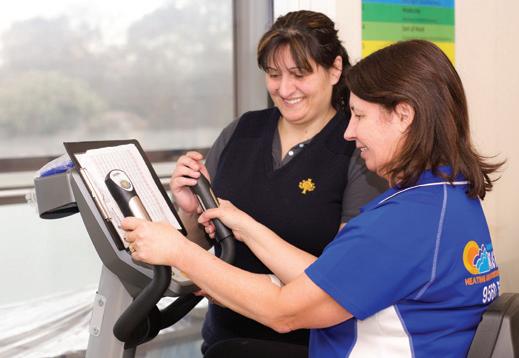
52 www.gohealthier.com.au Stroke
f Enjoy a variety of nutritious foods each day.
f Drink plenty of water.
f Be active every day.
f Limit alcohol intake. For men and women, drinking no more than two standard drinks on any day reduces the lifetime risk of harm from alcohol-related disease or injury.
What happens if you suffer stroke?
If you have suffered a stroke, admittance to an acute hospital or stroke unit is paramount to receive optimum care. In the acute phase, assessment and acute medical management and treatment should be carried out. Once a person’s condition is stabilised then the rehabilitation or recovery phase of the stroke journey can begin.
Rehabilitation starts as early as possible, usually in an acute stroke unit or medical ward. Initially, this should be provided in a specialised inpatient rehabilitation setting and then transition to providing ongoing therapy within the community.
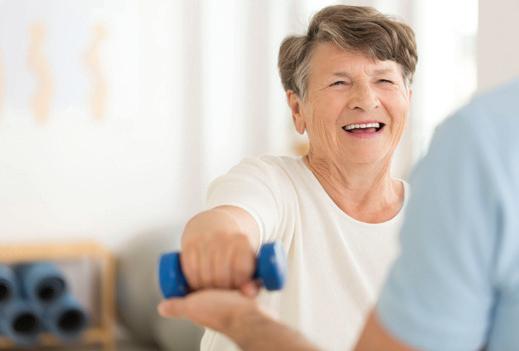
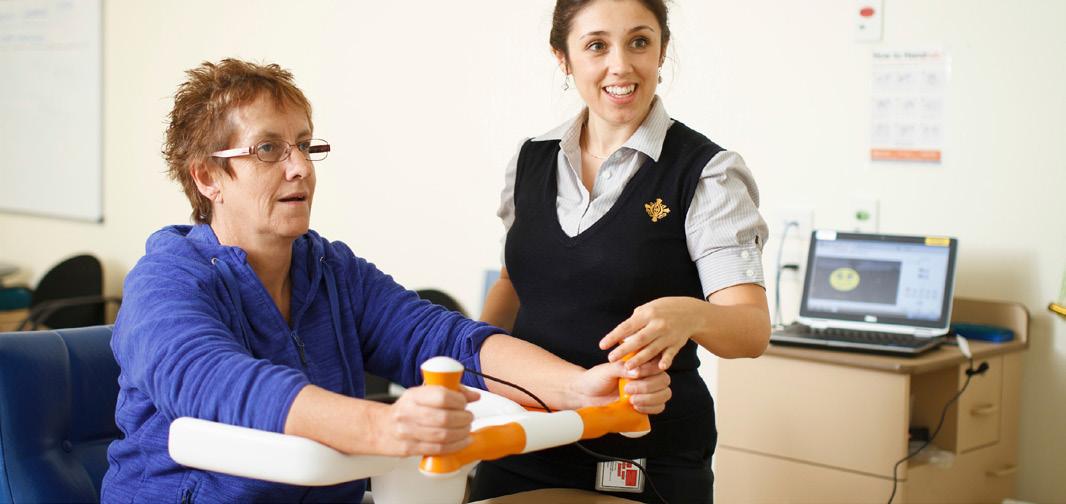
The benefits of rehabilitation include:
f Optimising your ability to return to everyday activities
f Discussion of goals and patient-centred care
f Specialised neurological rehabilitation with a multidisciplinary team involved as required
f Involvement of carers and family members in the rehabilitation and rehabilitation choices as well as discharge planning
f Transition to home or appropriate living with ongoing goals and management plans as appropriate.
The journey from initial symptoms of stroke to recovery can be long and difficult. Understanding risk factors and how to prevent the incidence of stroke, as well as recognising symptoms can significantly impact survival or availability of specific medical treatments to get a better outcome. Rehabilitation initiated in the acute phase and continued through a rehabilitation setting that offers neurological specific therapy will enable the full potential of recovery to be achieved.
Reference: https://strokefoundation.org.au/About-Stroke/ Facts-and-figures-about-stroke
Disclaimer: This article was written and provided by St John of God Frankston Rehabilitation Hospital. For more information and rehabilitation support, please visit www.sjog.org.au/frankston or call 9788 3333.
Someone in Australia will have a stroke, every 9 minutes
Deloitte Access Economics – Stroke in Australia – No postcode untouched, 2017
Let our Neurological rehabilitation team help you. Our team are dedicated to helping you improve your function after suffering a stroke. They will create a program that is personalised to suit your goals and needs. We offer specialised inpatient and outpatient programs.
Tel.: 9788 3333 Email: info.frankstonrehab@sjog.org.au www.sjog.org.au/frankston
www.gohealthier.com.au 53
Srtoke
255-265 Cranbourne Road, Frankston
How rehabilitation helps
Rehabilitation aims to restore a person’s ability to live as they did before an accident, injury, illness or surgery. It’s about helping them cope with health issues that may affect their independence and addressing a person’s physical, emotional, social, and environmental needs so they can get back to activities of daily living. A person may need to regain their strength, relearn skills or find new ways of doing the things they did before.
Who needs rehabilitation?
The need for rehabilitation crosses all age groups, although the type, intensity and goals of rehabilitation will differ depending on age and condition. Rehabilitation is patient-centred and therefore tailored to a person’s individual needs. For example, an older person who has had a stroke may simply want to be able to dress or bathe without help, while a younger person who has had a heart attack may attend a cardiac rehabilitation program to try to return to work and normal sporting or exercise activities. Someone with lung disease may undertake a pulmonary rehabilitation program to improve his or her quality of life and be able to breathe easier.
Rehabilitation programs
To attend either an inpatient or an outpatient rehabilitation program, a doctor or specialist will write a referral to a rehabilitation physician (a doctor who specialises in rehabilitation medicine) who can then determine the best program to ensure the individual’s goals and needs are achieved.
Inpatient programs: These are generally for people who require more intensive therapy and are best suited to a hospital stay where they have access to a multidisciplinary team who will design a program to help them reach their goals. Length of stay is dependent on the person’s condition and needs.
As an inpatient, you may been seen by any of the following clinicians:
f Rehabilitation physician (who oversees the team).
f Physiotherapist – They work with you to improve your balance, walking, movement and strength. If appropriate, they may also recommend hydrotherapy.
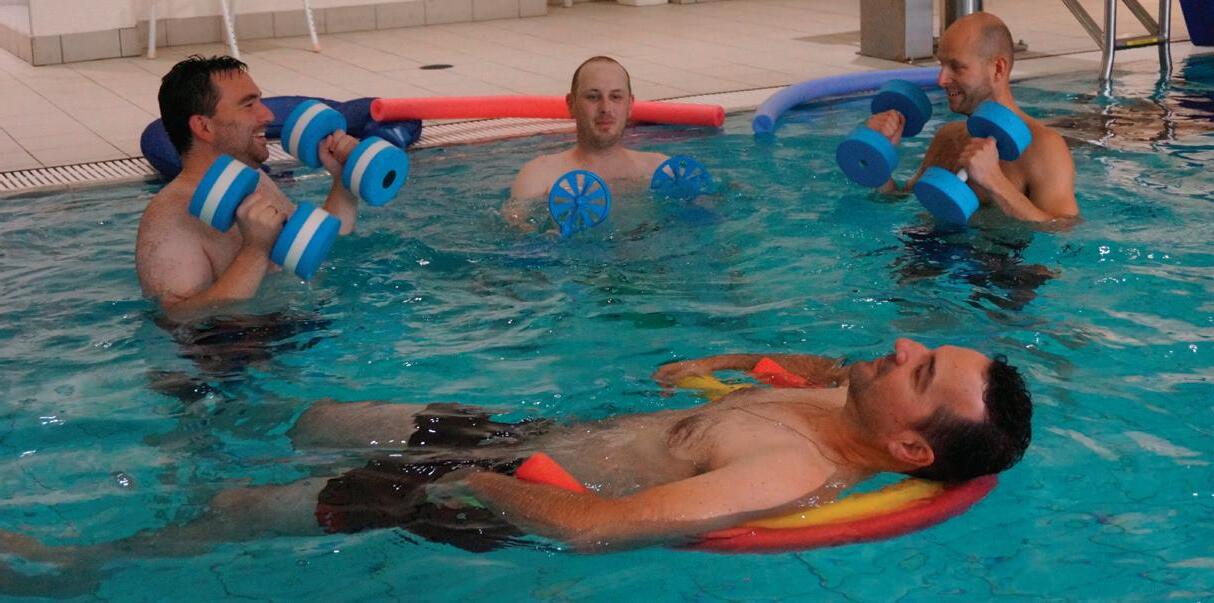
f Occupational therapist – They focus on functional goals and work with you to improve management of daily activities including personal, household or community tasks. Some occupational therapists are also qualified driving assessors.
f Nurses – The nursing team provide 24-hour nursing care in the hospital setting. They provide education and support in relation to medication, wound care, pain management and specialist advice regarding diabetes and incontinence management.
f Exercise physiologist – They provide exercise-based rehabilitation for acute and chronic conditions including musculoskeletal, neurological, diabetes, arthritis, cancer and cardiovascular diseases.
f Speech therapist – They help manage language problems, articulation issues, cognitive communication, social communication and swallowing problems. They can also prescribe alternative communication devices.
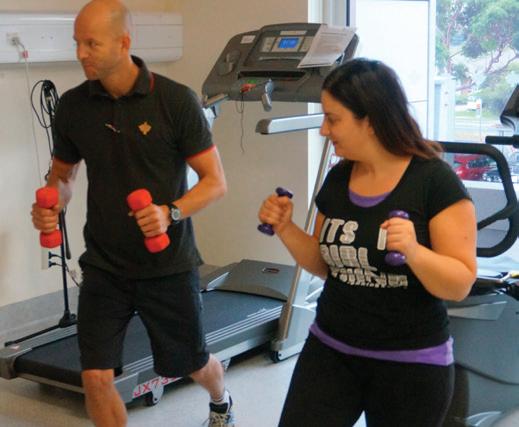
54 www.gohealthier.com.au Rehabilitation
f Dietitian – A dietitian works to ensure a person is meeting their nutritional requirements and provides healthy-eating advice for home.
f Social Worker - Advice can be offered regarding services to support patients and their families. Social Workers also provide counselling for patients and their families.
Outpatient programs: Many inpatients, once discharged, will begin an outpatient program to continue their rehabilitation. However, outpatient programs are also available to people who have not had a hospital stay. A referral from a specialist or doctor is required prior to commencing an outpatient program. Rehabilitation programs cover many areas including:
f Cardiac rehabilitation

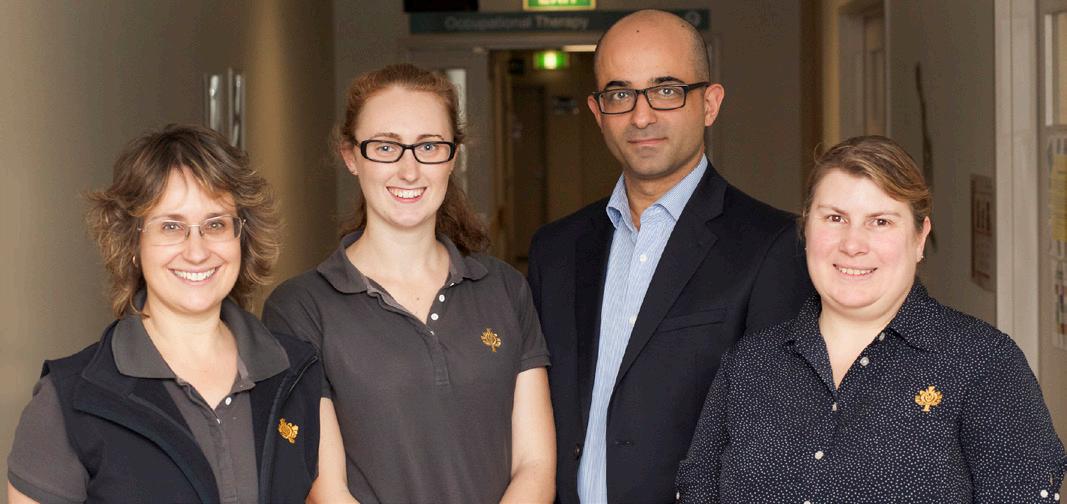
f Chronic pain management
f Driving assessments
f Diabetes management
f Falls and balance
f General rehabilitation (reconditioning) after an accident, illness, injury or surgery
f Neurological
f Oncology
f Orthopaedic
f Movement disorder programs (Parkinson’s and MS)
f Pre-op rehabilitation (preparing for surgery)
f Pulmonary
f Stroke
f Women’s and men’s health (including incontinence)
Access to rehabilitation can either be in a public or private rehabilitation hospital. If you do have private health cover, you can and may choose where you have your rehabilitation. When deciding on a rehabilitation facility it is important you research each facility to ensure it provides what best suits your needs. Most people will choose their facility not only according to location but the specialist programs being offered.
All your rehabilitation needs under the one roof
Tel.: 9788 3333
Email: info.frankstonrehab@sjog.org.au
www.sjog.org.au/frankston
www.gohealthier.com.au 55 Rehabilitation
We’ll help you get back to doing what you love Our dedicated team will work with you to create a personalised program to suit your needs and to help you achieve your goals.
255-265 Cranbourne Road, Frankston Disclaimer: This Article was written and provided by St John of God Frankston Rehabilitation Hospital for more information and support on your rehabilitation please visit www.sjog.org.au/frankston or call 03 9788 3333
HYDROTHERAPY / AQUATIC PHYSIOTHERAPY
What is hydrotherapy?
Hydrotherapy, also sometimes called aquatic therapy, is a common definition for exercise in warm water (usually between 33o to 35oC) and is a popular treatment option for patients who suffer from physical or neurological conditions. Hydrotherapy can help keep your muscles relaxed, improve joint stress and motion, increase muscle strength and help to decrease pain.
What type of conditions can hydrotherapy help to improve?
Research has shown significant results with many different types of conditions after periods of hydrotherapy. Such conditions include shoulder pain, upper back pain as well as low back pain, fibromyalgia, posturerelated pain, osteoarthritis and rheumatoid arthritis. Surgical procedures such as joint replacements, joint reconstructions, and bony fractures as well as acute injuries such as sprained ankles, torn muscles and groin and hamstring strains have all shown marked improvements after hydrotherapy. Hydrotherapy can even assist the management of certain neurological conditions such as Parkinsons Disease, muscular dystrophy, cerebral palsy, multiple sclerosis or as part of stroke rehabilitation.
What makes hydrotherapy different from regular exercise?
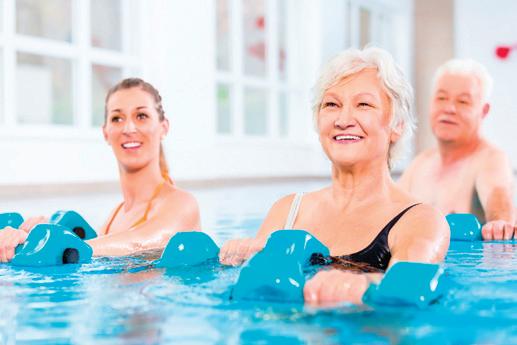
The physics of water make exercise very different to traditional exercise. Buoyancy, temperature, water pressure, water resistance and turbulence are just some of the factors that make hydrotherapy stand out.
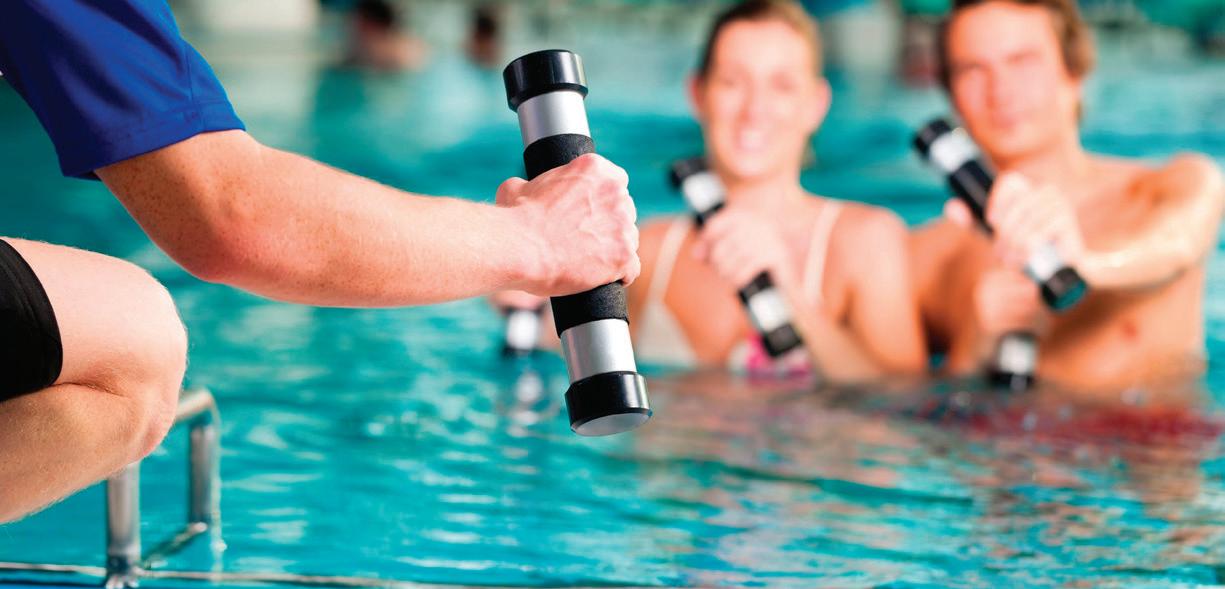
Due to buoyancy, people with conditions that limit how much weight they can bear, such as recent bone fractures or after hip replacement surgery, can exercise effectively and much earlier than would normally be possible on the land. This is critical to maximizing the best possible outcome for many injuries and conditions. If the water is at the right temperature, the warmth can block pain receptors by constantly providing thermal signals to your brain. The warmth of the water also causes your blood vessels to expand and this can lead to muscle relaxation and better swelling reduction, which is further enhanced by the water pressure. The pressure also has a strong effect on your nervous system and as a result will help reduce feelings of stress, anxiety and other worries.
Finally, turbulence and water resistance cause your movements to be tougher and helps stimulate improvements in strength over time. On land, you may add weights to your exercises, in the water, you can increase the speed of your movements. Doubling the speed of your movements will create an increase in difficulty equal to four times as much resistance. These properties can all be manipulated to further increase or decrease the difficulty of an exercise. Even simply being immersed in the water for relaxation purposes can sometimes have the intended effect.
How do I know if hydrotherapy is right for me?
It should be noted that due to the effect hydrotherapy has on the body, it is not suitable for everyone. The pressure on your legs and body causes excess blood that is normally stored in your legs up into your chest and so your heart must work harder. The weight of the water on your chest means breathing becomes a little tougher. The water pressure causes your kidneys to increase their filtration rate and so your bladder fills more
56 www.gohealthier.com.au Hydrotherapy
quickly. These situations may not be a problem when simply being immersed in water, such as a spa, but when you add the physiological changes associated with exercising on top of the effects of immersion, it can have noticeable effect. People with conditions that affect these organs, such as heart failure, uncontrolled blood pressure, asthma, open wounds or incontinence should consult with their GP or Physiotherapist to see if hydrotherapy is suitable for them. With the right advice, you can use these properties to your advantage, such as cardiac rehab after a heart attack, or pulmonary rehab after a long bout with pneumonia.
How can I do hydrotherapy?
Hydrotherapy is easy to get involved in. Many local pool centres have a dedicated hydrotherapy pool which is warm and bordered by rails. Some even supply equipment to help aid exercise, but may not have Physiotherapist supervision or assistance. The best way to get started is to speak with your Physiotherapist for advice on where you can go and what exercises you should do in the water.
Cost?
Hydrotherapy may be covered by your health fund under physiotherapy or as a separate category, but as every fund and each person’s situation is different, it is best to check with your fund to see if you are covered.
When is the best time to start hydrotherapy?
Now!
What to wear?
You can wear bathers or shorts and a t-shirt if you like.
Who’s watching?
Hydrotherapy sessions are for our patients only. No public access, the only people on deck are in the pool are other patients and the Physiotherapists.
Why have a Physiotherapist at the hydrotherapy session?
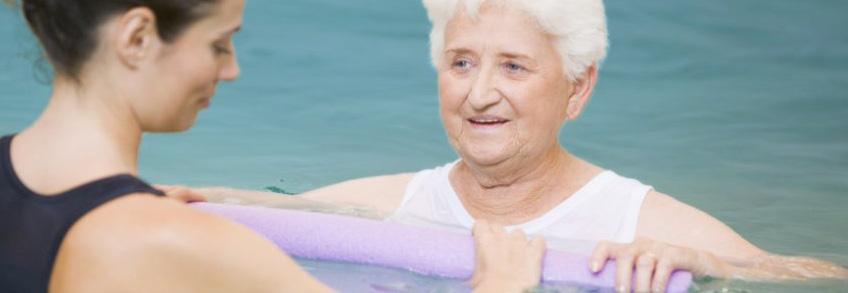
Physiotherapists are experts in guiding you through your goals and rehabilitation. They are experts in improving your strength, balance, mobility and function. They also ensure your safety while you are in the pool and surrounds.
How many in the class?
We limit the numbers in the class to ensure individual attention. We have a max of 12 in each session. Two Physiotherapists are in attendance for each session.
How long do the sessions go for? 30 minutes
Do I have to be able to swim?
No, there are rails around the pool and we will make sure your safe.
What age are your patients in the pool? 7-97!

What’s the cost?
We cater for TAC/Workcover/DVA, for private patients you can purchase individual (Casual) sessions or packs of classes. Depending on your health insurance the cost may vary. Give us a call and have a chat about it.

www.gohealthier.com.au 57 945 Nepean Highway Mornington VIC 3931 Phone (03) 5976 2212 Fax : (03) 5976 2599 Email : mornington@beleura.com.au W:www.beleura.com.au HYDROTHERAPY / AQUATIC PHYSIOTHERAPY • IMPROVE YOUR STRENGTH AND FUNCTION • GET GREATER MOBILITY AND BALANCE • FEEL BETTER !! Start now recieve 50% off your first session.
Hydrotherapy
Disclaimer : This article was provided by Beleura Health Solutions. For more information please visit www.beleura.com.au or call 03 5976 2212 and ask for an appointment for a hydrotherapy assessment.
The nutrients in oranges offer a range of health benefits.
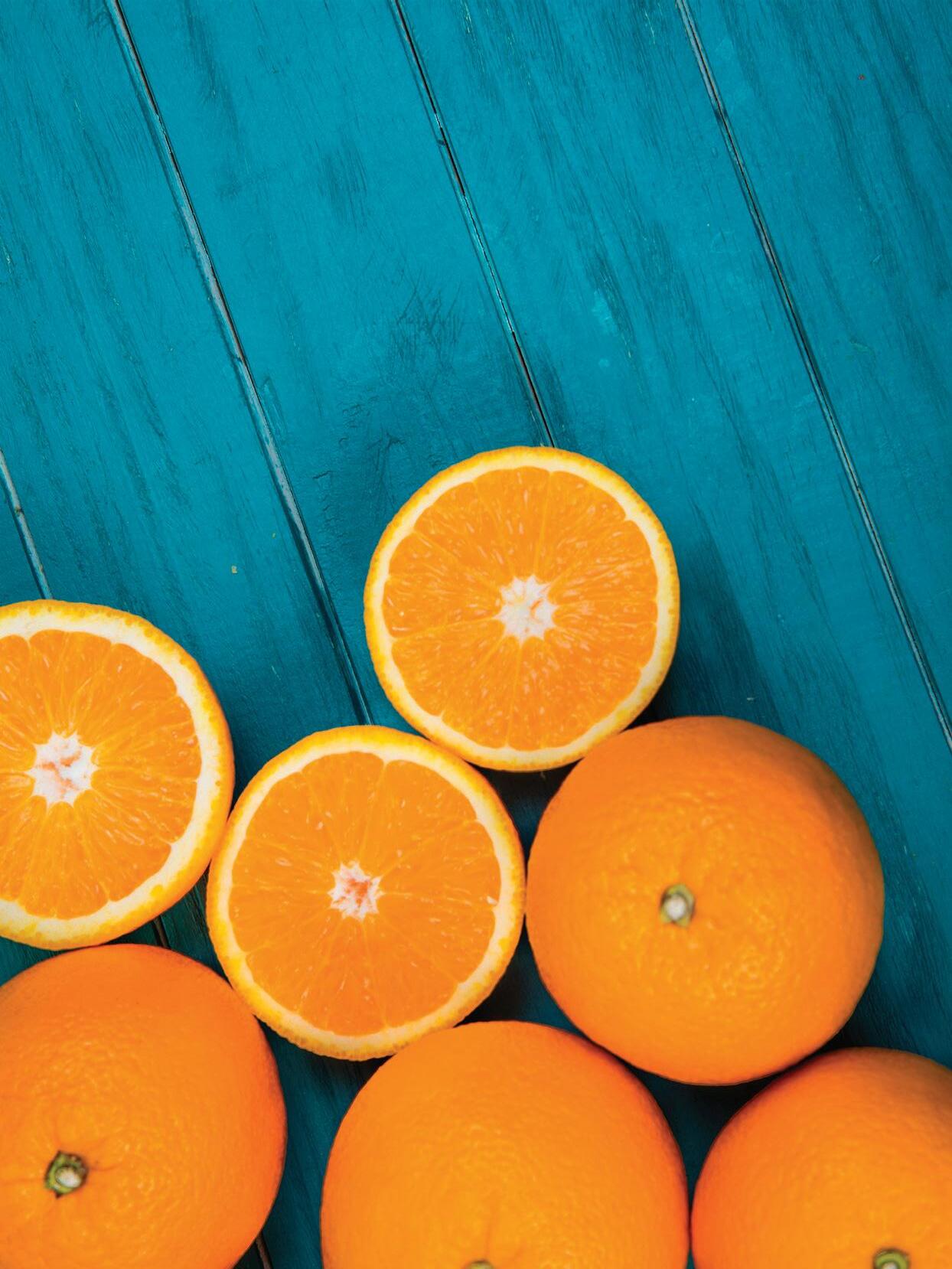
Stroke. One orange provides a range of vitamins and minerals; a staggering 130 percent of your vitamin C needs for the day.
Blood pressure.
Cancer.
Heart health.
Diabetes.
Skin.
HEALTH BENEFITS OF
Take Care of YOUR BODY
It’s the only place YOU have to live
Take Care of Your Body
It’s the only place YOU have to live
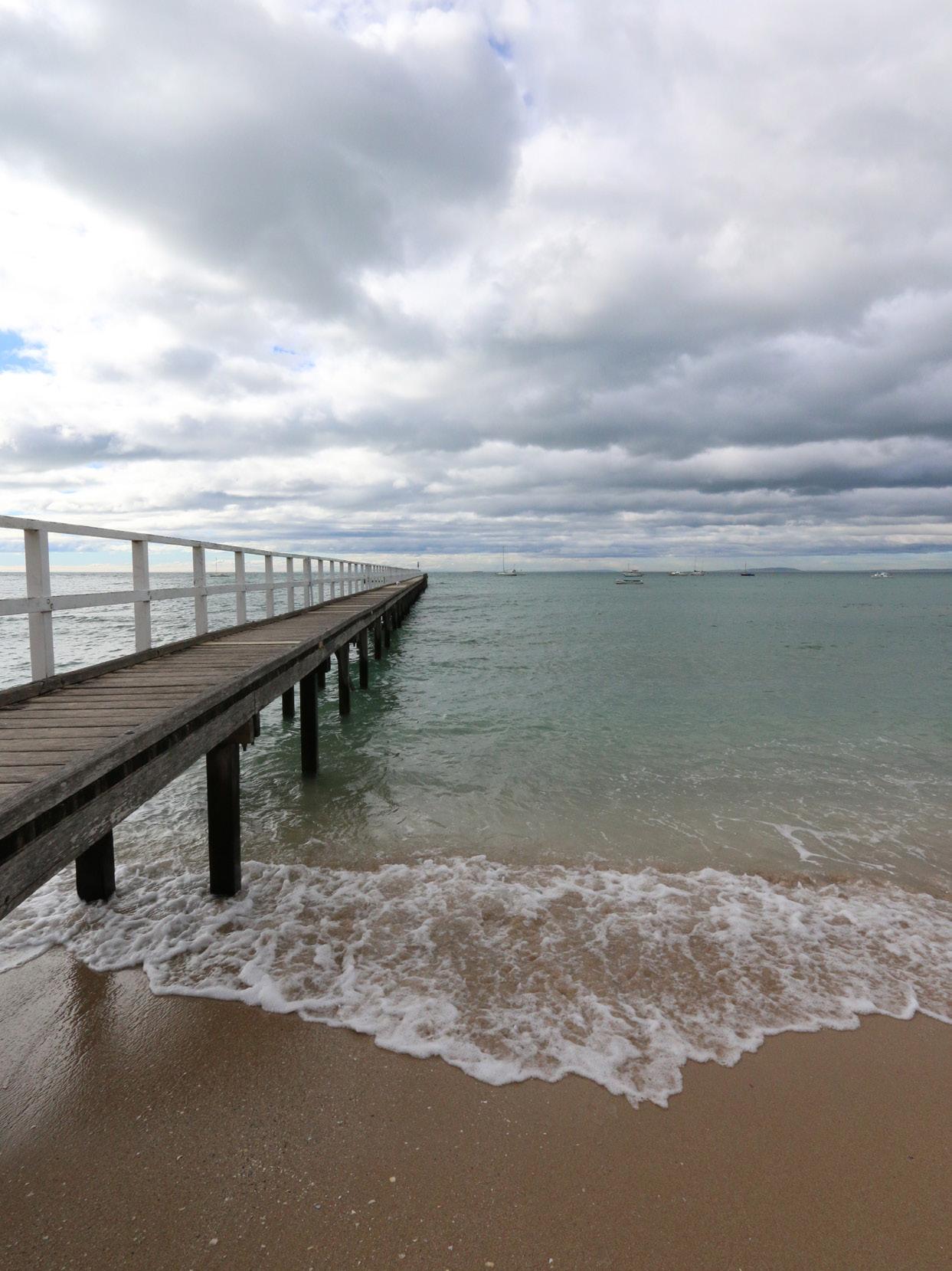
Never allow waiting to become a habit.
Live your dreams and
KEEP TO FUEL WITH POSITIVE BECAUSE IS A
Be ENERGY @Tamlynpatersonphotography
Essential oils for winter
Aromatherapy is the science of using pure essential oils for therapeutic, mood enhancing and cosmetic benefits. For centuries essential oils have filled dispensaries and provided pharmacists with the raw materials to make medicine. The modern medicines we see today evolved from these practices, but in our haste we left the ‘whole’ of the plant behind.
The term aromatherapy can be misleading as it immediately makes us think of smell (aroma). While smell is a part of it, there are many other ways to use essential oils. Inhalation, bathing and topical application are sometimes much more effective, depending on what the issue is.
Winter is a time when essential oils often get a workout. In cold and flu season, they can become a part of life. Using oils for prevention can also be effective, but sometimes we get overtired and emotional and let the bugs in. Having an essential oil collection available means that at the first symptom you can start the recovery process. Listed below are great ways you can help treat winter ills with essential oils.
Vaporiser or burner
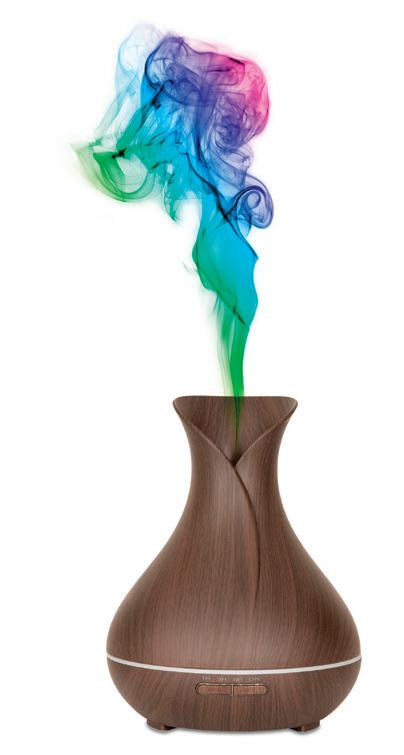
This is a much lighter way of using oils and by far the most expensive as 8-10 drops of oil will vaporise into the atmosphere in 2-3 hours. However, during the winter months diffusing oils in your vaporiser can be used to reduce the transfer of airborne bugs. Using oils with antibacterial and antiviral properties can prevent the whole family from passing on the same illness. Oils that can help in this situation are eucalyptus, fir, cajeput, lemon, lemongrass, tea tree and thyme. If you are already unwell, there are many different recipes for clearing catarrh (mucus), assisting with breathing issues and relieving pain.
Inhalation
This is a great way to use oils when you have a blocked nose, a headache, sinus, hayfever or even a chest infection. Simply place 4-5 drops of oil into a bowl and then fill the bowl with boiling water. Pull a towel over your head and breathe in the goodness (vapours) for a few minutes. Depending on the issue, different oils are suggested but the most common one would be a ‘breathe easy’ blend. The Amazing Scents’ Breathe Easy blend includes: frankincense, myrrh, cajeput and cypress.

Bathing
A bath with essential oils may be just what you need after a long day at work and is an easy and wonderful way for children to enjoy the benefits of oils. Most children are completely at home in the bath and a bath with oils can help to drop temperatures and help children breathe easier. A great ‘fever blend’ is lavender, chamomile, eucalyptus and spearmint. Please be aware that oils and water don’t mix – oils need to be emulsified into the water. Pure essential oils can be mixed into the water using a bubble bath base, bath salts, a squirt of carrier oil or a cup of full cream milk. Always allow about 20 minutes in the bath to get the full effect.
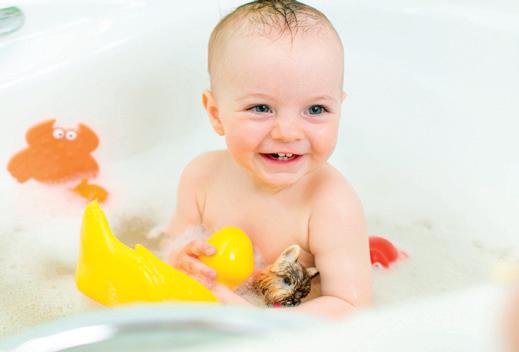
Topical
While an oil massage is always amazing, topical application doesn’t need to involve massage. Just dilute the oils according to instruction in a carrier oil and apply to the skin. Topical application is the easiest and most cost-effective way to use oils. For example, to make a roll-on of the Amazing Scents’ ‘sore throat blend’, fill
60 www.gohealthier.com.au Aromatherapy
a roller bottle with a carrier oil and two drops each of thyme, lemon, eucalyptus and sandalwood. This would cost no more than four dollars to make and lasts up to 8-10 weeks (a vapouriser uses the same amount of oils in 2-3 hours). The oils also enter into the blood stream a lot faster than vaporising.
Using essential oils
In order to use aromatherapy properly, Amazing Scents provide eight different educational workshops. They range from the vary basic understanding and versatility of the ‘Introduction to Aromatherapy’ workshop through to the intense learning of the ‘Tired Aching Bodies’ workshop where you learn the use of oils to minimise pain and inflammation.
During this journey you will learn:
• How the oils work on the body.
• How they know where to go.
• How to synergise blends.
• How to personalise blends to you for best effect.
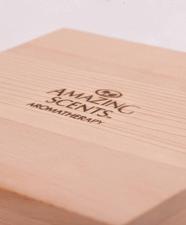
• How to use oils in the most cost effective and useful ways.
• What gives you the best results and what is the most practical way to implement them.
• How to make small changes now that will give massive results in the future.
• Essential oil safety.
It’s all about learning ways to integrate essential oils into our daily routine. Replacing store-bought toxinfilled bases such as in shampoo and conditioner, body washes, lotions and creams with natural bases and adding the oils applicable to our needs allows us to take control of what we use today.
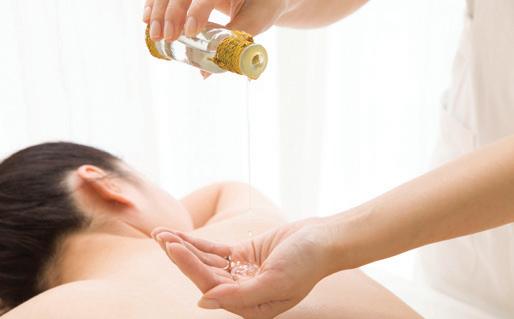
Disclaimer: This article was written and provided by Amazing Scents. For more information, please visit www.amazingscents.com.au or call 1300 833 143. On Facebook facebook.com/Amazing-Scents-Aromatherapy
Precautions: A word of warning
Just because essential oils are natural doesn’t mean that you do not need to be careful with them. They are complex chemical mixtures of organic molecules, which must be used according to safety guidelines. If you abide by the guidelines essential oils are very safe to use. It really is quite simple: dilute, use the recommended dosage and don’t take internally unless you have seen a qualified aromatherapist. Certain oils are to be avoided during pregnancy and other medical conditions, such as when taking blood-thinning medications. Always see your qualified healthcare provider if you are concerned.
Source: www.amazingscents.com.au/faq
Amazing Scents Pty Ltd, ABN 62 175 919 430 PO Box 632 Beaconsfield Vic 3807 Ph 1300 833 143, email: headoffice@amazing-scents.com, www.amazingscents.com.au
would love to acquire.
Whilst we know Aromatherapy is amazing - we also know that very few people know how to simply implement it into their everyday life or which way to use it most effectively. We aim to share our passion and knowledge with you in a fun and informative workshop atmosphere and learn how to get the maximum effect from your collection. Simply choose from one of our 8 workshop themes as the starting point of your Aromatherapy journey.
Introduction to Aromatherapy:





Learn the beginner’s basics.
Tired Aching Bodies
Learn about the analgesic and antiinflammatory properties of oils.
Kids Care
Learn safe uses of Aromatherapy with children, sleep issues and overall wellness.
Sensational Skin and Hair

Learn how to make your own personalised skin and hair care.
Fabulous Feet
Let us pamper you and soothe your tired feet.
De Stress and Relax
Who doesn’t need to learn how to do this?
Practical Aromatherapy
Learn how to make natural products for you, your home and your pets.
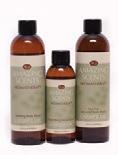
Women Only
Feeling a little out of balance?
Adrenally depleted or hormonally imbalanced?


OUR AMAZING OFFER FOR YOU
TIME FOR A CAREER CHANGE?
Looking for a way to help yourself and help others? Call us to inquire how to join us … ph: 1300 833 143
About Us:
We are a small boutique Austalian owned company based in Melbourne. Our passion lies in empowering others to use nature’s healing gifts to their fullest extent.
Book a Workshop:
Receive $100 worth of Pure Essential Oils for FREE when you book and hold a workshop with us and present this advert. Add this to our normal thank you gifts and your collection is well underway! (conditions apply)
PROUDLY AUSTRALIAN OWNED AND OPERATED
www.gohealthier.com.au 61 Aromatherapy
With 45 quality pure essential oils, 18 different base products to use them in, our own Aromatherapy Book and accessories - we have a range that anyone serious about using Aromatherapy
No matter what your level of experience with aromatherapy, this book will give you the essential knowledge in easy-to-understand terms. You will learn: How to use aromatherapy blends create wonderful atmosphere How to create your own aromatherapy blends with oils and their practical applications Jennifer is one Australia’s best-known authors and speakers. She quali ed aromatherapist and naturopath, but better than that, she’s also real person. Asia and the author seven books. She refreshingly down-to-earth, engaging and informative author and speaker who leaves her readers and audiences feeling empowerd Amazing Scents a guide to aromatherapy Jennifer Jefferies Amazing Scents Jennifer Je eries
Meditation
Meditation is the process of calming and stilling the mind. It cultivates self-awareness which encompasses being present in the moment whether pleasant or not, without judgment and with no need for the acknowledgment of right or wrong.
Meditation is often dismissed because people either don’t truly understand the practice, believe it’s not for them or don’t see how it could actually benefit their lives. Just like exercise, meditation requires practice and some effort. Yet, it doesn’t involve complicated techniques or rigorous mental training. It can be as simple as shifting your focus to your breath and being still for a few minutes each day.
Minds will always wander because that’s what they do, but once you harness stillness in your day you will find that you remain more in the present moment rather than being swept up in past or future thinking. This makes meditation fantastic in fighting anxiety and depression while enhancing your overall wellbeing.
Meditation is one of the most simple and cost-effective ways to reduce stress and improve your health, and once you are comfortable with meditation, it is a skill that will serve you throughout your entire life. You’ll be surprised by where you can meditate and still benefit from the practice.
A still mind can create some profound changes. Firstly, the wonderful feeling experienced during meditation. Secondly, the new-found clarity of mind. And thirdly, the effect it has on daily responses and interactions with people and experiences. It helps you become more engaging, caring and optimistic.
This simple shift in your day can have an enormous impact on your overall wellbeing. Adults and children alike can benefit from meditation with more and more people discovering its positive effects every day.


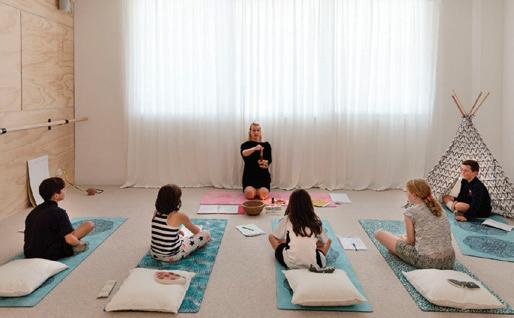
Four simple steps to meditation
Want to give meditation a go? Follow these four steps:
1. Connect to your breath
2. Focus on your breath (the inhalation and exhalation)
3. Observe your sensations: feelings and thoughts without any “judgement”
4. If your mind wanders, bring your attention back to your breath with a nice big inhalation and continue with your breathing
It is that simple!
Benefits of meditation
A consistent meditation practice over time will help rewire your brain by enhancing the prefrontal cortex, which is the part of the brain responsible for planning, focus and problem solving. It also regulates the limbic system, which is the emotional part of the brain that initiates the ‘fight-or-flight’ response. In other words, our more primal responses to stress seem to be superseded by the more thoughtful ones. Isn’t that amazing?!
Some of the benefits of meditation include: allowing you to acknowledge your thoughts rather than automatically reacting to them and helping you to interact in a more mindful way with others, which in turns gives you a sense of calm and ease. This enables you to think in a more positive way. It also encourages you to show kindness to yourself and others, it helps build acceptance, protects against stress and boosts the immune system. It encourages you to remain focused in the present moment allowing for better regulation of negative and distressing feelings.
62 www.gohealthier.com.au Meditation
Where to begin
There are many ways to begin your meditation practice. There are many apps available, such as Headspace, Smiling Mind and Wildflowers, or you can attend a class where you can be assisted and supported while you learn this new skill.
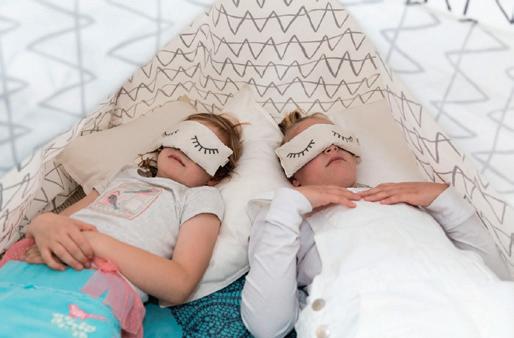
If you take the time to look at meditation as a wellbeing tool, to get the most out of life rather than a cultish spiritual practice, you will start to feel so many wonderful changes in your heart, mind and soul. While there are spiritual elements involved in meditation that is not the whole picture.
You are the only one who can give to yourself by making the decision to create a greater sense of wellbeing. No one can do that for you. It’s called you doing you! You make the choice to put yourself first both mentally and emotionally, and then watch what unfolds. There is also an added bonus… if you can model this to your children, you will be setting them up for success too!
To learn how to meditate, the easiest way is to join a meditation class or event. The teacher will explain the practice of meditation and then guide you through a meditation to help you focus your mind and relax.
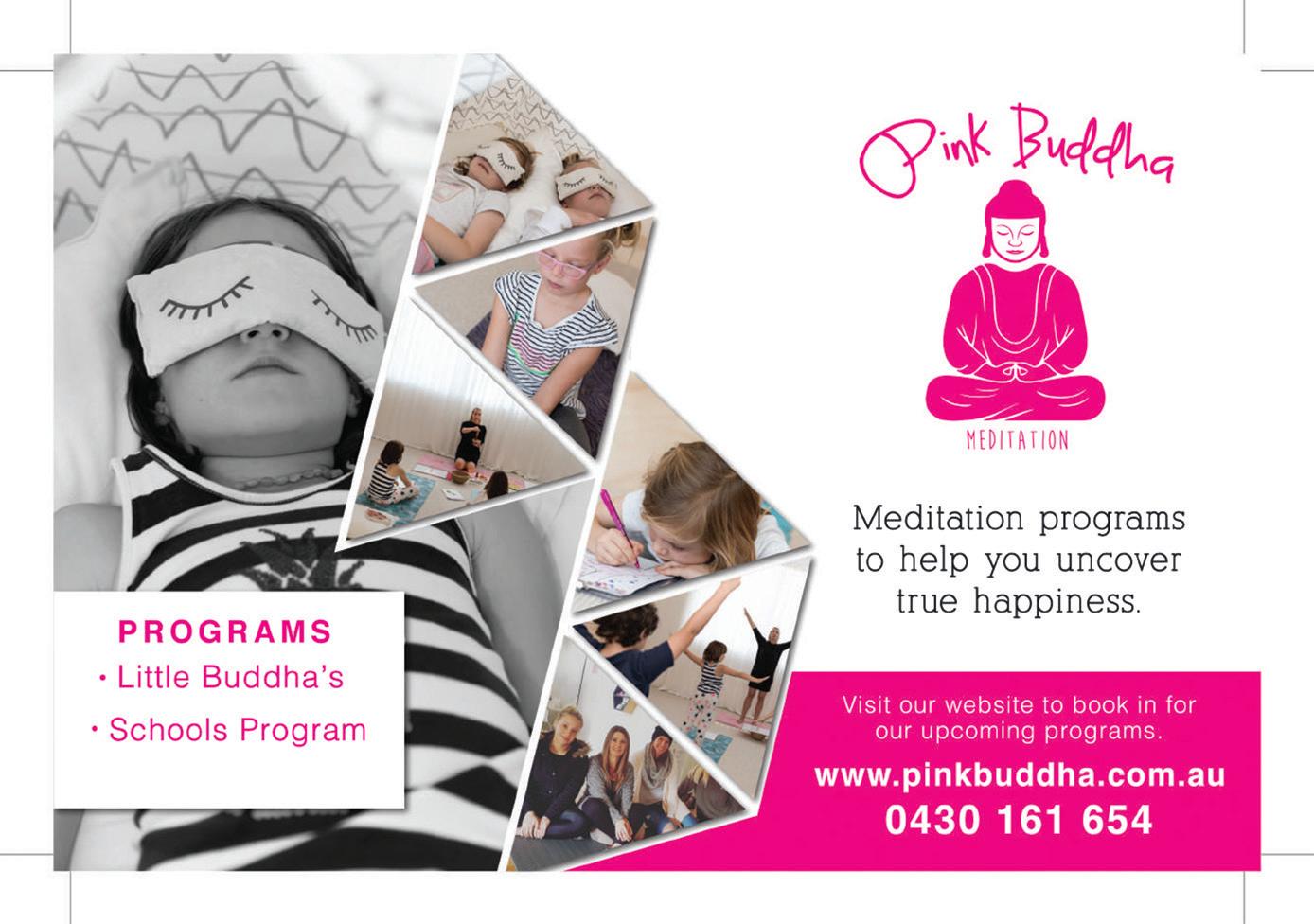
Just remember to always breathe.

Meditation
Disclaimer: This article was written by Jemma Mcmillan from Pink Buddha. For more information or to attend meditation sessions, please visit www.pinkbuddha.com.au or call 0430 161 654.
BFFs, Frenemies, Baes and Bruhs
How kids find fulfilling friendships and real relationships in today’s times


Although our kids may speak a totally different language to us when it comes to friends (think BFFs, Baes and Bruhs), the childhood world of companionship is much the same as ours. Children need friends. Most children want friends. Friendships are where children learn how to relate and how to connect with other people. And friendships are where disagreements play out.
Friendship and conflicts
All children go through friendship conflicts and all children will experience hurt and rejection at some stage. When children experience friendship conflicts or have difficulty making friends it often leads to feelings of loneliness and unhappiness. Feeling rejected by others can lead to significant distress.
By equipping children with friendship skills they can learn ways to cope with conflicts within the school yard and classroom. They also become tolerant of different personalities and peer opinions enabling them to develop their moral reasoning, values and social skills for life.
When children learn positive social skills, adopt a resilient cooperative attitudes and understand how to cope with negative emotions and solve conflict, they can build solid connections, choose healthy friendships and be true to themselves.
Thoughts Beliefs Feelings Behaviour
» I’m just not much fun.
» Other kids don’t like me.
» They’re out to get me.
» They’re being mean on purpose.
» It’s because they already started the game.
» Next time I’ll ask first... I can look for someone else to play with today.
» It’s my fault and it won’t change.
» It’s their fault and they shouldn’t have done it.
» The situation wasn’t right.
» I can change it.
» Anxious.
» Sad.
» Low confidence.
» Angry.
» Hostile.
» Resilient (disappointed at first but quickly recovers).
» Confident.
» Low confidence.
» Withdraws from social contact with other children.
» Hostile.
» May become aggressive or try to get back at them in other ways.
» Accepts what has happened and looks for other ways to solve the problem.
64 www.gohealthier.com.au Friendship Kids
Learning friendship skills
Learning positive friendship skills can help children socially and lead to them feeling happier and more confident in themselves. Children who have friends are more likely to have healthy self-esteem, perform better academically and have a strong sense of self-worth. Teaching children how to choose a good friend and, importantly, how to be a good friend is a life skill that promotes mental health and wellbeing.
A Relax Kids friendship workshop is a safe environment where children can process their feelings and understand themselves and their friends in a deeper way. Children are guided through their thoughts, beliefs, feelings and behaviours and encouraged to be true to themselves.


Friendship workshops are designed to help children learn more about themselves. They assist children in identifying the effective aspects of their friendships and find better ways to relate and communicate. They learn skills to develop and maintain healthy friendships and learn how to bring out the best in themselves and others.
As parents, we can’t always be there to stand up for our children or to drop a clever come-back line in defence, but we can keep communicating and checking-in and show them how to be a good friend.
Benefits of Relax Kids
Creates a sense of calm and well-‐being

Reduces Stress
Helps create peaceful thoughts
Increases blood flow and slows down heart rate
Reduces pain and boosts your immune system
www.gohealthier.com.au 65 Friendship Kids
Increases Energy
Helps you be more kind and respectful
Disclaimer: This article was written and provided by Amanda Kelly, Director of Relax Kids Mornington Peninsula. For more information please phone 1300 768 761.
Discover naturopathy
Everyone knows the road to healthy living is by eating right and exercising. And naturopaths can help guide you in the right direction, whether it’s managing a disease or preventing one. This can be done via herbal or nutritional support and making dietary and lifestyle changes. Naturopaths strongly believe that food is medicine.
What is a Naturopath?
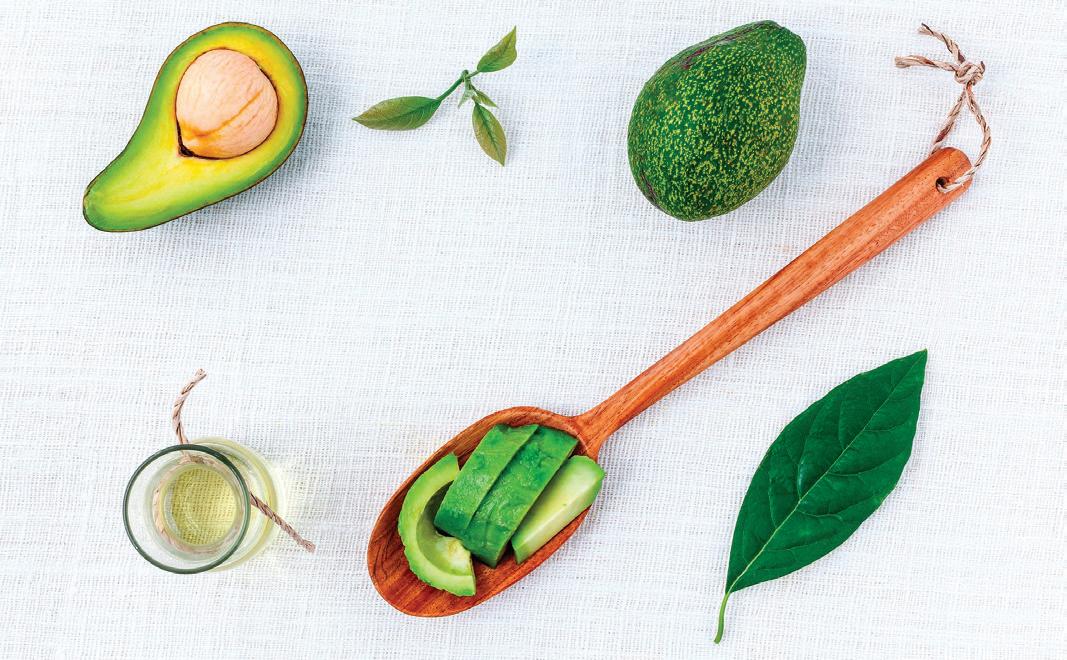
A naturopath is a health professional who looks at the whole you and creates a treatment plan specific to your health goals. Naturopaths empower and support you through your health journey. They can help at all stages of life from preconception care to recurrent infections during childhood, study and work stress, menopause, and improving function, independence and quality of life during your retirement. A holistic approach is taken by treating the underlying causes and working alongside other practitioners to help you become a healthier you.
What to expect during a consultation
You can expect an initial consult to last 60-90 minutes. This is because we take your full case history. The whole body is connected and we ask questions about all of your different body systems and how they are functioning in order to best understand your health.
Depending on the practitioner you see, their specialities, equipment, beliefs and further studies will differ. They may use a bioelectrical impedance analysis machine (this takes a reading of your body composition), prescribe flower essences, homeopathic pilules or perform an iris analysis (iridology). Just like in any other modality, there is a practitioner out there to suit you, just make sure you are comfortable and connect with your practitioner.
About naturopathy
Natural medicine has been around since the 18th century. Naturopaths cannot make a diagnosis but will work alongside other health practitioners to offer you the best patient-centred care. There are six principles to naturopathy:

z First do no harm (providing natural, non-invasive treatments).
z The healing power of nature (trusting the body’s inherent wisdom to heal itself).
z Identify and treat the causes (looking beyond the symptoms and addressing the root cause)
z Doctor as teacher (educating patients to achieve optimal health).
z Treat the whole person (taking into account the whole being: mind, body and spirit).
z Prevention (focusing on overall health and disease prevention).
66 www.gohealthier.com.au Naturopathy
Children’s health
If you have children that have been to day care, you’ll know how often they get sick. Natural medicine can help to fight those recurrent infections by building their immune system and lessening the duration and severity of their ailments.
Other conditions such as allergies, problems with learning and behaviour may also be helped through natural medicine by managing their environment, diet and supplementing with products. This all ensures they have the right building blocks for a healthy immune system and healthy brain development.
Digestive health
If you’ve ever experienced changes in your bowel movements, had reflux, excessive bloating or even fatigue and migraines, this could indicate a sluggish digestive system. Naturopaths can help by identifying if you have an intolerance to a substance or if you’re simply being too excessive with certain meal groups. A recommendation can be made to have a detoxification and cleanse your body of any toxins and kick-start your digestive system. Sometimes a detox is also recommended after binging during holiday times. It’s a great way of cleansing your body and will have you feeling lighter, more energized and back on track to a healthier you.
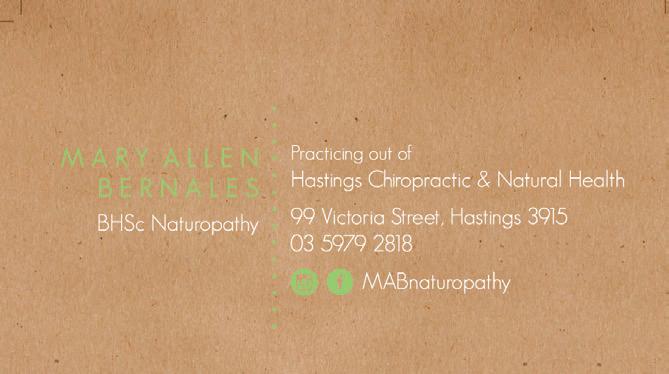
Inflammation
Inflammation is a natural part of our immune response, however chronic inflammation can be the root to many diseases. But don’t worry, this can be managed by taking natural supplements and investigating and undressing the underlying cause.
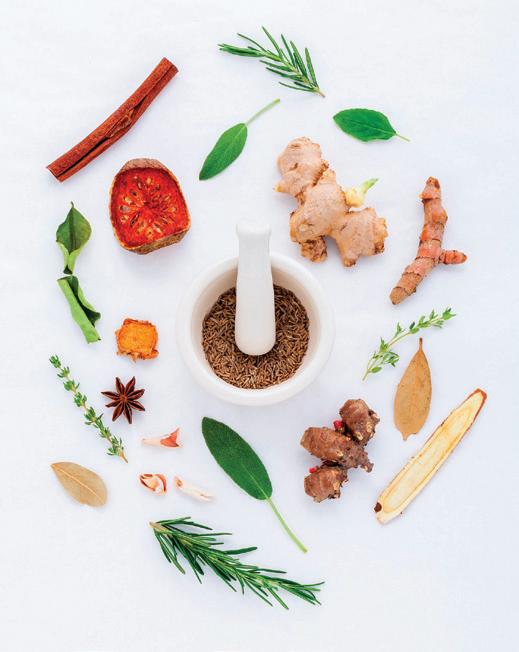
Female reproductive health
Preconception care is important to give you and your partner a greater chance of falling pregnant and ensuring a healthy mum and bub throughout the pregnancy and post birth. Does your menstrual cycle need regulating? Perhaps you would like a natural solution to assist you through menopause? Naturopaths can provide herbal and nutritional support through these stages to help you achieve your ideal health.
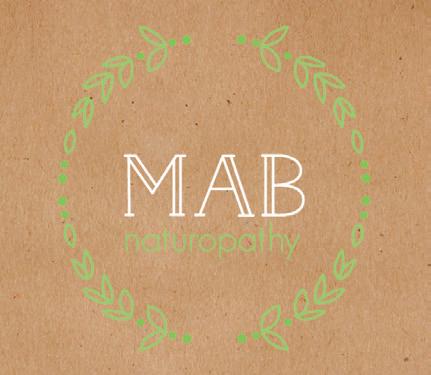
Wellness
Natural medicine isn’t just about seeing you when you’re sick. Prevention is key to fighting disease. Talk to a naturopath about what types of food you should be eating coming up to flu season or what supplements to take when you first feel that tickle in your throat. If you’re changing your food preferences to become vegetarian or vegan, chat to your naturopath about what you should be substituting so your nutrition levels stay optimal. Stressful times ahead? Naturopaths can help you manage your stress to prevent burn-out. Natural medicine can help with such a wide range of conditions; make an appointment with a naturopath to see what they can do for you
www.gohealthier.com.au 67
Natuopathy
Disclaimer: This article was written and provided by Mary Allen Bernales from MAB Naturopathy. For a consultation, please call 5979 2818.
Eat Yourself Happy!
Good food supplies the building blocks for our body and the nutrients that keep it functioning. Think the tagline: we are what we eat (and absorb).
We can take this concept a step further, looking at our body and our mental-emotional state as a reflection of what’s going on with the ecosystem inside our guts. The gut is our main point of contact with the outside world. Obviously, there are many things influencing our health and our mental-emotional state but food and the way it affects our gut is massive. Your food and the state of your gut is a major determinant of how happy, energetic, focused, calm and well you feel.
If you’re feeling moody, depressed or anxious but don’t want to head down the pharmaceutical route, you could try making the following dietary changes and aim for the blissful state of ‘gut homeostasis’ to feel your best mentally each day.
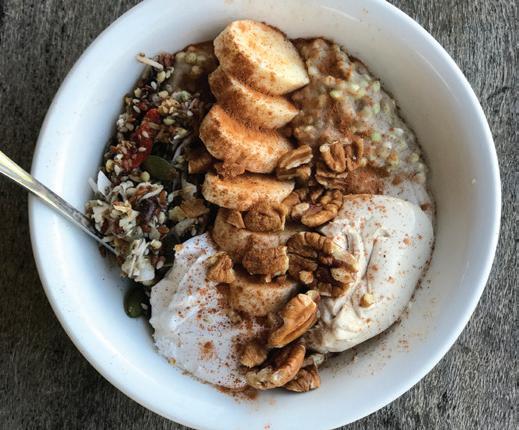
Get off the blood sugar rollercoaster
Poor blood-sugar control can aggravate anxiety and depression. Just ask the mum of any three-year-old child after a birthday party! Sugar rush equals manic behaviour followed by the nasty ‘come-down’ and even an afternoon / next day ‘hangover’. We do it to ourselves as adults all the time, it’s just less extreme / noticeable. And we’re so used to it we think it’s normal to feel that way!
A diet to minimise these sugar swings should be focused on good fats, protein and fibre and be low in refined carbohydrates and sugar. You can ask your doctor for a HbA1C blood test to see how you’re tracking. This test gives a picture of what’s been happening with your glucose control over the past few months.
High blood sugar fuels inflammatory processes in our body, and depression / anxiety issues will be worse when your body is inflamed. Blood sugar spikes trigger insulin release (quickly gets the sugar into your cells) and leaves you with low blood sugar, which in turn triggers cortisol release (the ‘fight or flight’ stress hormone that wrecks your metabolism and makes you more stressed, anxious, unable to sleep, insulin resistant and fatter).
Master Your Microbes
You aren’t the only one who craves sugar and carbohydrates. You also have hungry demanding gut microbes communicating with your brain, asking for the food they love and need to survive t(that’s sugar).
Your microbiome influences your moods (many studies around this) and certain probiotics have been directly linked to improvements in depression and anxiety. We know that plant-based fibre is great for the ‘good guys’ in your gut, and that sugar and refined carbohydrates will keep the ‘bad guys’ on top. Exercise is also essential for maintaining a health and happiness-inducing gut microbiome.
Nurture your brain
The main brain essentials are protein, good fats and sleep. These three items are considered the main brain requirements, but we also need to add fibre to the list because of the way it supports our healthy gut microbes.
Protein: Required for maintaining healthy muscles, skin, hair and nails as well as for neurotransmitter production. Look to your diet to get adequate protein to support your needs.
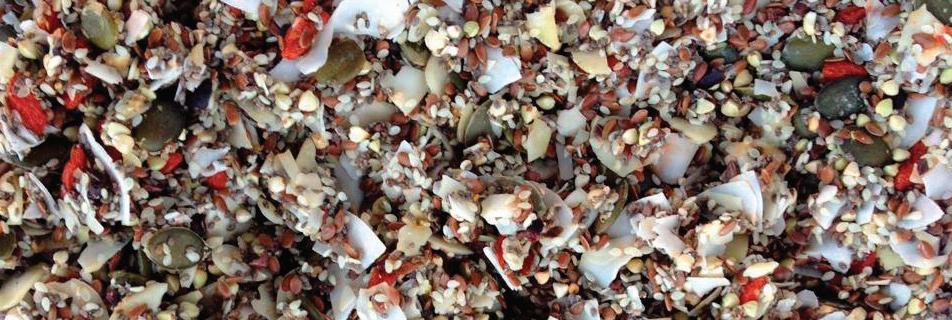
Good fats: Many experts now recommend fat makes up a large part of your diet if you struggle with mental challenges. Omega-3 fats from oily fish and algae are known to be brain superfoods. Avocados, nuts and seeds are great sources of healthy fats.
Sleep: When our brain ‘recalibrates’ itself. We can only spend so many hours awake & dealing with life before it needs to shut down & do some rearranging, filing, tidying up & just chilling out! If you’re not getting enough sleep, it doesn’t matter how good your diet & exercise
68 www.gohealthier.com.au Gut Health
regime is - you won’t feel or function anywhere near your best.
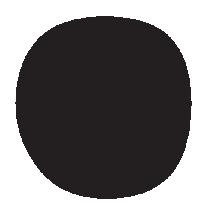
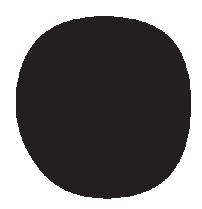
Fibre: Gut microbes feast on fibre, & when well-fed help to keep our immune system & our gut-lining working well - they actually manufacture anti-inflammatory substances that work throughout our bodies - including our brain. Recent research reveals that mental health issues are often caused or aggravated by inflammation that begins in the gut. Fibre is therefore becoming recognised as an important nutrient to support brain function & mood stability.
Happy foods shopping list
º Vegetables (choose a variety of leafy greens)
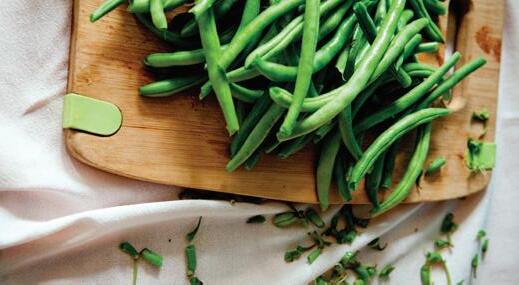
º Fruit (especially high polyphenol varieties such as berries, dark grapes and pomegranate)
º Leeks, onions, garlic, asparagus, jerusalem artichokes (for their prebiotic fibres)
º Potato (eat cooked and then cooled to make resistant starch, can be reheated)

º Rice (eat cooked and then cooled to make resistant starch, can be reheated)
º Fermented foods (such kimchi, sauerkraut, coconut yoghurt or dairy if tolerated, kefir)
º Salmon (omega 3, protein)
º Sardines (omega 3, protein, minerals)
º Oysters and mussels (to nourish and heal the gut lining)
º Oats (mucopolysaccharides, fibre, B vitamins for nervous system health & stable energy)


º Legumes (fibre, protein)
Remove the nasties
Drugs and alcohol mess with moods, and are obvious items to cut out if you’re suffering mentally. But seemingly harmless foods can also mess with your gut. For example, many people are unaware that their morning cereal could set them up for a day of fatigue and depression or that their lunch is responsible for their afternoon energy slump. Foods can make your gut and blood brain barriers leakier mation) or may contain chemicals that affect your brain
º Avocado (good fat and fibre)
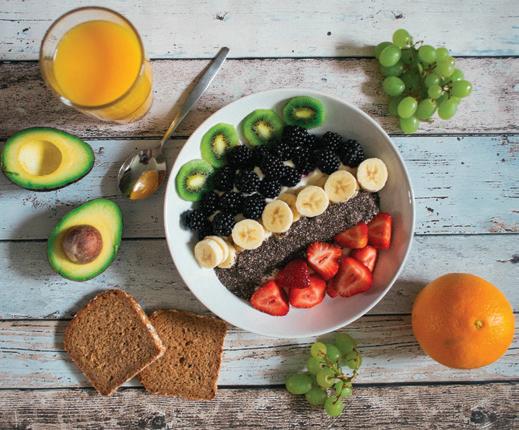
º Coconut (good fats and fibre)
º Nuts and seeds (plant protein, good fats, fibre)
º Free-range collagen,





º Eggs
º Cacao powder or dark chocolate (choose low-sugar
DIVERSE�FIBRE�BREAKFAST�MIX
Gut Health
Naturopath Designed Gluten Free ✔ Diabetic Friendly ✔ Digestive Blend ✔ Diverse Fibre ✔ Omega 3, 6, 9 ✔ Plant Protein ✔ Vegan Friendly Recipes, Reviews & Testimonials www.goodmix.com.au
goodMix Pty Ltd • e. orders@goodmix.com.au 1/24 Fremantle Street, Burleigh Heads 4220
Striving for balance
Balanced soil means healthy plants, just as a balanced gut equals a healthy human

Humans grow, thrive and experience disease or deficiencies depending largely on what’s going on with their gut, and plants grow and thrive (or not) depending largely upon what is going on with their soil and root systems.
Soil balance and root health are critical to optimum plant health, just as gut microbial balance (and integrity of the gut lining) are critical to human health. Re-potting or transplanting is often the first action to take when you have a sick plant, and restoring and supporting gut health is a great first step in treating human disease.
Teeming with life
A healthy gut is filled with microbes, and so is the soil surrounding a plant’s root system. Plant roots and their surrounding microbial ecosystems are like inside-out human guts, meaning both roots and guts are designed to absorb nourishing things to support their owner (the plant or the human) while keeping out nasty things that might make them sick (such as pathogenic microbes, chemicals, waste products). Both guts and roots employ an army of microscopic life forms to help with these processes.
Plants roots versus our intestines
Let’s take a look at the similarities between roots and intestines. Both have a huge surface area. In the gut this is created by the villi and the microvilli (tiny projections that massively increase the surface area of our small intestines), and in a plant this is its branching root system with its fine root hairs. These systems are complex interfaces between organism and surrounding environment, and both function with close interaction and support from an amazing microbial ecosystem. Just as our gut microbes are vital for our immune function, chemical messaging around the body and the absorption of many nutrients, the microbes surrounding the roots of plants also play major roles in the function of the roots and how they support the plant. They are both two mind-blowing natural systems. They’re both extracting nutrition and communicating with what surrounds them with the help of other tiny creatures that we cannot even see! Roots actually secrete their own prebiotics! Root exudates provide a food source and attract beneficial microbes to live and feed around the plant’s root system, which does great things for the plant nutritionally. The plant knows it needs microbes so provides them with a food source, just like the mucous layer in our gut which feeds some of our microbes.
Need a transplant?
Humans must actively seek out and make an effort to gather and ingest our required nutrition, while a plant just grows roots to absorb what it needs from its surroundings. Both systems have pros and cons. For example, a plant cannot just ‘up and leave’ if the soil environment is not supporting it adequately. But humans can easily ‘transplant themselves’ when they’re not thriving. We are able to change ‘our soil’ and its microbial support system simply by changing what is flowing through our gut each day.

Food and soil
Our food creates the ‘soil’ that supports us. If you’ve observed changes in a plant transplanted from an outgrown pot into a freshly composted veggie garden full of nutrients and microbes, you’ll appreciate the difference a change of soil can make.
It’s the same with humans not thriving on their diet. We can make changes to our soil (the food and nutrients flowing through us) and try to get a thriving gut microbial ecosystem happening (with prebiotics and probiotics) to help with absorption of nutrients and create clear communication between the external environment and our immune system.
70 www.gohealthier.com.au
Probiotic
Faecal Microbe Transplant





The ultimate in repotting / soil refreshing for an unhealthy human gut is a new therapy called FMT (faecal microbe transplant). This involves basically emptying out your ‘crappy’ dysfunctional soil and replacing it with some fresh healthy soil, which is someone else’s faeces squirted or swallowed in ‘crapsules’ straight into your bowel, along with all their friendly and balanced gut microbes. It sounds gross, but the results being reported are incredible, including an up to 98% cure rate for the potentially fatal Clostridium Difficile infection. However, this promising new therapy comes with a caution that we can also create new problems, as our knowledge of the gut ecosystem is incomplete. When you consider all the functions of our microbiome – the potential for this type of ‘transplant’ therapy to both help cure and cause health issues is huge. Understandably, researchers are proceeding with caution.
Gut-gardening tips
Discover these seven ways to help nurture your internal ecosystem:
º Bring in healthy new soil ingredients. In humans, changing what’s swallowed daily is one of the major contributors to achieving soil (gut) health. Think about your food intake but also medications, environmental chemicals, supplements, hydration and even hormones and emotions. Everything that ‘flows through you’ contributes to (or takes away from) your ‘soil’ health.
º Avoid sugar and refined starches. Stop feeding those nasty microbes sugars and refined starches, and instead feed them plenty of the good bugs so they populate quickly and crowd out the baddies. In the same way, we can plant and nurture a lovely groundcover to stop unwanted weeds from growing back in our backyard. Our good bugs love diverse fibre and resistant starch.
º Offer support with some microbial reinforcements. In a garden you can add some microbe-rich compost and manure plus mulch to stabilise moisture and temperature, slow down the growth of unwanted weeds and create a safe-haven for beneficial creatures that are part of the soil ecosystem. Adding compost and mulch to a garden is much like a human adding plenty of organic, fibrous prebiotic plant foods and some fermented probiotic foods into their diet.
º Prebiotic and probiotic foods. Daily intake of diverse prebiotic and probiotic rich foods equals a continuous stream of food to support a range of good gut bugs. Without adequate fibre, some of our gut bugs actually start eating away at our protective mucous lining to survive - not a nice thought! Research also shows that people who include probiotic-rich fermented foods in their diet each day have healthier populations of resident gut microbes and tend to live longer, healthier and happier lives.


º Water, water, water. Your internal soil will dry up and your gut bugs will shrivel if you’re not well hydrated. A plant cannot survive and thrive without the moisture required to help it absorb nutrients from the soil and keep its microbial helpers comfortable and a human



sprayed continually into a forest can seriously damage the ecosystem. Eat organic foods wherever you can and avoid medications if possible. Ask your
with you to minimise your intake of pharmaceuticals.
DIVERSE�FIBRE�BREAKFAST�MIX
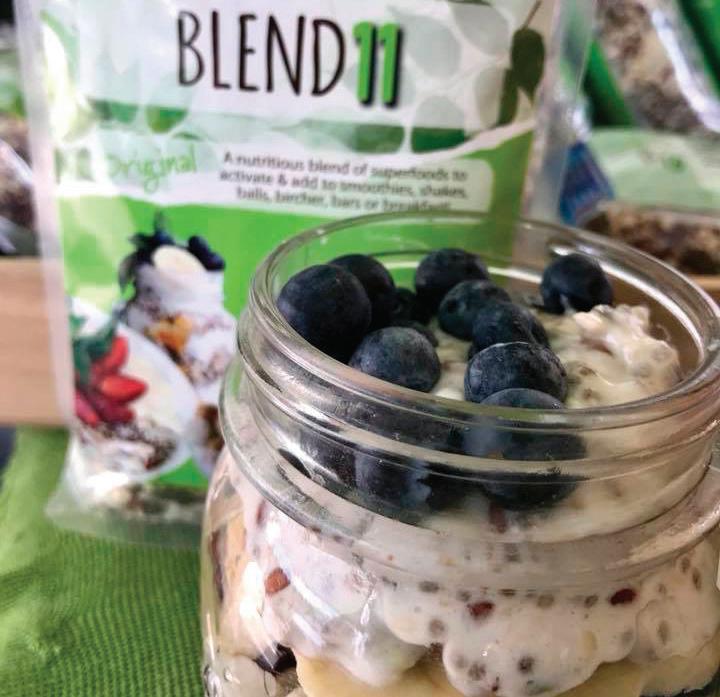
Probiotic Naturopath Designed Gluten Free ✔ Diabetic Friendly ✔ Digestive Blend ✔ Diverse Fibre ✔ Omega 3, 6, 9 ✔ Plant Protein ✔ Vegan Friendly Recipes, Reviews & Testimonials www.goodmix.com.au
goodMix Pty Ltd • e. orders@goodmix.com.au 1/24 Fremantle Street, Burleigh Heads 4220
HEALTH BENEFITS OF
Prevents bad breath
Aids in healthymaintaining skin
Protects liver from damage and ailments
Helps treat vitamin K deficiency-related bleeding
Keeps eyes healthy Reduces risk of cardiovascular diseases
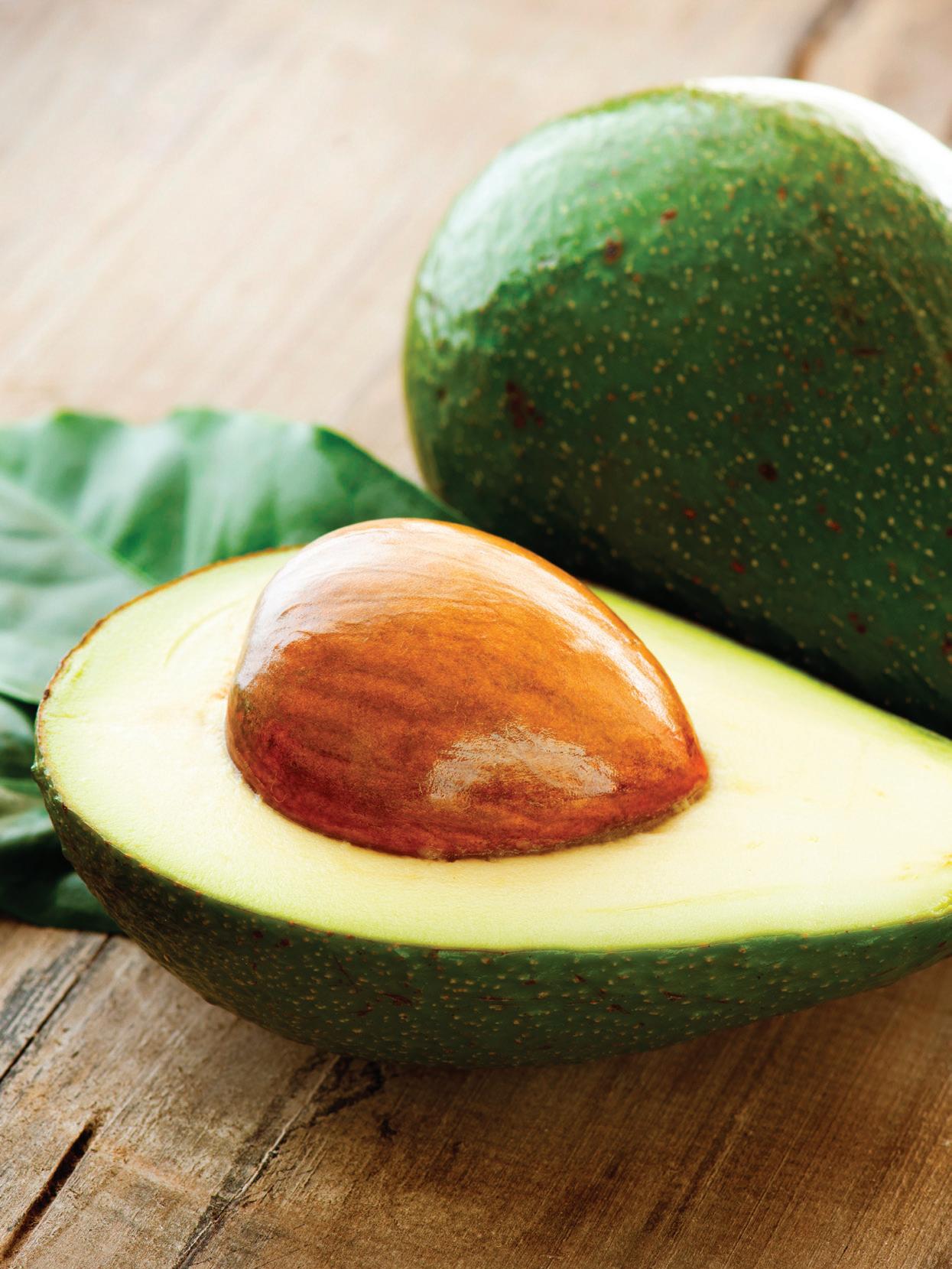
Aids in digestion and weight managements
Helps to overcome nausea and morning sickness during pregnancy
WITH BECAUSE

TO
Never allow waiting to become a habit. Live your dreams and take risks. Life is happening now.
@Tamlynpatersonphotography
Expecting a baby?
If you are an expectant mum, you may be preparing a nursery, gathering accessories and allowing the media to inform and inspire your vision of life with a new baby. However, as a midwife, I regularly see young parents quickly forget the raging debate on which pram to buy, once the emotional and physical ‘sledgehammer’ of caring for their new baby becomes a reality.
While purchasing things for your baby can be lots of fun, it’s also worth allocating some time to prepare for the practical challenges that you are likely to encounter on becoming a mum. But what are those likely to be?
1. Birthing classes: Do you need them?

People often have polarised opinions when it comes to childbirth, particularly now social media pushes us to question values and performance at every turn. With online video clips just one click away, we are now privy to endless streams of other peoples’ birth experiences. Normal to complicated, the most private of our primal activities, observed and criticised, are often a cause for alarm in even the most experienced of mothers. It’s long been understood that stress and fear can significantly prolong the birth process and cause women to feel pain more acutely. This is just one reason why self-guided birth preparation is not advisable, and so you may wish to consider a class or an online course.
Back in the day, maternity units were the only providers of birthing classes, priming their ‘patients’ for the obstetric procedures that lay before them. Thankfully we now have many other options, all based on a birthwithout-fear approach. They foster the understanding that childbirth is not a pass or fail situation, but a normal human event. The course facilitators encourage you to appreciate your body for every small miracle, but don’t worry, it’s not hypnotism, chanting or tambourine waving! It’s just helpful information, delivered with a calm sense of reassurance. Whatever your choice –natural, caesarean or waterbirth – you will be supported.
2. Prepare to spend time falling in love.
Once your baby arrives, the most important thing you need to do is fall in love with each other. This isn’t merely cute, there are biological processes at work here! Oxytocin, the hormone of love and mothering, is
crucial for bonding, breastfeeding and good mental health. Pain, worry, tiredness, cold or any unease can quickly ‘turn-off’ oxytocin and so it’s crucial for new mums to take things easy, get comfy and cosy, eat delicious food, be with their favourite people and avoid stress as much as possible. But how can you prepare for this?
In the beginning, you will be spending lots of time holding your baby so consider creating a warm and convenient place to do just that – a comfy couch or bed with an area well-stocked in essential items like snacks, pillows and even your phone charger and TV remote. Think: a private place surrounded by things that make you feel happy and where you can both feed or sleep quietly, as the need arises. This may not be the same for everyone though. Some feel more relaxed in a busy family room and so the choice is totally yours. The most important thing is that you feel comfortable, happy and peaceful.
3. Prepare to take it easy
Hopefully you are caring well for yourself while pregnant, sleeping when you need to, exercising and watching what you eat. However, this should also be the case after you give birth, too. Your baby’s wellbeing will depend on it!
Modern culture may give you the idea that birthing your baby will be little more than a ‘blip’ and a status update on your timeline, but don’t be fooled. It will be the biggest game changer of your life.
From my own experience as a young mother, after each birth I arrived home ignoring the fact that my body deserved time to rest and heal. Instead I focused on my endless to-do list and coming home was the first thing on it, although, mastitis, a uterine infection and perineal breakdown (google that, when you’re not eating) were certainly not!
Each straight-forward pregnancy and uncomplicated birth were followed by conditions, avoidable with rest, which in an underdeveloped country would have killed me! Luckily, being in Australia, I had antibiotics and a cocktail of pain killers that allowed me to continue ticking off that to-do list! But for what? I certainly received no medals, only a mental pat on the back delivered by my own ego.
74 www.gohealthier.com.au Mums Mental Wellness
Top five tips on how to prepare for your little one’s arrival.
See where I’m going with this? For the first few weeks, you will be as physically vulnerable as your baby, open to weakness and infection. Be prepared to listen if your body tells you to slow down. Even if it seems unnecessary due to the convenience of modern medicine, your mind, body and baby will thank you for it.
4. Prepare to accept offers of help

As mothers, we need help. The evolution of humans has relied on this until now, but today, the desire to be Supermum has us juggling breastfeeding, socialising and looking fabulous all while getting a deliciously healthy meal on the table by 6pm! Friends and relatives can be hesitant to offer help for fear of causing offence, although this is unthinkable for other cultures where young mothers are routinely nurtured for weeks after giving birth. Sadly, here in Australia it seems the accepted norm. Is it any wonder that postnatal depression affects one in seven of our mothers during the first year?
Are you planning to be the mum who can do it all? The truth is, people love to help, especially where new babies are concerned. Don’t be afraid to be honest when loved ones ask what they can do to help. Making a meal or hanging out washing will take them minutes but may save you hours if your baby is having a bad day.
5. Prepare for the inconvenience

Having a baby to care for is anything but convenient, but how do you plan to manage if your baby won’t settle or if feeding isn’t going well or if you don’t get time to care for yourself or if motherhood doesn’t make you feel as happy as you hoped it would? These are very common situations that are worth your consideration, even if they never happen.
So how can you plan to limit the fall-out of situations like these? One solution is to meet them head-on. Save time later by doing your research now. Pregnancy is a great time to organise a list of useful contacts that might
include a Lactation consultant, your local maternal and child health nurse, a postpartum doula, a postnatal massage therapist, family GP, even mobile hairdresser, and the list could go on.
It’s also advisable to discuss with your partner the ways they plan to help. Avoid making assumptions. I’m reliably informed by my husband, that he can’t read my mind, however annoying that may be. Be sure to have the conversation, before the baby arrives. It may save you both a world of frustration and hurt feelings, later, when your attention is needed elsewhere.
If you have no partner or loved ones nearby to help, then you can also consider outsourcing a few jobs. There are now home-help companies providing night nannies, cleaners and cooks or you could consider ordering pre-cooked meals for a couple of weeks.
If this isn’t an option, you can simply plan, by stocking the freezer with lots of your favourite meals. Foods that are easy to reheat and nutritious are just the kind of thing that your future self will thank you for.
Your future self will also thank you for not ever underestimating how much your new baby will affect your life. Childbirth is not a mild inconvenience – it is a major life event! Managing the impact on your health and mental wellbeing by caring for yourself and allowing others to take care of you too should be just as important as the way in which you plan to take care of your new baby.
In your transition to motherhood, stay mindful of the reality that your needs and wants matter too. You will be the centre of your child’s world, and as the saying goes…
Statistic reference: https://healthyfamilies.beyondblue.org.au/pregnancy-and-newparents/maternal-mental-health-and-wellbeing/depression
Disclaimer: This article was written and provided by Katie Cortes, midwife, sleep consultant and night nanny from Katie’s Babies, phone 0434 121 427 or see www.katiesbabies.com.au

Learn the gentle art of reading your baby Katie is an experienced midwife and mum of four, providing in-home postnatal care and gentle sleep solutions for your little night owl. – In-Home Postnatal Support – Night Nanny Service – Breastfeeding Support – Mother’s Group Information Sessions – Free Initial Phone calls – Unlimited Phone Support and Follow up – 100% Money back guarantee if not entirely happy with progress. M 0434 121 427 www.katiesbabies.com.au 15% oFF* * To redeem offer simply mention that you saw this offer in the latest edition of Go Healthier Magazine Mums Mental Wellness
“If Momma ain’t happy, aint nobody happy”
Working with Speech Sounds
Do you have a little person in your life that is hard to understand? A speech pathologist can help children achieve their articulation goals. But for parents, here’s some background to help you understand just how speech and sounds (articulation) work.
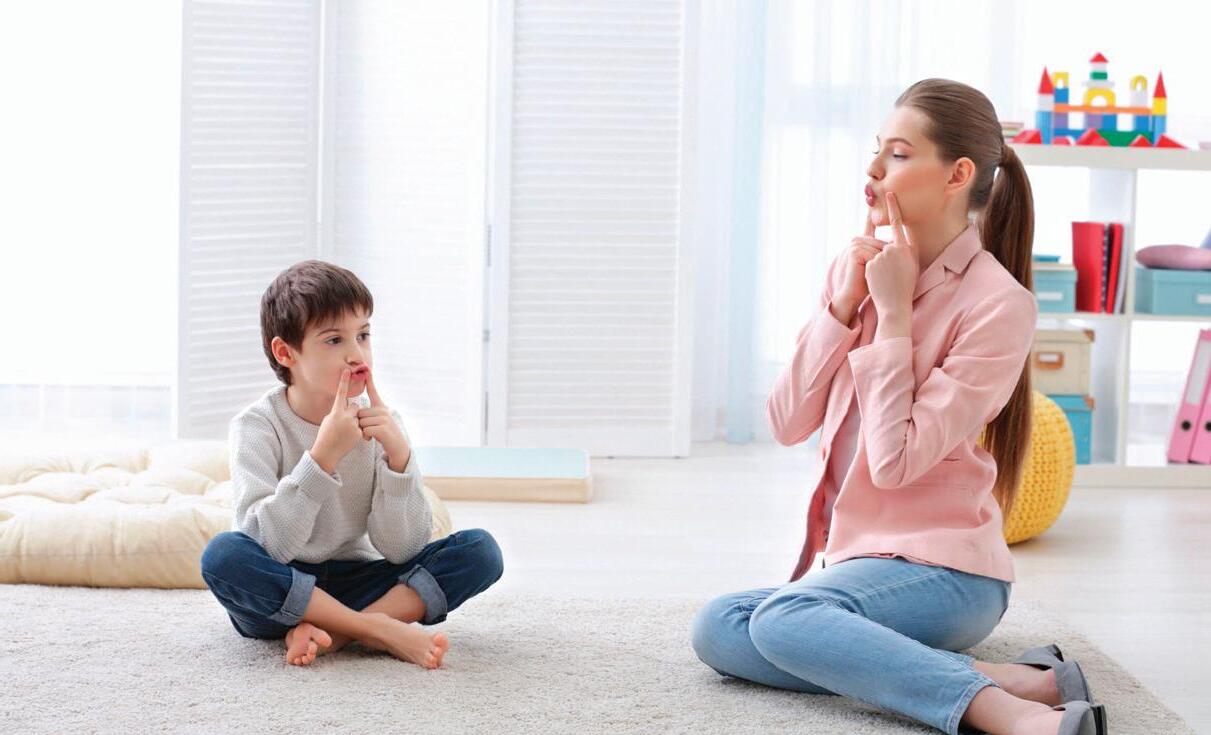
What is articulation?
Articulation refers to the production of individual sounds required for speech. In the English language we have 44 sounds – much more than our alphabet! In order to make these sounds we use our ‘articulators’ which are our teeth, lips, tongue, palate and vocal cords. Among these 44 sounds, we have 24 consonant sounds and 20 vowel sounds. Consonant sounds require a lot of coordinated input from our articulators, with each sound requiring the movement of one or more of our teeth, lips, tongue and palate.
Did you know?
• We use our lips to produce the ‘p’ and ‘b’ sounds.
• We use our tongue and palate to produce our ‘k’ and g’ sounds.
• We also have ‘voiceless’ sounds, where our vocal cords are not used, and ‘voiced’ sounds where our vocal cords are used: ‘p’ is a voiceless sound where the vocal cords are not used, while ‘b’ is a voices sound where the vocal cords are used.
• Vowel sounds require our mouth to move into precise positions to achieve an accurate sound: ‘ee’ as in ‘tree’ is produced with our mouth in a smiling position, while ‘oo’ as in ‘too’ is produced with our mouth in a rounded position.
With so many sounds to learn as well as language, it is common for children to have errors as they are learning to talk!
What is a speech sound disorder?
Children are learning so many new words in the early years of childhood. It is common for them to make mistakes as they learn these new words, which can make them hard to understand. A speech sound disorder occurs when a child continues to make these mistakes past a certain age. There are age ranges for when children are developmentally expected to say certain sounds accurately. There are different types of disorders depending on the type and level of the sound breakdown:
Articulation disorder: An articulation disorder involves difficulty using our ‘articulators’ to make individual sounds. As a result, sounds can be substituted, left off, added or changed. For example, a child saying ‘nana’ for ‘banana’ or a child saying ‘wabbit’ for ‘rabbit’.
Phonological disorder: A phonological process disorder involves difficulty with a pattern of sounds. It is considered to be part of normal development, however is deemed a disorder if it persists past a certain age. It involves all sounds produced in one area of the mouth being substituted for all sounds made in another area. For example, a child substituting all sounds made at the back of the mouth like ‘k’ and ‘g’ for those at the front of the mouth like ‘t’ and ‘d’ or a child saying ‘tup’ for ‘cup’ and ‘dirl’ for ‘girl’.
There are also much more severe speech sound disorders, known as motor speech disorders. This is due to the brain having difficulty performing the planning and movements required for speech. The child knows what they want to say, however their brain has difficulty coordinating the movements required to say the words accurately. In children, this is called Childhood Apraxia of Speech and is far less common than the afore mentioned speech sound disorders.
76 www.gohealthier.com.au Speech Pathology
How do I know if my child has a speech sound disorder?
A speech pathologist will be able to assess your child using a range of assessments to evaluate your child’s speech. They will be able to determine if there is a speech sound disorder present and will be able to develop goals guided by your family and assessment results.
What will the therapy involve?
After having assessed your child’s speech and establishing goals with the family, therapy begins! Sounds are usually treated in order of their acquisition. The sounds treated first would be the early developing lip sounds usually established by age three (for example, m, p, b), then moving on to the palate sounds usually established by age five, and finally the sounds that require much more complex movements by age seven.
When treating sounds in therapy, we work through a hierarchy and ensure the sound is established at each level before moving on. We may begin working on the sound at the beginning of words, middle of words or at the end of the word depending on whether your child can produce the sound in some positions but not others. The aim of therapy is to ensure they are able to say the sound in all positions of words and to have this generalised across a range of contexts and environments.
The role of a speech pathologist

Speech pathologists assess and treat communication disorders including difficulties with speech sounds, language, fluency, and voice. They see children who say tar instead of car, children who might say me go swings, people who stutter or people whose voice sounds different. Speech Pathologists work with older people who have difficulty communicating because of stroke, brain injuries, learning disability, intellectual disability, cerebral palsy, dementia and hearing loss. People of all ages from babies through to the elderly can have difficulty swallowing safely. Younger children can have difficulties with eating. Some children eat a restricted amount of foods and can have sensitives to the type and textures of food. Speech Pathologists work with families to increase the variety of foods they eat.
Speech Pathologists have a broad job description. They assess, provide intervention, advocate for clients, provide education to clients, caregivers and others such as teachers, allied health and doctors.
Speech pathologists work in a variety of settings ranging from private practice, to schools & kindergartens, childcare centres, hospitals and community health settings, correctional institutions and aged care facilities. They also visit you in your home. These are just some of the places - they can also be found working in parks, down the street and at scouts.
www.gohealthier.com.au 77 Speech Pathology Tel 03 59751500 Locations: 16/1140 Nepean Highway, Mornington 127 Frankston Flinders Rd, Frankston Speech Pathology services across the lifespan peninsulaspeech.com.au Because we are more than just therapy We are a team of experienced speech pathologists providing communication, social awareness and swallowing services for children and adults on the Mornington Peninsula and surrounding areas. We have long standing connections with local allied health and medical practitioners to support our co-ordinated team approach. •Austism •Development Delay •Early intervention •Speech •Language •Stuttering •Voice •Orofacial •Myofunctional theraoy •Literacy skills •Social skills •Stroke •Swallowing •TAC •DVA •NDIS registered
Disclaimer: This article was supplied by Peninsula Speech Pathology Services located at 16/1140 Nepean Highway, Mornington. For more information, see www.peninsulaspeech.com.au or call 5975 1500.
KEEP THE HABIT TO FUEL YOUR MIND WITH POSITIVE THOUGHT
BECAUSE NEGATIVITY IS A WASTE OF ENERGY

Healthy Isn t a Goal It s a Way of Living
’ ’ @Tamlynpatersonphotography
Be the
Improves Skin Health
Fights Off Depression
Reduced Body Fat
Improves Memory
Fights Allergies
Fat & Cholesterol Free
Anti-inflammatory
Boosts Brain Function
Protects Eye Health
Lowers Blood Pressure
Offers Antioxidants & Fiber
Weight Loss & Digestion
Vitamins, Minerals & Phytonutrients
Immune, Cardiovascular Systems Function
Boosts Nervous Systems Function
Helps with Migranes
Lowers Blood Pressure
Low in Calories
Natural Laxative
Packed with Proteins
Increases Skin Health
Stress Fighter
Aids with Weight Loss
Antioxidant
Energy Booster
Gluten-Free
Antioxidants
Anti-inflammatory
134% of Vitamin C
684% of Vitamin K
206% of Vitamin A
More Iron than Beef
Just one cup of Kale contains...
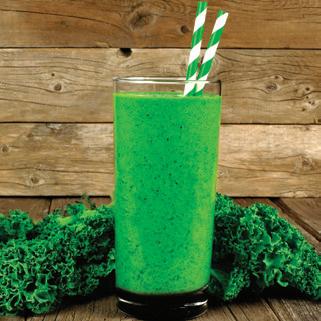
33 Calories & Zero Grams of Fat
More Calcium than a Container of Milk
Anti-Inflammatory
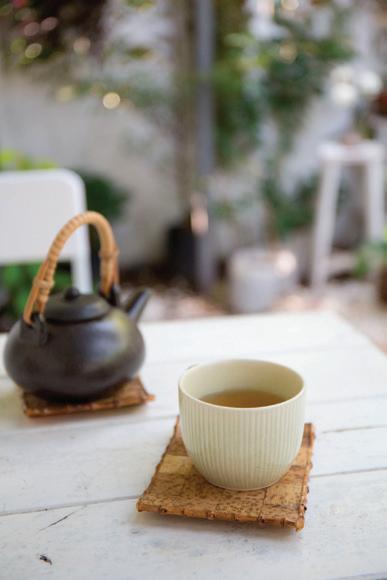
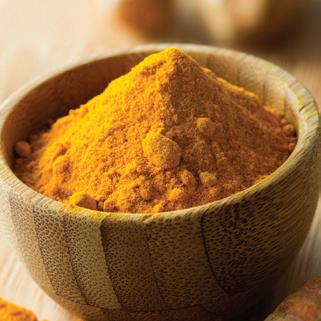
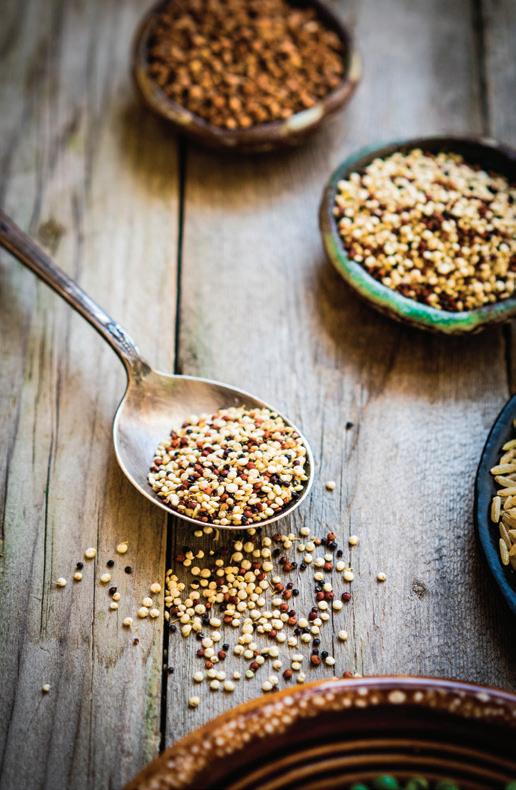

Natural antibiotic
Strengthens ligaments
Improves digestion
Reduces arthritis
Detoxify the liver

Boost metabolism
Anti-oxidant
Soothe Dry Skin
Strengthen Weak Nails
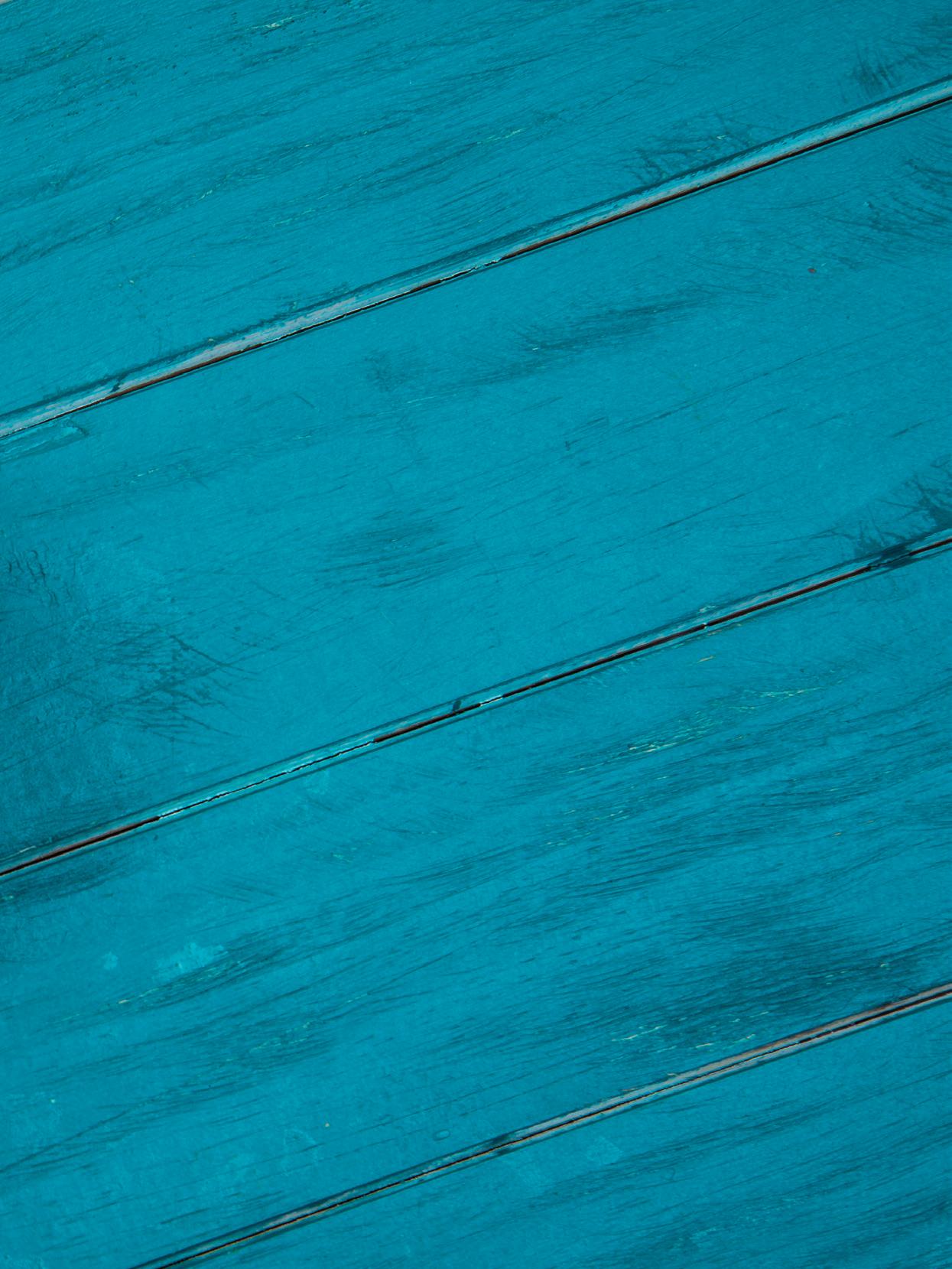
Fade Stretch Marks
Great Hair Conditioner
Fights Against Dry Scalp
Promotes Hair Growth
Great for treating Insect Bites, Rashes & Bruises
HEALTH BENEFITS OF
Relationship 101
Healthy communication
Open, honest and safe communication is a fundamental part of a healthy relationship. The first step to building a relationship is making sure you both understand each other’s needs and expectations – being on the same page is very important. That means you have to talk to each other! The following tips can help you and your partner create and maintain a healthy relationship:
z Speak Up. In a healthy relationship, if something is bothering you, it’s best to talk about it instead of holding it in.
z Respect Each Other. Your partner’s wishes and feelings have value, and so do yours. Let your significant other know you are making an effort to keep their ideas in mind. Mutual respect is essential in maintaining healthy relationships.
z Compromise. Disagreements are a natural part of healthy relationships, but it’s important that you find a way to compromise if you disagree on something. Try to solve conflicts in a fair and rational way.
z Be Supportive. Offer reassurance and encouragement to each other. Also, let your partner know when you need their support. Healthy relationships are about building each other up, not putting each other down.
z Respect Each Other’s Privacy. Just because you’re in a relationship doesn’t mean you have to share everything and constantly be together. Healthy relationships require space.
Healthy boundaries
Creating boundaries is a good way to keep your relationship healthy and secure. By setting boundaries together, you can both have a deeper understanding of the type of relationship you want. Boundaries are not meant to make you feel trapped or like you’re ‘walking on eggshells’. Creating boundaries is not a sign of secrecy or distrust – it’s an expression of what makes you feel comfortable and what you would like or not like to happen within the relationship. Remember, healthy boundaries shouldn’t restrict your ability to:
z Go out with your friends without your partner.
z Participate in activities and hobbies you like.
z Respect each other’s individual likes and needs. While boundaries are important, setting them together is just as important. This means taking each other into consideration so that you mutually agree on the outcome.
Healthy relationship boosters

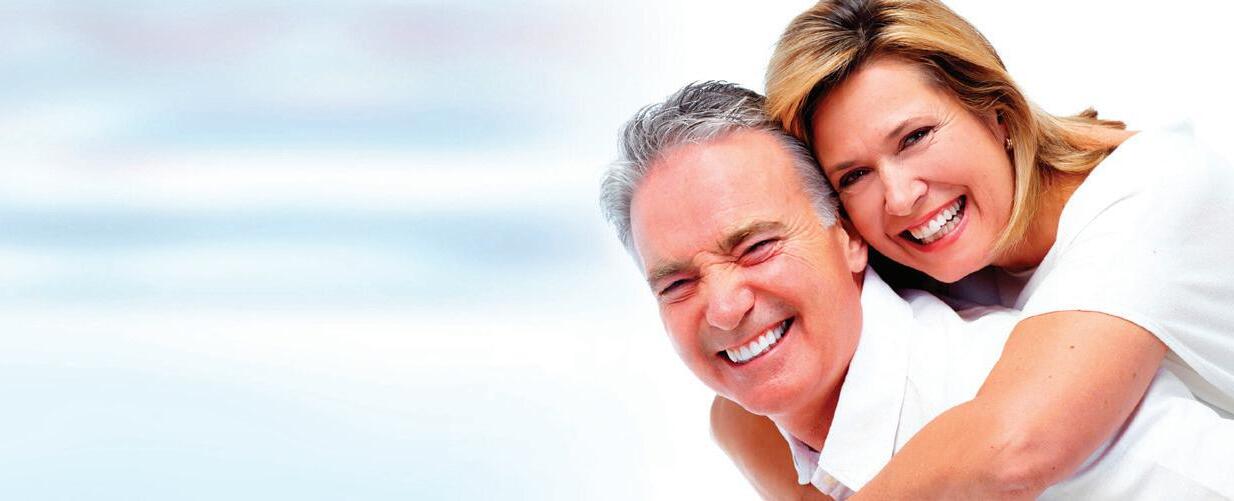
Even healthy relationships can use a boost now and then. Couples with young families become caught up in the ‘doing’ and forget about the ‘being’. It is imperative that you both have some significant time together alone without the constraints of kids. Date nights are really important in this area. Even if it is just a dinner or movie together once a month, make sure that it happens as this time is an important time of communication between couples and a definite boost to your relationship.
If you’re single (and especially if you’re a single parent), don’t worry if you need a boost too! Being single can be the best and worst feeling, but remember relationships don’t just include your significant other and you. Think about all the great times you’ve had with your parents, siblings, friends, children and other family members.
Try going out with the people you love and care about the most – watch movies together, go out to eat, take a day off from your busy life and just enjoy being you. And don’t forget, the most important relationship to boost up is the one you have with yourself!
80 www.gohealthier.com.au Councelling
Different people define relationships in different ways but in order for a relationship to be healthy, it needs a few key ingredients!
Why and when couples seek help

It’s a known fact that appointments are only made when the chill in a relationship has reached zero degrees. What once had been a loving relationship is now characterized by irreconcilable differences in beliefs about financial decisions, physical intimacy, contact with relatives, and even how to load the dishwasher!
Change takes time and relapses will occur! Each partner needs to understand that they are both good people, however their patterns of communication have created a daily fencing duel. The therapy process will hopefully return you to your prior loving relationship only
after you both become aware of how each contributes to this daily duel and begin to make changes. The process will work if you both ‘are willing to try on some new ideas and own your part in it’.
Therapists are not referees
Couples often arrive at the session believing that each partner will be laying out his or her ‘position’ and the therapist will act as a referee to decide who is right. It is not a matter of one person being right or wrong – both partners make sense from their perspective. Couples often believe that the therapist’s job is to ‘fix’ their partner and many couples are sceptical about whether therapy will work.
By pointing out the importance of the ‘we’ and not the ‘me’ in the relationship, couples begin to understand that both are expected to participate by making changes. This means that counselling is a joint venture to better understand the relationship, not an adversarial one.

Disclaimer: This article was written and provided by Paula Dunn (Dip Couns, Dip Hlth, Dip Clin Hyp). Contact: paula@turningthepage.com.au or for more information please see www.turningthepage.com.au Holistic Counselling & Hypnotherapy
0415 230 211 www.turningthepage.com.au

www.gohealthier.com.au 81 Councelling
SUICIDEA MOTHERS STORY
My name is Patricia and this is my story – my story and that of my two sons, Tristan and Ezra.

Tristan was born in 1974 and eighteen months later, in March 1976, his brother Ezra was born. They were not alike physically or in any way for that matter, but they were inseparable.
Tristan was bright, happy, positive, outgoing and sometimes over the top! Ezra was quieter, more reflective, shy, somewhat introverted and seemingly content to float along in Tristan’s shadow.
Both T and E (as they were known) were extremely creative – painting and drawing, creating animations on their computers or sculpting – whenever time allowed. Their father is an artist and my mother was a pianist and a potter so creativity was in their genes. Despite having achieved excellent results in their final examinations and having many choices available to them, both chose to follow their creative interests with Tristan studying graphic design at RMIT and Ezra choosing drawing at the Victorian College of the Arts. Although their careers went in completely different directions, they remained in close contact continually flipping “Hey bro ...” emails to each other and sharing ideas.
As an adult, Ezra remained a complicated man and very reliant on Tristan.
After the breakup of my marriage in the mid 1990s I moved to Italy and it was while I was living there that this story really begins.
During my time in Italy, I worked as an English language teacher at the Military School in Perugia. Interestingly I actually felt I was closer to my family than I had been when I was living in Melbourne! Our phone conversations and emails seemed to be more meaningful as we were genuinely interested in what each were doing on the other side of the globe.
I have divided the remainder of this story into three separate parts as that is how it is in my mind.
DISTANCE
At six o’clock Italian time on the morning of January 15 2004, my phone rang. It was my ex-husband John yelling “He’s gone!”
My recollection of that time is very hazy. While I do remember amazing kindness, my memories have a sense of unreality bordering on insanity. This strange sense of unreality seemed evident in all who had been close to Tristan.
GUILT
Tristan and I had always had an extremely warm and close relationship – we chatted regularly and flipped emails backwards and forth and I felt that I knew him inside out. He had told me of the relationship problems he was having and of his deep unhappiness and I had persuaded him to think seriously of joining me in Italy. We had a plan!
Looking back now I feel such a mix of loss, anger and guilt. Guilt because I felt that it would have been insensitive to ask too many questions, to scratch the surface. Guilt because I believed that all would be well, that he just needed a fresh start, a new beginning. Guilt because I did not recognize the depth of his grief, his despair.
ANGER
The third component of this historical part of my story is anger. The anger I felt was what kept me going, a deep seething, all-encompassing, raging emotion.
I still feel this anger at times. I believe that it is now an intrinsic part of me as is the feeling of loss – not seeing my mannish boy develop, not having his bright conversation, not having his IT assistance(!), not having his wonderful light joyous persona in my life.
82 www.gohealthier.com.au Suicide Prevention
Artwork by John Krzywokulski.
Anger, guilt and loss
Three emotions I now hold as a part of my psyche.
As a result of what happened on January 15 2004, my life, the lives of my family members and of all those who knew and loved Tristan has been irrevocably changed.
I also have a daughter Tracey from a previous marriage. Tracey is 10 years older than Tristan and they had a really close relationship and although this story is primarily about my sons, I feel that I must include the profound effect Tristan’s death has had upon her. These are Tracey’s comments as she gave them to me: “the physical effect of the stress, the onset of Graves Disease”, “I feel robbed, as though my only sibling was taken away”, “I don’t have the ‘family’ that I had, that I want” and “It made me fearful of answering the phone for a while – still does sometimes”.
Ezra told me recently that he had never made a decision for himself whilst Tristan was alive. As a result of my experience since Tristan’s death and observation of Ezra’s decline, which I am powerless to assist, I have concluded that immense grief is indeed a form of insanity.
However while the deep sadness I feel when speaking of the loss of my boy is at times overwhelming, it is mitigated by the memories I have, warm happy, indeed joyous memories of his boyhood through to maturity. I am deeply grateful to have known him, to have had him as a part of my life for 29 years, to have been his mother.
I returned to Italy but found the distance from Australia, from Ezra, too unsettling for me to be able to continue my former life there.
A question that all of us who have lost a loved family member or friend in this way is ‘why?’ This is the question that wakes us crying in the night as we pore through our memories trying to answer the unanswerable.
The ‘why?’ that has totally changed our lives. The ripple effect of suicide cannot be underestimated.
Ezra has not yet recovered from his loss and in fact, he may never recover.
The message that I hope to impart by the telling of this story is one of love. We all need to realise that today is the only day, in fact this very moment, is the only moment that we can be sure of. We need to get into the habit of cherishing our loved ones, showing them how important they are to us and dispensing loving kindness liberally to all we are in contact with.
Tristan’s final note included a message, a message to me – a message written in capital letters.
SORRY MUM. (MUM: THE ONLY ONE I HAVE EVER LOVED UNCONDITIONALLY…)
Patricia hopes this article will spread awareness and assist the education and motivation of those who read it to take action towards the prevention of suicide.
If you or someone you know is thinking about suicide, you can call Lifeline on 13 11 14
Disclaimer: This article was written and provided by Patricia Reilly (Masters in Educational Psychology - Family Counselling) at Beyond the Masks Counselling and Psychotherapy. For more information, please see www.beyondthemasks.com or contact Patricia at patricia@beyondthemasks.com
Patricia Reilly - The counsellor with an unconventional approach for healing individuals, couples and families.
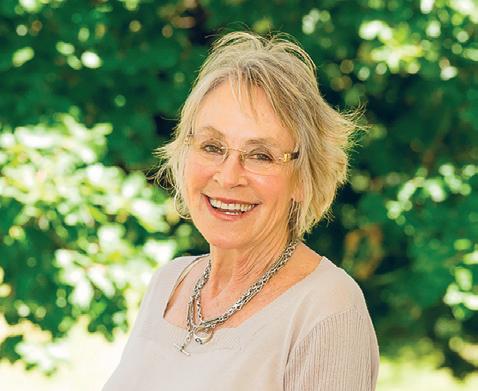
Patricia has been in practice for over a decade combining her professional knowledge, life experience and passion for helping people in order to provide the best counselling service possible. In doing so, she has assisted children and families to develop various coping strategies to assist in navigating today`s turbulent world. Her approach is empathetic, practical and insightful. A focus of her work is the development of emotional intelligence, emotional resilience, emotional regulation and positive self-esteem. The importance of learning to live life in the moment whilst taking the lessons of the past into account and looking forward to the future is also a recurrent theme of Patricia’s approach with her clients.
Patricia provides her clients with a combination of personal growth, counselling, and psychotherapeutic methods including her unique use of Sand therapy, to facilitate emotional healing. She strongly believes that a happy and healthy mind/body connection is essential for life skills.
Patricia is deeply committed to helping each individual, whether child or adult achieve the very best version of themselves possible! Keep up to date with upcoming Women’s Circles, Workshops/Courses and Retreats www.beyondthemasks.com
Beyond the Masks Counselling and Psychotherapy

M: 040196099
E: patricia@beyondthemasks.com
W: www.beyondthemasks.com
Consultation by appointment from 10:00 - 6:00pm Monday to Friday (available after hours and or onf weekends by arrangement)
www.gohealthier.com.au 83 Suicide Prevention
PATRICIA REILLY Masters in Educational Pyschology - Family Counselling
only place

have to live
habit.
now.
KEEP THE HABIT TO FUEL YOUR MIND WITH POSITIVE THOUGHT BECAUSE NEGATIVITY IS A WASTE OF ENERGY Be the ENERGY you want to attract
allow
and
the
YOU
@Tamlynpatersonphotography
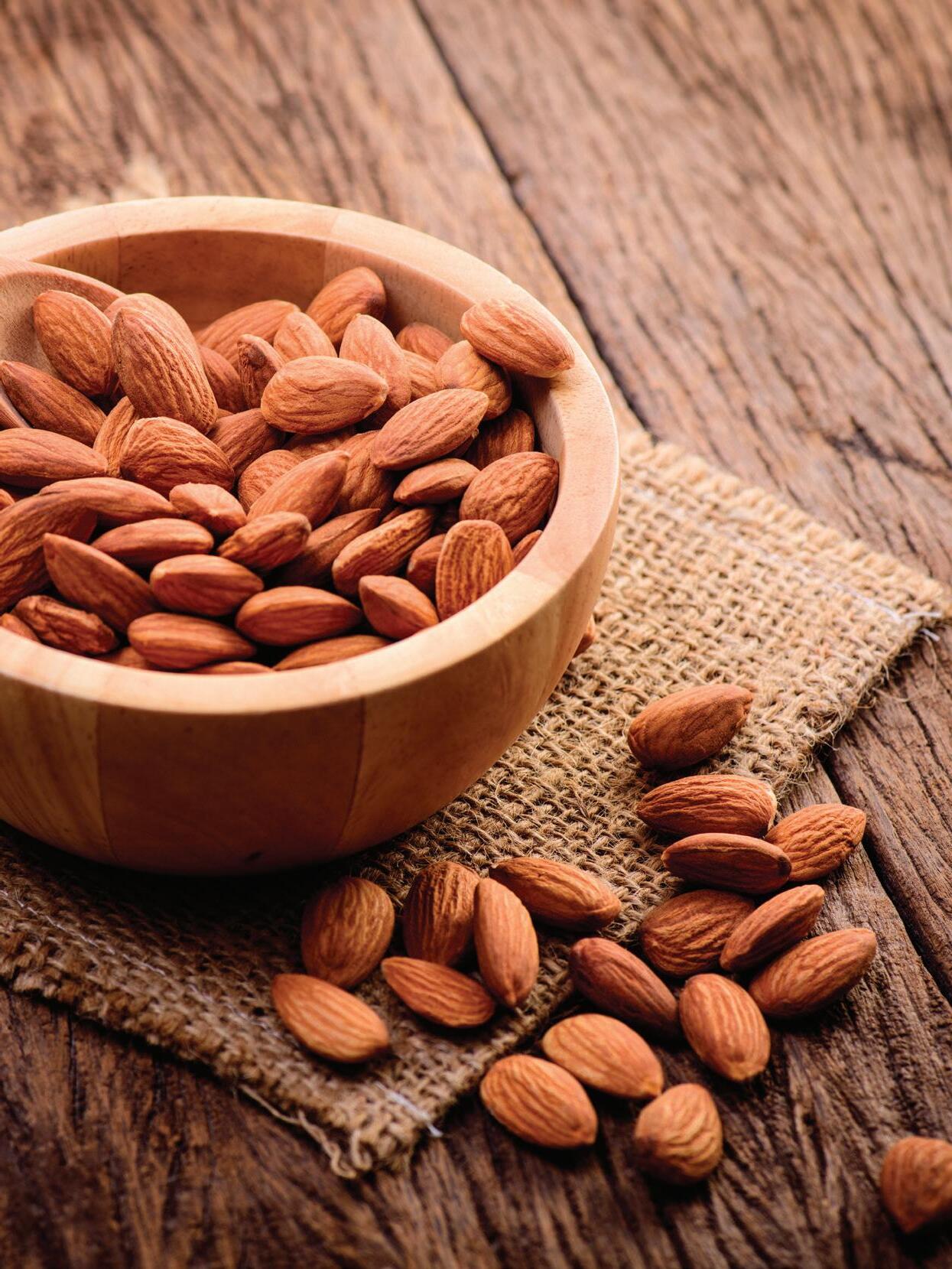
HEALTH BENEFITS OF CholesterolRegulateLevels Improves Bone Health Prevents Heart Diseases ImmuneStrengthensSystem Reduces Inflammation Regulates Blood Pressure BoostsProductionEnergy ProtectsDiabetesAgainst Skin Nourishment
50’s 60’s:
What to look for in an aged-care facility
Friendsandfamilywelcome
Pets welcome to visit
Regular and diverse social outings
Regular shopping trips
Happy hours, pre-dinner drinks, cocktail hours
BBQ nights
Live music
Qualityfoodanddiningpreparedbyon-sitechefs
Exercise programs
Wi-Fi connection
24hr nursing care and support
Palliative care
Dementia care
Pastoral care
are responsibilities. They’re stuck between helping both their ageing parents (with increasing levels of dependency) and financially dependent on them to some extent or need them as carers for the
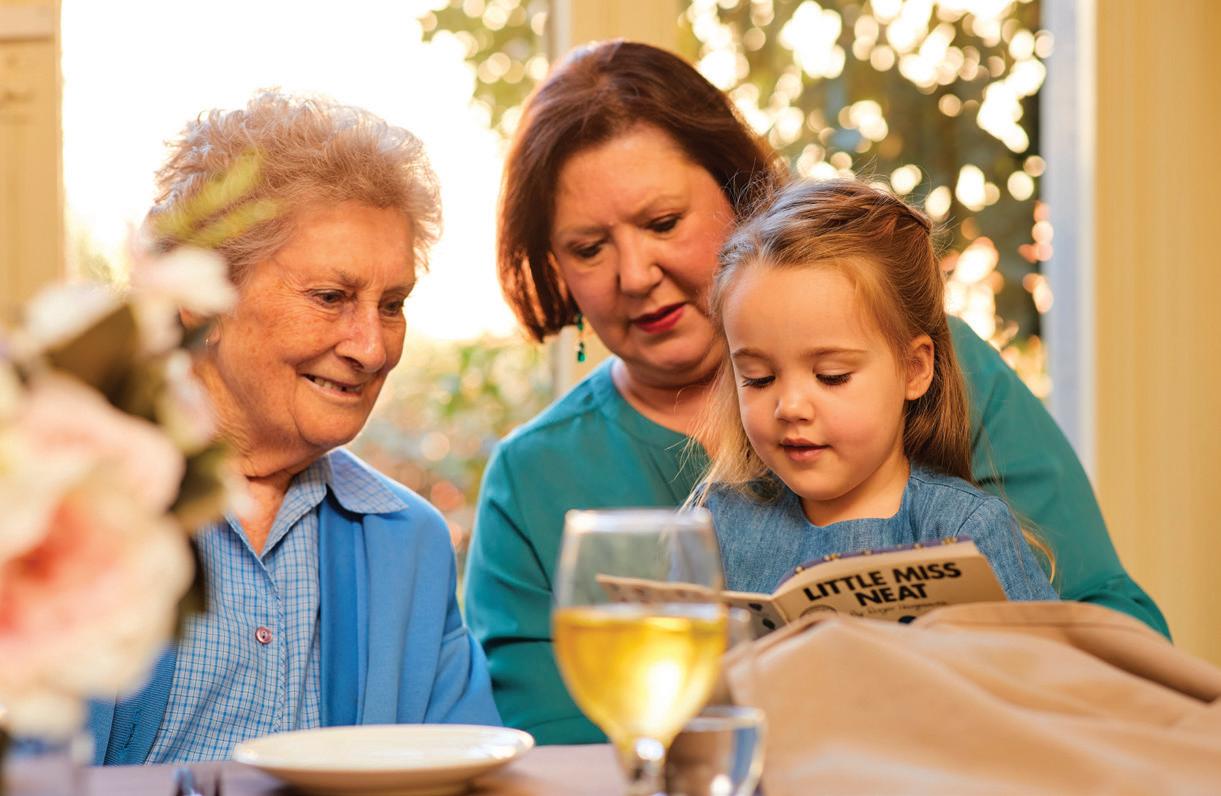
This concept of parents’ needs pulling on one side and children’s needs pulling on the other side is what is referred to as the ‘sandwich years’. This ‘sandwich generation’ is a growing sub-group of the Baby Boomers who tended to marry and have become the first generation to be sandwiched between the care of their parents.
Trying to manage this tension creates a whole emotions from an overwhelming sense of responsibility guilt. Baby themselves being a taxi driver and babysitting service to children who haven’t quite got it all together and a carer for
begin the
task of researching the right aged-care provider to best care and support their ageing parents. This checklist aims to give you peace of mind when choosing the right loved one, and to ensure they are not only getting the necessary clinical care they need but continuing to live the type of

Aged Care
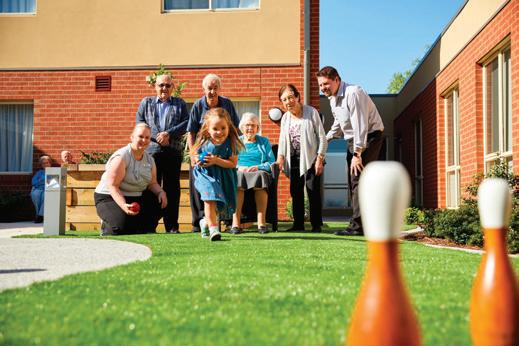
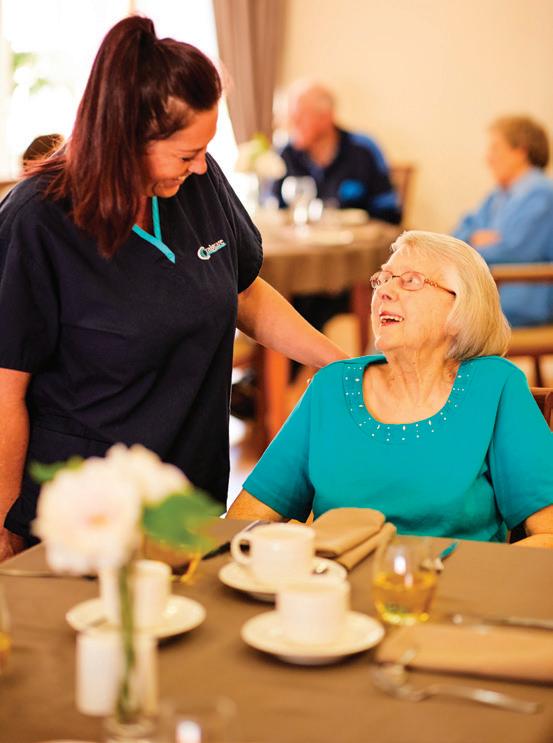

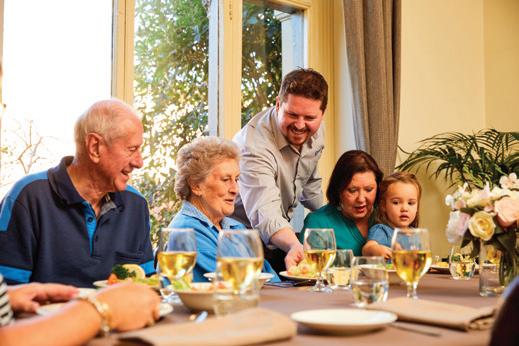
www.gohealthier.com.au 87 Aged Care
finding
right aged-care provider for your loved one, don’t ever settle for second best. Your loved one deserves to continue to feel that they are the same person they have always been. They deserve nothing less than to feel safe, in control, confident, engaged in lifestyle activities and hobbies they have always enjoyed and socially connected to their family, friends and their local community. Disclaimer: This article was written and provided by Tony Stephenson, CEO Craigcare. For more information, please visit www.craigcare.com.au or call 1300 427 244. Finding the right care can be time consuming and a highly stressful process. With Craigcare, you can lose the worry and gain a supportive and compassionate care team who will provide the right care and support options so your loved one can continue to live life their way, on their terms. RESIDENTIAL AGED CARE Contact us now on 5974 6000 or fm-morn@craigcare.com.au
When it comes to
the

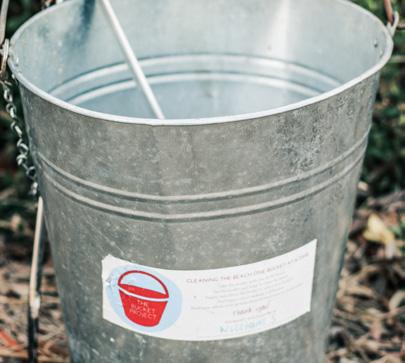
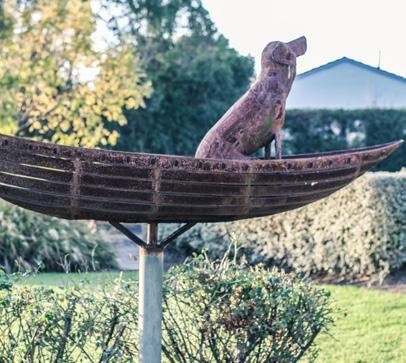
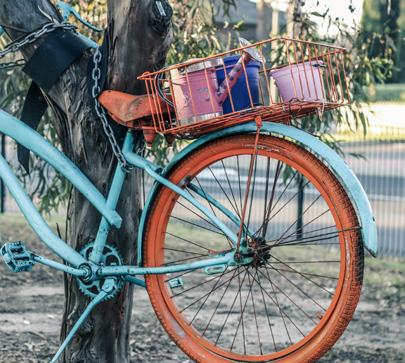
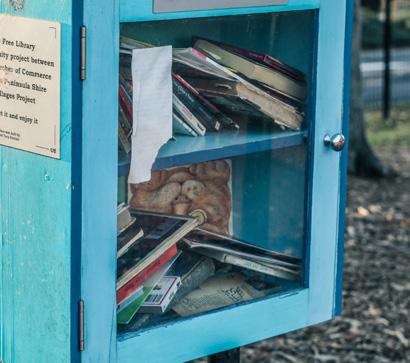


88 www.gohealthier.com.au Terms and conditions Competition closes 31st December 2018 . Each lucky winner wins one prize. Six prizes to be won. One prize will be drawn at the end of each Month July 2018, August, September, October, November and December 2018 Prize drawn will be shown live on social media and names will be published on Facebook and www.gohealthier.com.au All prizes are donated by local Mornington Peninsula Businesses. Only people with the ability to pick up the prizes from HQ Go Healthier in Mornington Victoria may enter as no prizes will be sent via post. To enter, email us your name to subscriptions@gohealthier.com.au and tell us which one town on the Mornington Peninsula all these photos were taken in. Prize Three 3 x Clarity and Clearing Energy Healings, total value $390. Prize Five Two winners, each win a Kinesiology Treatment RRP $180 WIN! WIN! WIN! JULY SEPTEMBER NOVEMBER SUBSCRIBE ONLINE! Competition
us on Social
for exclusive
and
Holistic Counselling & Hypnotherapy 0415 230 211 www.turningthepage.com.au
If you follow
Media you know that we do giveaways weekly so now we will have a secret club
information, offers, discounts
giveaways on the Mornington Peninsula only to subscribers so don’t miss out.
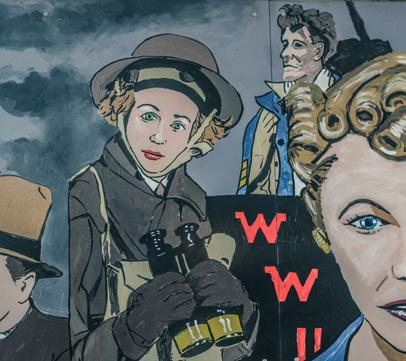




www.gohealthier.com.au 89 Prize Four The diamond Polar wrinkle reduction treatment combined with the RF treatment are advanced non surgical solution for skin resurfacing RRP $475. facebook.com/gohealthiermagazine Once the prize is received all responsibilities and communication is between the prize donator and the winner. Go Healthier takes no responsibility in any matters arising after the prize has been drawn and handed over to the winner Prizes are valid for 6 months or if stipulated otherwise on the prize. All entry details will be held by Go Farmer Pty LTD no third parties will have access to the date and this is for promotional purposes only. SIX prizes to be won! Prize will be drawn at the end of each Month @Tamlynpatersonphotography Prize Two Cross Fit Mornington : Beginners Program RRP $200. WIN! WIN! WIN! AUGUST OCTOBER DECEMBER SUBSCRIBE ONLINE! Competition Toenter,emailusyour name to subscriptions@gohealthier.com.au andtellus whichone townontheMorningtonPeninsula allthesephotoswere takenin. B1 C1 D1 E1 B2 C2 D2 E2 McCrae Clinical Therapies
Animal Physiotherapy
– Can it help your pet?
Animals just like humans suffer from many types of injuries and conditions including sports injuries, degenerative complaints and post surgical pain and dysfunction.
Animals like humans may require the assistance of a physiotherapist for pain relief and rehabilitation.
As an animal physiotherapist I treat dogs and horses very similar to the way I would my human patients.
Osteoarthritis
1 in 5 dogs develop osteoarthritis over the course of their life and many owners don’t know how to recognize the early signs. If your dog:
has become less active
is stiff and slow to rise after rest
is lame on one or more limbs
has trouble jumping or getting up and down stairs
Chances are, they’re not just “getting old” but have the beginnings of degenerative joint disease.
Osteoarthritis commonly occurs in dogs over 7 years. Overuse, obesity, poor conformation or old injuries can all cause degeneration, swelling, and inflammation of the joint capsule and often abnormal bony spurs. All these signs of osteoarthritis may lead to a loss of mobility and pain in our canine companions.
PHYSIOTHERAPY IN ARTHRITIC PATIENTS
Physiotherapy relieves pain, can reduce joint stiffness, builds strength and develops balance and coordination. Good muscle strength reduces the impact through joints and all these factors combined are important in keeping your pet mobile and able to engage in their normal activities.
Maintaining mobility is not only important for your pets quality of life but becomes crucial in maintaining or achieving a healthy weight. If your pet is overweight, losing just 10% of their body weight may result in significant improvement in pain.

UNDERWATER TREADMILL
Hydrotherapy is ideal for patients with osteoarthritis. Water unloads painful joints, allowing safe, controlled weight bearing on weak and/or painful limbs and studies have shown it particularly effective in reducing pain in these patients. It’s also great for weight loss.
Your treating vet will also discuss with you multimodal approaches to dealing with this disease including: anti inflammatory medications, and disease modifying agents such as pentosan or Xydax. These approaches will always be most beneficial when in conjunction with a canine rehabilitation program.

Cruciate Ligament disease
A common injury in dogs is the cranial cruciate ligament where the ligament in the knee (stifle) ruptures or partially tears. This ligament provides stability to the knee when standing on the leg. When the ligament is damaged the dog will be intermittently lame at first then lameness with become more consistent. If the ligament is completely ruptured the dog will not put the leg down much at all. This lameness can be either progressive ie, degenerative cruciate disease or tear suddenly with running or jumping. This problem may be treated conservatively depending on the size of the dog and degree of tearing of the ligament, or with surgery that improves the stability of the knee. Any operation is best followed up by post-op physio rehabilitation.
We treat many dogs small and large with cruciate issues and many local vets refer to physiotherapy directly after they have operated.
You would expect a young football player to have physiotherapy following a cruciate repair. So for your dog to optimise success after an operation use Physiotherapy post-op.
The aims of physiotherapy rehab after cruciate injury are:
to reduce pain
promote healing
promote controlled functional use of the limb/s
prevent compensatory stresses on the other limbs and spine
provide advice to the owner.
As physiotherapists we treat a variety of conditions. I have included a couple of case studies from my own practise.
90 www.gohealthier.com.au
Animal Health
CASE STUDY
Riley is a nine year old English Setter that presented to physiotherapy 5 days after cervical surgery for a disc injury. He was treated by a specialist at The Veterinary Referral Hospital in Hallam. His injury was severe and Riley was unable to move any part of his body after surgery. He was hospitalized for five days after surgery.

Initially treatment consisted of bicycling exercises and stretching of all four legs and changes of position every two hours to avoid pressure sores. We propped him up using pillows and foam so he could lie in sphinx position, this position is important for quadriplegic dogs as it encourages neck and trunk movement. The dog can also look around which reduces the risk of the dog getting distressed. Riley managed to hold his head up and move his neck a little by the end of the first week.
Week two we started Riley in the underwater treadmill. We had to have one practitioner in the treadmill to move his legs and somebody outside to hold him up. Assisted walking a quadriplegic dog in the treadmill is a very difficult thing to do but helps retrain the dog to walk again. We did treadmill walking two times per day for two weeks. We also took him outside regularly using a harness to encourage use of his bowel and bladder.
Week three we had movement of all four legs and some weight bearing ability of the front legs, he was still unable to weight bear on his back legs.
Unfortunately at this time Riley also developed a Urinary Tract Infection. This is common with dogs with spinal injury as they can’t empty the bladder without assistance. While Riley was getting treated for his Urinary Tract infection we were unable to put him in the underwater treadmill.
Week four the specialist who performed Riley’s surgery dropped in to see how he was going and was very surprised and happy to see Riley walking with minimal hind limb support (to avoid him falling over).
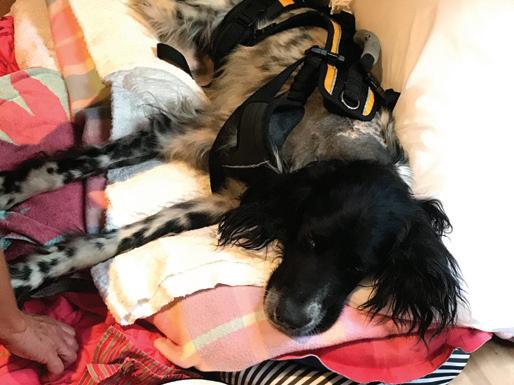
Riley dropped in for a visit last week and is running around like a normal dog, the owner came in for a little more advice with his advanced rehabilitation. Riley, though moving well, still tends to drag is right fore and hind limb a little. His owner is now going to set up an obstacle course at home to further improve function.
Looking after and rehabilitating a dog like Riley is a big commitment for any owners. I take my hat off to any owners that go through this difficult journey with their dog.
Animal Physiotherapy & Rehabilitation
www.gohealthier.com.au 91
Disclaimer : Article provided by Jodie Watson (Bachelor of Physio, M An Physio, APAM) from ARC (Animal Rehabilitation Centre). Visit www.mparc.com.au or ph 59761069 for more info.
Located in Mornington, Victoria our centre is equipped with an extensive range of state-of-the-art equipment to aid in all areas of Physiotherapy and Rehabilitation of your pet. Our dedicated and caring team treat your animal as one of their own and work in conjunction with vets to achieve the best possible outcome for your pet. Our services include: Canine Physiotherapy Consultations Equine Physiotherapy Consultations Canine Myofunctional Massage Canine Underwater Treadmill Canine Swimming Pool Equine Rocktape Practitioners Equine and Canine Products & Supplements 203 Mornington-Tyabb Rd MORNINGTON 5976 1069 Email: info@mparc.com.au Animal Health
Naturopathy for animals
Animal naturopathy is an alternative form of healing using only natural, non-invasive, methods to prevent and treat illness in animals.
Different modalities such as homeopathy, herbal medicine, flower essences, mineral therapy, massage, nutrition, or any combination of these may be used in the treatment, depending on the particular animal and the condition being treated.
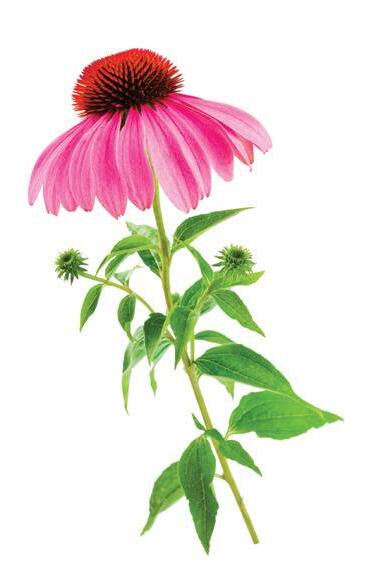
How herbal medicine can help your pet
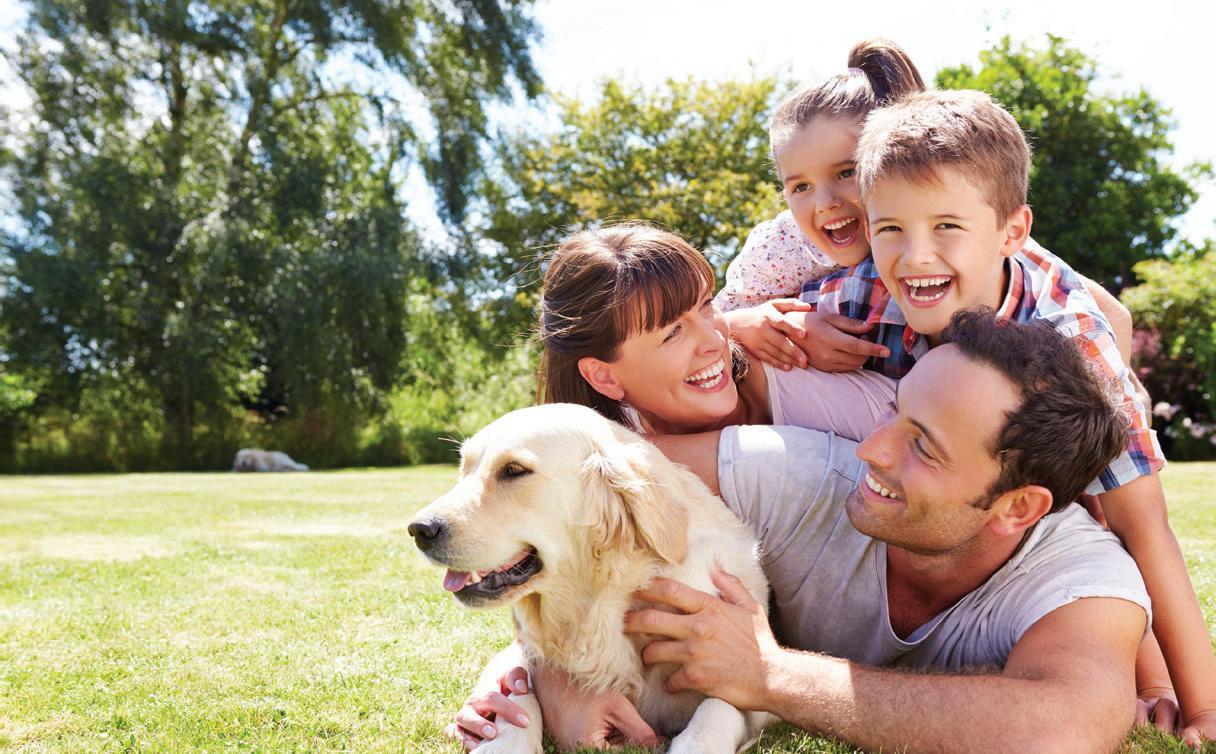
Herbal Medicine, also known as phytomedicine, is the practice of using what the Earth has given us through plants to heal and support the body back to optimal health. The medicines always consist of the whole parts of the plant and all components have a part to play in the healing process.
In using all the components of the plant, your pet’s body will readily accept and respond to them without inducing any side effects. Herbs also heal on a cellular level, which means your pet is healing from the inside out rather than working on suppressing the symptoms. Herbal Medicine allows you to treat your pet with a holistic view to their health for the long term.
The choice of herbs used will depend on what else is going on in your pet’s body, plus the environment and current medications they may already be taking. Herbs can be given in many forms and the most economical and simplest way is with infused herbs which can be mixed with food. External treatment can also be used to soothe and relieve inflammation but it’s the herbs taken internally that perform the real healing.
Herbal treatment should not replace veterinary care and ideally the two will work collectively. Each animal is individual and in the perfect world Herbalist’s and Veterinarians would be working together on the best outcome for your pet’s health with their combined professional knowledge.
92 www.gohealthier.com.au Animal Health
Conditions naturopathy can help
Skin disorders such as eczema, flea allergies, warts, ringworm, ear infections, mites, eye discharge, arthritis, allergies, fleas, kidney, heart and liver problems, chronic infections, digestive problems, abscesses, parasites (worms), fur balls, gum disease, excess weight and behavioral problems are just some of the common problems in pets that can be rectified with naturopathic treatment.
Looking at your pet’s diet
A herbalist would also look at your pet’s diet and make adjustments back to a raw species-specific diet. Diet is extremely important in maintaining optimum health for all animals, and dogs and cats are no exception, especially when many are fed on an unnatural diet of highly processed canned and dried food. It is not uncommon for some dogs and cats to have never eaten any fresh food at all. In fact, it is totally natural and necessary for them to eat raw meat and bones, and they will be much healthier on a diet of fresh foods rather than processed foods.
How naturopath works
Naturopathy involves treating the whole animal, rather than just the symptoms, to balance and improve the animals overall health, and not just the current ailment. Consultations involve taking a complete history of the pet’s diet, medical and health status, and providing details of recommendations along with any therapies that may be indicated. Animals generally respond extremely well to natural therapies. But most importantly, they are safe and non-toxic when prescribed by a professional.

Like any health care for pets, it’s vital to choose what is best for your pet. Ultimately you need to feel happy about the choices you make for your fur baby. Professionals are there to offer advice but the owner should still be well-versed and critical about their choices and use common sense about what is best for them.

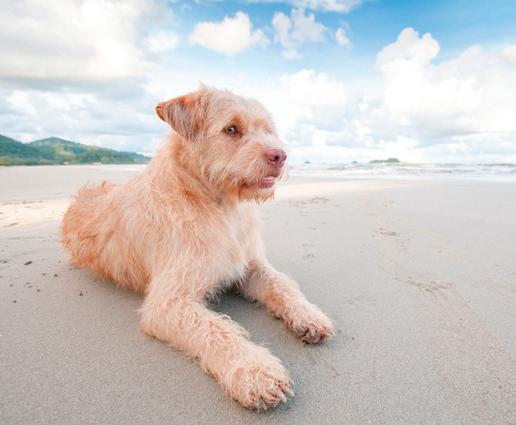
www.gohealthier.com.au 93
Animal Health
Nutrition
lara@larasark.com.au www.larasark.com.au @larasark @larasarkanimals Animal Naturopath 0416 152 530
Disclaimer: This article was provided and written by Lara Adams from Lara’s Ark Animal Naturopathy. For more information please see www.larasark.com.au or call 0416 152 530.
| Herbalism | Myofunctional Therapy Lara Adams
The wonderful story of Australian honey
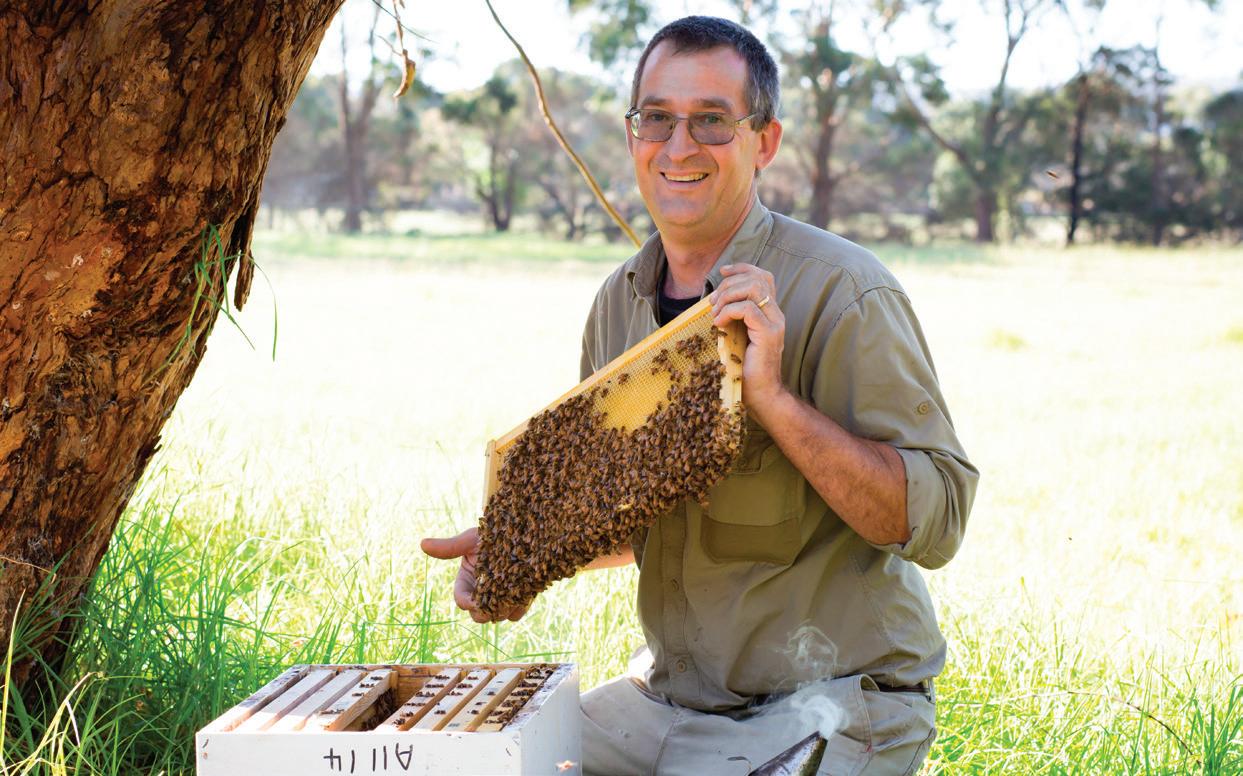
The honeybee is the most amazing creature in the insect world. The bee’s body is delicate, her life is short and enemies are many. Yet these daunting drawbacks are shrugged off as the bee goes daily about her task of collecting nectar and pollen to take back to the hive so that future generations of bees can thrive. And the bee is willing to die to defend the hive.
Even though throughout history man and animals have plundered beehives for a taste of honey, the honeybee has survived and adapted to climates and conditions far removed from that where bees were first recorded.
Introducing the Bee to Australia
The honeybee is not native to Australia. The colonists who came to Australia in its early days missed so many of the comforts and treats of “home” (England), they tried to introduce many of them to their new country. Plants, trees, animals, birds and many other reminders of home were introduced during those early years.
Fun Fact ,did you know: In the early 1820’s the honeybee was brought to Australia aboard the ship Isabella. She arrived in our waters in 1822 and adapted so successfully that other bee species were introduced from Italy, Yugoslavia and North America.
How Bees Make Honey
Inside the beehive each bee has a special job to do and the whole process runs smoothly. Bees need two different kinds of food. One is honey made from nectar, the sugary juice that collects in the heart of the flowers. The other comes from the anthers of flowers, which contain numerous small grains called pollen. Just as flowers have different colours, so do their pollen.
Let us go with the honeybee from her flower to the hive and see what happens. Most bees gather only pollen or nectar. As she sucks the nectar from the flower, it is stored in her special honey stomach ready to be transferred to the honey-making bees in the hive. If hungry she opens a valve in the nectar “sac” and a portion of the payload passes through to her own stomach to be converted to energy for her own needs.
The bee is a marvelous flying machine. She can carry a payload of nectar or pollen close to her own weight. Consider that even the most advanced design in aircraft can only take off with a load one-quarter of its own weight and you’ll appreciate the miracle that the honeybee can remain airborne with such a load.
When her nectar “sacs” are full, the honeybee returns to the hive. Nectar is delivered to one of the indoor bees and is then passed mouth-to-mouth from bee to bee until its moisture content is reduced from about 70% to 20%. This changes the nectar into honey. Sometimes the nectar is stored at once in cells in the honeycomb before the mouth-to-mouth working because some evaporation is caused by the 32.5°C temperature inside the hive.
Finally, the honey is placed in storage cells and capped with beeswax in readiness for the arrival of newborn baby bees. Pollen is mixed with nectar to make “bee bread” and is fed to the larvae. A baby bee needs food rich in protein if the bee community is to flourish.
Before returning to the flower again for more pollen, the bee combs, cleans and cares for herself not because she is vain but so she can work more efficiently. Throughout her life cycle, the bee will work tirelessly collecting pollen, bringing it back to the hive, cleaning herself, then setting out for more pollen.
94 www.gohealthier.com.au
Honey
Forager bees start out from the hive for blossom patches when three weeks old. As they live to be only six or seven weeks old they have much work to do and little time in which to do it.
There will be many other bees working at the same time, and the air will be noisy with their droning. It takes 300 bees about three weeks to gather 450g of honey. On average, a hive contains 40,000 bees.
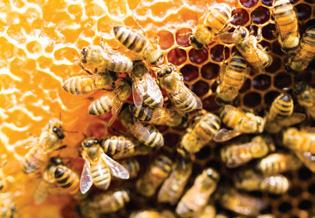
Manuka Honey
What makes Manuka honey different is its amazing nutritional profile. Regular raw honey is already known for its tremendous nutritional and immune boosting abilities. Generally speaking, the typical raw unfiltered honey is a rich source of:
¥ Amino acids
¥ B vitamins (B6, thiamin, niacin, riboflavin, pantothenic acid)
¥ Calcium
¥ Copper
¥ Iron
¥ Magnesium
¥ Manganese
¥ Phosphorus
¥ Potassium
¥ Sodium
¥ Zinc
Yet with Manuka honey, the nutritional content is up to 4 times that of normal flower honeys. This is what is called the Unique Manuka Factor.
How to Use Manuka Honey
To experience the most benefit, it is recommended to take a dose of about 1-2 tablespoons of Manuka honey a day. The easiest way is to just take it straight, but if it is a little too sweet for you, then you can add it to your favorite herbal tea, over yogurt, or on grain toast.
If you want to enhance the immune boosting effect or heal a sore throat, add 1 tea-spoon cinnamon. Research shows that the antimicrobial properties of cinnamon and Manuka honey are so powerful, that they can really help you recover fast!
Healing Power of Honey
Honey has been used since ancient times to treat multiple conditions. It wasn’t until the late 19th century that researchers discovered that honey has natural antibacterial qualities.
Honey protects against damage caused by bacteria. Some honey also stimulates production of special cells that can repair tissue damaged by infection.
But not all honey is the same. The antibacterial quality of honey depends on the type of honey as well as when and how it’s harvested. Some kinds of honey may be 100 times more potent than others.
Open 7 Days 9:00am - 5:00pm
871 Derril Rd, Moorooduc, 3933 Melbourne, Australia
Tel: (03) 5978 8413 purepeninsulahoney.com.au
PRODUCTS TO SUIT EVERYBODY’S NEEDS, TASTES AND DESIRES
Come and indulge in a honey ice-cream and taste different honeys while watching the bees build honey comb and collect pollen!
Over the course of 25 years, Pure Peninsula Honey has worked assiduously to develop products to suit everybody’s needs, tastes and desires. Today, there are close to 30 different honey, wax, honeycomb and cosmetic products that you can purchase.
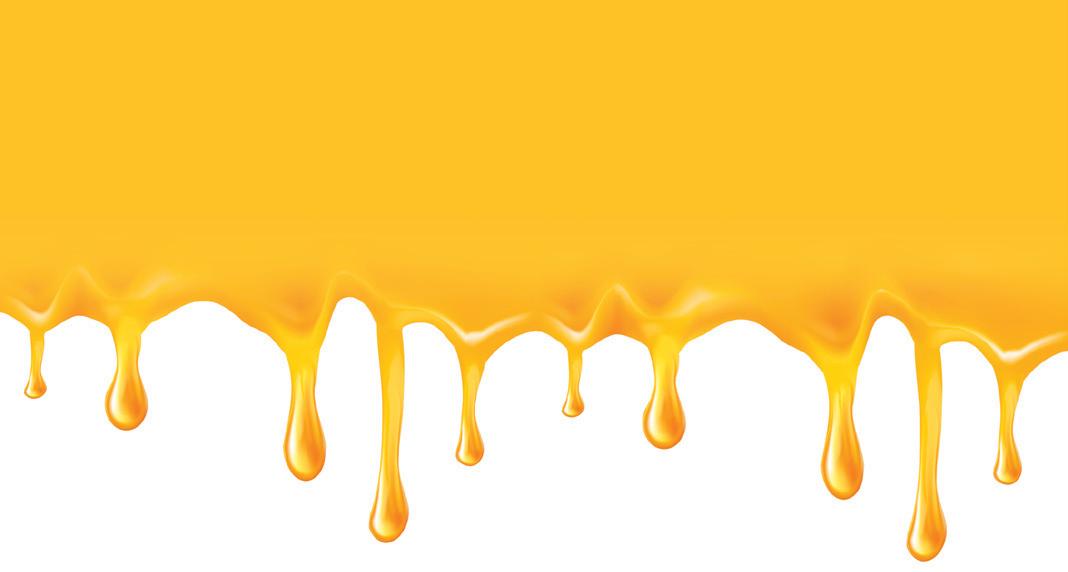
If your local Fruit & Veggie shop, Deli or supermarket does not stock Pure Peninsula Honey products, please contact us and we will try to establish supply if possible.

We offer a bee and wasp removal service, a pollination service for farmers crops and orchards, and retail wholesalehoney, and export.
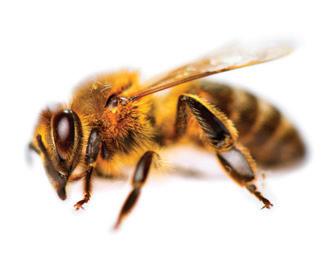
95
Honey Disclaimer: This article was sourced from www.honeybee.org.au from Australian Honey Bee Industry Council. For all your honey needs please visit Pure Peninsula Honey, 871 Derril Rd Moorooduc or call on 03 5978 8413
Free-range clarity
Cracking the new free-range eggs standard
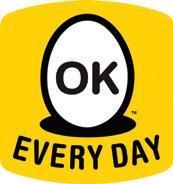
Free-range egg farmers now have three new key rules to follow, after the introduction of new information standards under Australian Consumer Law in April this year. Here’s what you need to know.
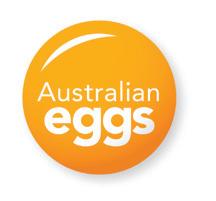
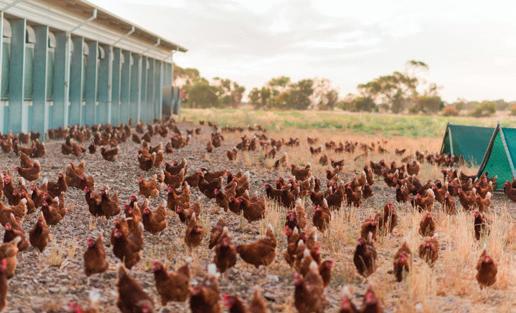
The great outdoors
Rule No.1 is that hens have regular access to an outdoor area during daylight hours. The standard stipulates “access to an outdoor area” because hens use barns to feed, lay and roost. If they lived out in the open 24/7, they would be much more likely to get sick, have a harder time laying, not get enough food and be easy prey for predators (such as foxes). So free-range hens use a secure range area where they can spread their wings, scratch the ground and bustle among the trees during the day, while still having the safety of a barn at night.
Stocking density
The third rule is that the outdoor stocking density must be no more than 10,000 hens per hectare. This might sound like a lot but a hectare is a lot of land. 10,000 per hectare is one hen per square metre or roughly four chickens on a king-size bed.
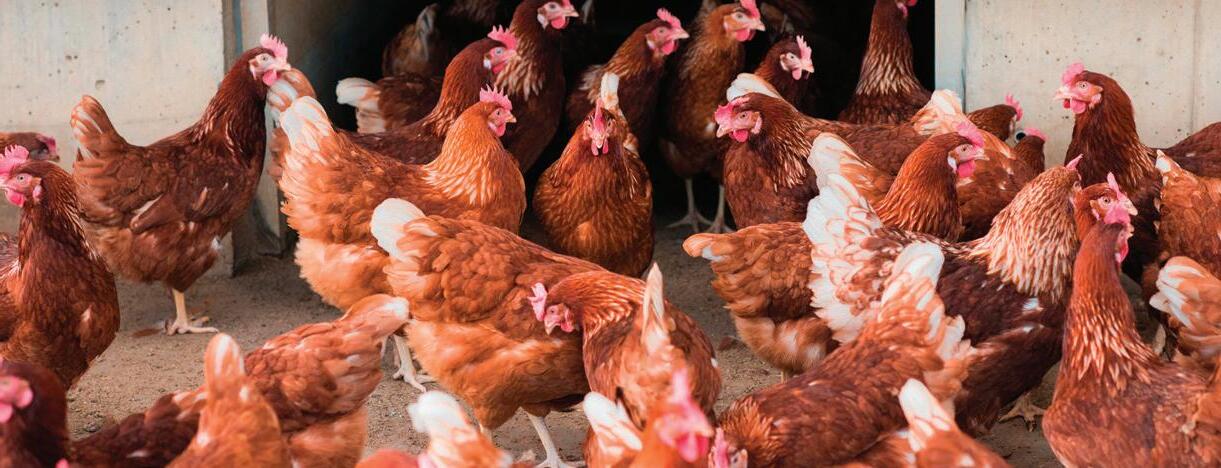
What’s on the carton?
Under the new regulations, egg farmers must also prominently state their outdoor stocking density on the egg carton. For people who buy their eggs unpackaged at farmers’ markets, look for signage near the eggs stating the stocking density.
Why does free range cost more?
From a food-production perspective, free range and other specialty eggs (such as organic or biodynamic) are examples of non-intensive farming. They require significantly more land space to house the flock and the hens are more likely to get sick because of exposure to outdoor pathogens.
The new information standard is important for consumers of eggs because it provides a strict definition of free-range. When people buy something labelled as free-range they want to know it’s been produced the way they think it has.
Using the range
The second rule is that hens are able to roam and forage on the outdoor range. This means hens have to leave the barn and use the outdoor range on a regular basis. Of course, farmers can’t perform head counts to track the movement of every hen but they do have to check whether their outdoor range is being regularly used by the majority of hens.
Openings from the shed (called pop-holes) give hens access to the outdoor range areas. Chickens are naturally fearful of predators so farmers use trees, shrubs, shade structures and hay bales on the range to encourage the birds to venture further away from the shed.
Australian Eggs recently released a Sustainability Framework that forms a long-term commitment by the egg industry to transparent engagement with the public. The egg industry has recognised the best way to build trust with the public is to increase the quantity and quality of engagement and set a platform of transparency and accountability. To learn more, visit www.australianeggs.org.au
96 www.gohealthier.com.au Protein
Disclaimer: This article is via www.australianeggs.org.au
MONDAYDOORBARNSALES
ANDSATURDAYS 8AM - 12:30PM
TOFRIDAY 8AM - 4:30PM
Tired of stale tasting supermarket eggs? Our farm is family owned and managed. We have been producing quality eggs for almost 40 years, supplying many cafes and restaurants and other businesses on the peninsula. Eggs are collected 365 days a year so you can be assured that you are buying the freshest eggs with the best yolk and flavour from our barn door. Come and visit our Free Range hens roaming in their paddocks!
FARM FRESH FREE RANGE EGGS AT WHOLESALE PRICES!
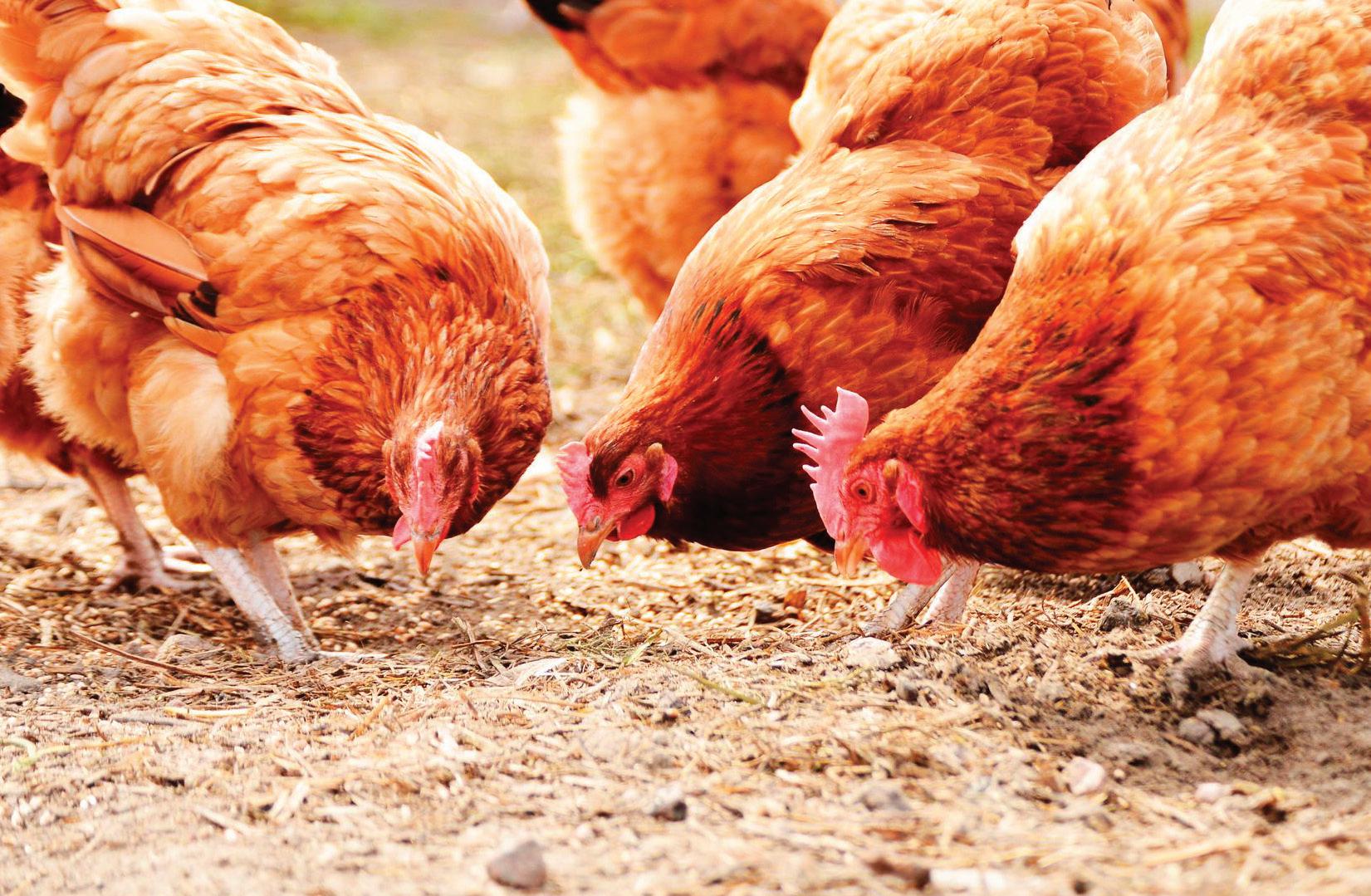
FOWL MANURE WHEN AVAILABLE.
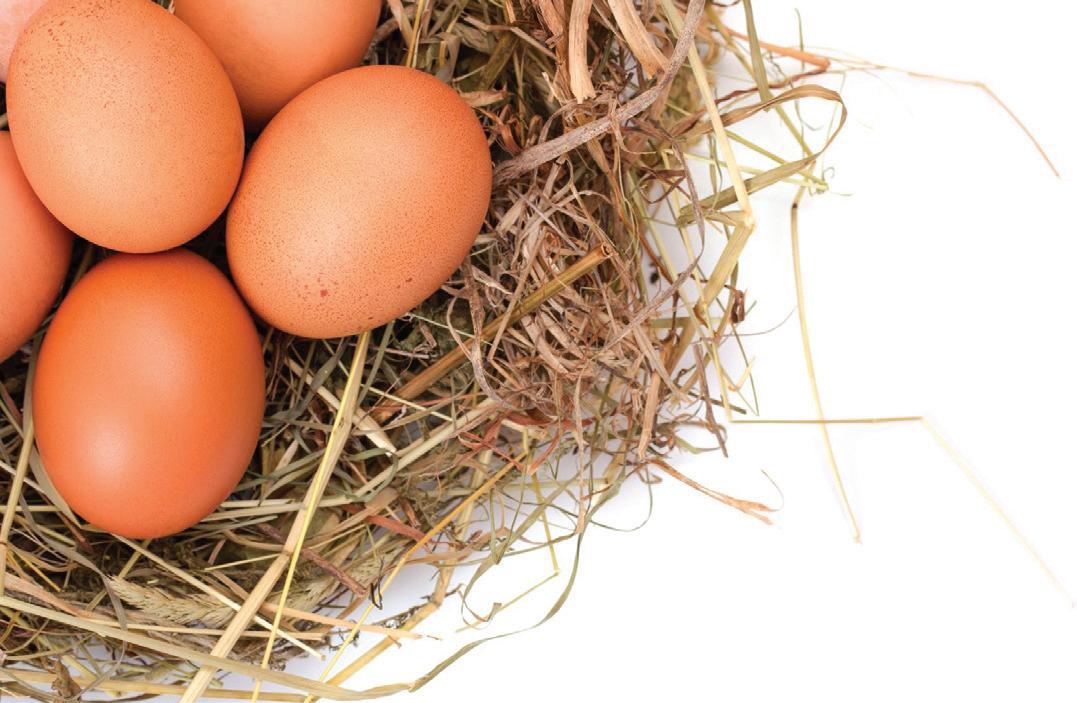
COMEAND SEETHECHICKENS ROAMINGFREEIN THEPADDOCK!
Protein
HEALTH BENEFITS OF
Boosts Immunity
Controls Blood Sugar
Lowers Chlosterol
Treats Candida
Nourishes Hair
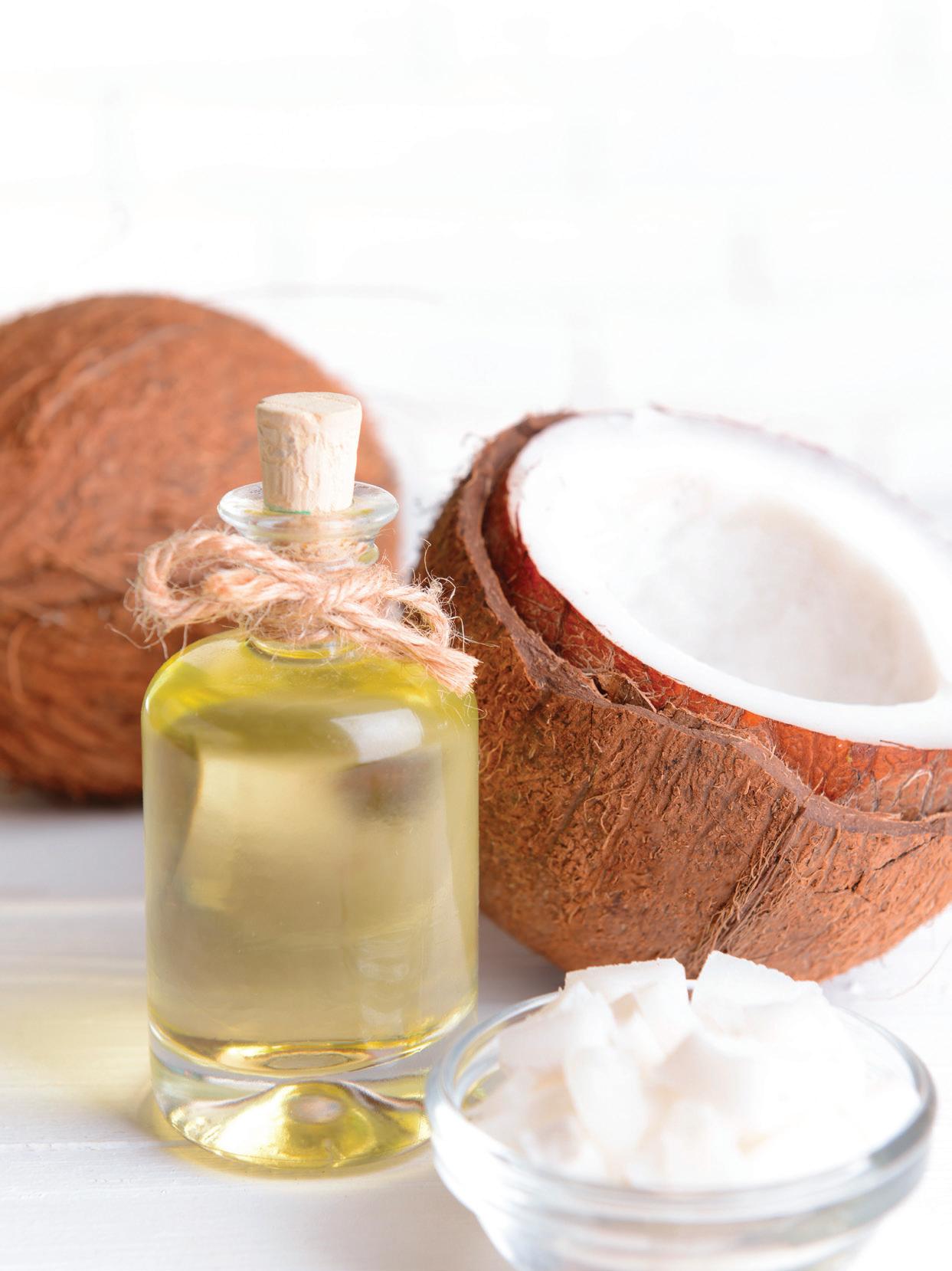
Aids
Digestion
Removes Stretch Marks
Increases Bone Strength
Combats Alzheimer’s Disease
PromotesLossWeights
ADVERTISING AGREEMENT with GoFarmer PTY LTD ABN 99150525723
HEAD OFFICE: 13a Fuji Cres. Mornington, VIC 3931 PHONE: (03) 8456 6570 FAX: (03) 8456 6580 WEB: www.gohealthier.com.au
ADVERTISING AGREEMENT with GoFarmer PTY LTD
HEAD OFFICE: 13a Fuji Cres. Mornington, VIC 3931 PHONE: (03) 8456 6570 FAX: (03) 8456 6580 WEB: www.gohealthier.com.au
with GoFarmer PTY LTD ABN 99150525723
Health, Beauty and orWellnessIndustry?

Business Directory Yoga
BUSINESS DIRECTORY
Somerville Myotherapy and Pilates studio
1/37 Simcock St, Somerville 03 5977 6938
Natural Health and wellness clinic
12 Eromosa rd east Somerville 03 5977 7342
Thrive yoga for tots teens and in between St. Marks Hall. 50 Barkly St, Mornington www.thrive-yoga.com.au
Natural Health and wellness clinic
12 Eromosa rd east Somerville 03 5977 7342
Thrive yoga for tots teens and in between St. Marks Hall. 50 Barkly St, Mornington www.thrive-yoga.com.au
Somerville Myotherapy and Pilates studio
1/37 Simcock St, Somerville 03 5977 6938
Natural Health and wellness clinic
12 Eromosa rd east Somerville 03 5977 7342
Somerville Myotherapy and Pilates studio
1/37 Simcock St, Somerville 03 5977 6938
Natural Health and wellness clinic
12 Eromosa rd east Somerville 03 5977 7342
Thrive yoga for tots teens and in between St. Marks Hall. 50 Barkly St, Mornington www.thrive-yoga.com.au
Somerville Myotherapy and Pilates studio
Natural Health and wellness clinic
12 Eromosa rd east Somerville 03 5977 7342
Thrive yoga for tots teens and in between St. Marks Hall. 50 Barkly St, Mornington www.thrive-yoga.com.au
Somerville Myotherapy and Pilates studio
1/37 Simcock St, Somerville 03 5977 6938
Natural Health and wellness clinic
Due to the high success of our magazine at the request of our readers we are putting together Mornington Peninsulas one stop shop for all your health and wellness needs.
Thrive yoga for tots teens and in between St. Marks Hall. 50 Barkly St, Mornington www.thrive-yoga.com.au
Somerville Myotherapy and Pilates studio
1/37 Simcock St, Somerville 03 5977 6938
Natural Health and wellness clinic
12 Eromosa rd east Somerville 03 5977 7342
12 Eromosa rd east Somerville 03 5977 7342
Thrive yoga for tots teens and in between St. Marks Hall. 50 Barkly St, Mornington www.thrive-yoga.com.au
Somerville Myotherapy and Pilates studio
1/37 Simcock St, Somerville 03 5977 6938
Natural Health and wellness clinic
Much needed annual directory printed once a year but updated daily online. We welcome A-Z listing by category inserted into the magazine once a year as a hard copy, but available on line all year round. www.gohealthier.com.au
12 Eromosa rd east Somerville 03 5977 7342
Thrive yoga for tots teens and in between St. Marks Hall. 50 Barkly St, Mornington www.thrive-yoga.com.au
Somerville Myotherapy and Pilates studio
1/37 Simcock St, Somerville 03 5977 6938
Thrive yoga for tots teens and in between St. Marks Hall. 50 Barkly St, Mornington www.thrive-yoga.com.au
Over 30,000 followers on social media and a local subscriber database of 8,000+ @gohealthiermagazine
Somerville Myotherapy and Pilates studio
1/37 Simcock St, Somerville 03 5977 6938
Natural Health and wellness clinic
a photo & email back this form to directory@gohealthier.com.au to confirm placement.
1/37 Simcock St, Somerville 03 5977 6938
Natural Health and wellness clinic
12 Eromosa rd east Somerville 03 5977 7342
Thrive yoga for tots teens and in between St. Marks Hall. 50 Barkly St, Mornington www.thrive-yoga.com.au
Somerville Myotherapy and Pilates studio
1/37 Simcock St, Somerville 03 5977 6938
2 www.gohealthier.com.au
12 Eromosa rd east Somerville 03 5977 7342
Thrive yoga for tots teens and in between St. Marks Hall. 50 Barkly St, Mornington www.thrive-yoga.com.au
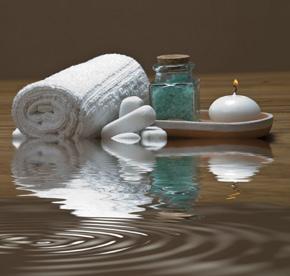
Somerville Myotherapy and Pilates studio 1/37 Simcock St, Somerville 03 5977 6938
Natural Health and wellness clinic
12 Eromosa rd east Somerville 03 5977 7342
Thrive yoga for tots teens and in between
$275 UNLIMITED CATEGORIES
$550 WEB LOGO LINK RECEIVE FREE DIRECTORY LISTINGS IN MULTIPLE CATEGORIES
- Please Print
www.gohealthier.com.au 99 TAX INVOICE
99150525723
ABN
EMAIL:
PAYMENT DETAILS AUTHORISATION - Please Print $220 ANNUAL LISTING $275
CATEGORIES No. OF PAYMENTS FIRST PAYMENT AMOUNTS: LAST PAYMENT CREDIT CARD TYPE: CARD No. NAME ON CARD: PRINT NAME: TITLE HELD: VISA MASTERCARD CHEQUE EFT CREDIT CARD BUSINESS NAME PHONE ADDRESS FAX SUBURB STATE POSTCODE MOBILE EMAIL N/A ALT PHONE N/A WEBSITE CATEGORY / IES BUSINESS NAME ADDRESS PHONE NUMBER WEBSITE ABN EXPIRY DATE: MM / YY CV CODE: +1.15% inc GST Merchant fee 3 digit code on back of card CATEGORY /
BUSINESS NAME ADDRESS PHONE NUMBER WEBSITE Take
TAX INVOICE
sales@gohealthier.com.au CUSTOMER DETAILS
UNLIMITED CATEGORIES $550 WEB LOGO LINK RECEIVE FREE DIRECTORY LISTINGS IN MULTIPLE
IES
EMAIL:
sales@gohealthier.com.au
PAYMENT
AUTHORISATION
CUSTOMER DETAILS
DETAILS
$220 ANNUAL LISTING
No. OF PAYMENTS FIRST PAYMENT AMOUNTS: LAST PAYMENT CREDIT CARD TYPE: CARD No. NAME ON CARD: PRINT NAME: TITLE HELD: VISA MASTERCARD CHEQUE EFT CREDIT CARD BUSINESS NAME PHONE ADDRESS FAX SUBURB STATE POSTCODE MOBILE EMAIL N/A ALT PHONE N/A WEBSITE CATEGORY / IES BUSINESS NAME ADDRESS PHONE NUMBER WEBSITE ABN EXPIRY DATE: MM / YY CV CODE: +1.15% inc GST Merchant fee 3 digit code on back of card - -TAX ADVERTISING AGREEMENT
HEAD OFFICE: 13a Fuji
PHONE: (03) 8456 6570 FAX: (03) 8456 6580 WEB: www.gohealthier.com.au EMAIL: sales@gohealthier.com.au CUSTOMER DETAILS PAYMENT DETAILS AUTHORISATION - Please Print $220 ANNUAL LISTING $275 UNLIMITED CATEGORIES $550 WEB LOGO FREE DIRECTORY IN MULTIPLE CATEGORIES No. OF PAYMENTS FIRST PAYMENT AMOUNTS: LAST PAYMENT CREDIT CARD TYPE: CARD No. NAME ON CARD: VISA MASTERCARD CHEQUE EFT CREDIT CARD BUSINESS NAME PHONE ADDRESS FAX SUBURB STATE POSTCODE MOBILE EMAIL N/A ALT PHONE N/A WEBSITE CATEGORY / IES BUSINESS NAME ADDRESS PHONE NUMBER WEBSITE ABN EXPIRY DATE: MM / YY CV CODE: +1.15% inc GST Merchant fee 3 digit code on back of card / 2019 DIRECTORY LAUNCHING SOON! facebook.com/gohealthiermagazine
Cres. Mornington, VIC 3931
www.gohealthier.com.au www.gohealthier.com.au 3 Business Directory Business Directory Yoga SomervilleMyotherapyandPilatesstudio 1/37 Simcock Somerville 03 5977 6938 Natural Health and wellness clinic 12 Eromosa rd Somerville 03 5977 7342 Thriveyogafortotsteensandinbetween St. Marks Hall. 50 Barkly St, Mornington www.thrive-yoga.com.au SomervilleMyotherapyandPilatesstudio 1/37 Simcock St, Somerville 03 5977 6938 Natural Health and wellness clinic Eromosa rd east Somerville 03 5977 7342 Thriveyogafortotsteensandinbetween Marks Hall. 50 Barkly St, Mornington www.thrive-yoga.com.au SomervilleMyotherapyandPilatesstudio Simcock St, Somerville 03 5977 6938 Natural Health and wellness clinic Eromosa east Somerville 03 5977 7342 Thriveyogafortotsteensandinbetween St. Marks Hall. 50 Barkly Mornington www.thrive-yoga.com.au SomervilleMyotherapyandPilatesstudio 1/37 Simcock Somerville 03 5977 6938 Natural Health and wellness clinic 12 Eromosa Somerville 03 5977 7342 Thriveyogafortotsteensandinbetween St. Marks Hall. 50 Barkly St, Mornington www.thrive-yoga.com.au SomervilleMyotherapyandPilatesstudio 1/37 Simcock Somerville 03 5977 6938 Natural Health and wellness clinic Eromosa east Somerville 03 5977 7342 Thriveyogafortotsteensandinbetween St. Marks Hall. Barkly Mornington www.thrive-yoga.com.au SomervilleMyotherapyandPilatesstudio 1/37 Simcock Somerville 03 5977 6938 Natural Health and wellness clinic 12 Eromosa rd Somerville 03 5977 7342 Thriveyogafortotsteensandinbetween St. Marks Hall. 50 Barkly St, Mornington www.thrive-yoga.com.au SomervilleMyotherapyandPilatesstudio 1/37 Simcock St, Somerville 03 5977 6938 Natural Health and wellness clinic Eromosa rd east Somerville 03 5977 7342 Thriveyogafortotsteensandinbetween Marks Hall. 50 Barkly St, Mornington www.thrive-yoga.com.au Natural Health and wellness clinic 12 Eromosa rd Somerville 03 5977 7342 Thriveyogafortotsteensandinbetween St. Marks Hall. 50 Barkly St, Mornington www.thrive-yoga.com.au SomervilleMyotherapyandPilatesstudio 1/37 Simcock St, Somerville 03 5977 6938 Natural Health and wellness clinic Eromosa rd east Somerville 03 5977 7342 Thriveyogafortotsteensandinbetween Marks Hall. 50 Barkly St, Mornington www.thrive-yoga.com.au SomervilleMyotherapyandPilatesstudio Simcock St, Somerville 03 5977 6938 Natural Health and wellness clinic Eromosa east Somerville 03 5977 7342 Thriveyogafortotsteensandinbetween St. Marks Hall. Barkly Mornington www.thrive-yoga.com.au SomervilleMyotherapyandPilatesstudio 1/37 Simcock Somerville 03 5977 6938 Natural Health and wellness clinic 12 Eromosa rd Somerville 03 5977 7342 Thriveyogafortotsteensandinbetween St. Marks Hall. 50 Barkly St, Mornington www.thrive-yoga.com.au SomervilleMyotherapyandPilatesstudio 1/37 Simcock St, Somerville 03 5977 6938 BUSINESS DIRECTORY SomervilleMyotherapyandPilatesstudio 1/37 Simcock St, Somerville 03 5977 6938 Natural Health and wellness clinic 12 Eromosa rd east Somerville 03 5977 7342 Thriveyogafortotsteensandinbetween Marks Hall. 50 Barkly St, Mornington www.thrive-yoga.com.au SomervilleMyotherapyandPilatesstudio Simcock St, Somerville 03 5977 6938 Natural Health and wellness clinic Eromosa east Somerville 03 5977 7342 Thriveyogafortotsteensandinbetween St. Marks Hall. 50 Barkly St, Mornington www.thrive-yoga.com.au SomervilleMyotherapyandPilatesstudio 1/37 Simcock Somerville 03 5977 6938 Natural Health and wellness clinic 12 Eromosa east Somerville 03 5977 7342 Thriveyogafortotsteensandinbetween St. Marks Hall. 50 Barkly St, Mornington www.thrive-yoga.com.au SomervilleMyotherapyandPilatesstudio 1/37 Simcock St, Somerville 03 5977 6938 Natural Health and wellness clinic 12 Eromosa rd Somerville 03 5977 7342 Thriveyogafortotsteensandinbetween St. Marks Hall. 50 Barkly St, Mornington www.thrive-yoga.com.au SomervilleMyotherapyandPilatesstudio 1/37 Simcock St, Somerville 03 5977 6938
Areyouinthe
Annuallisting
MISSDON’TOUT!
only$220!

!





























































































































































































































































































